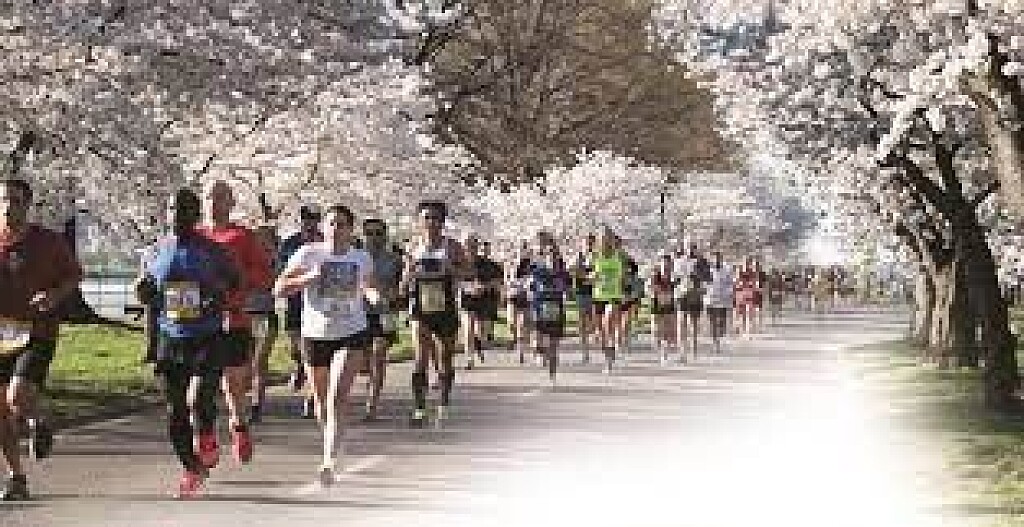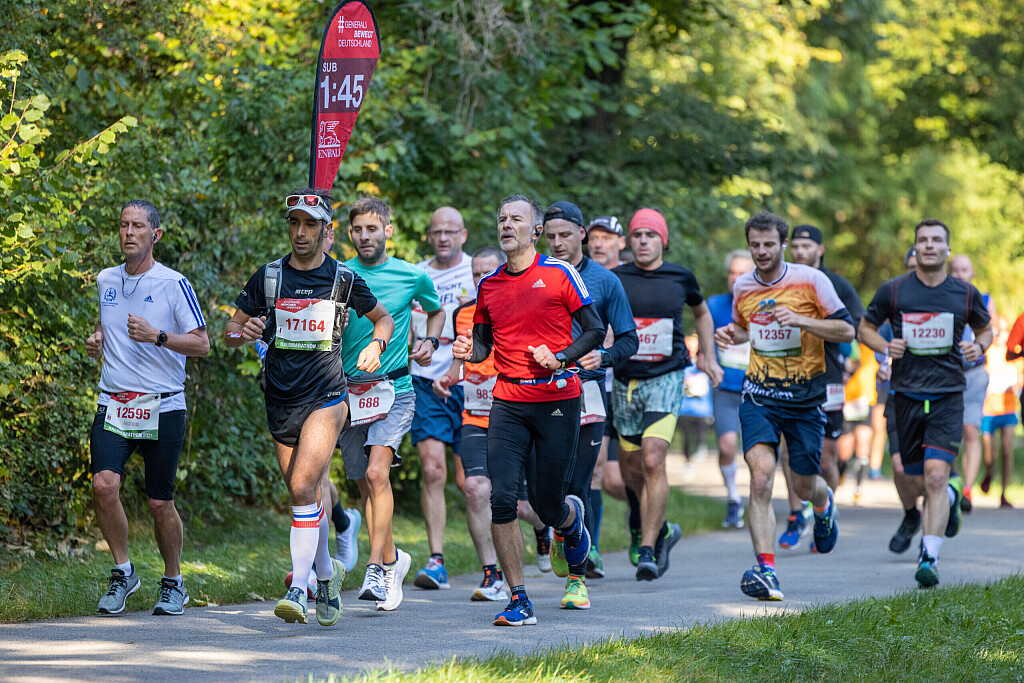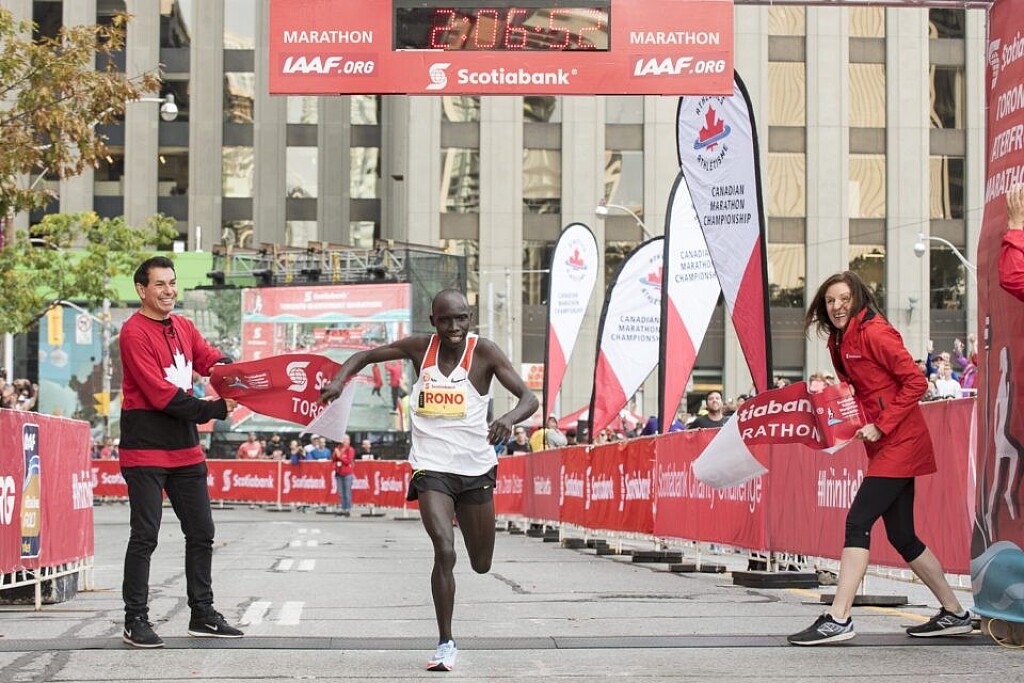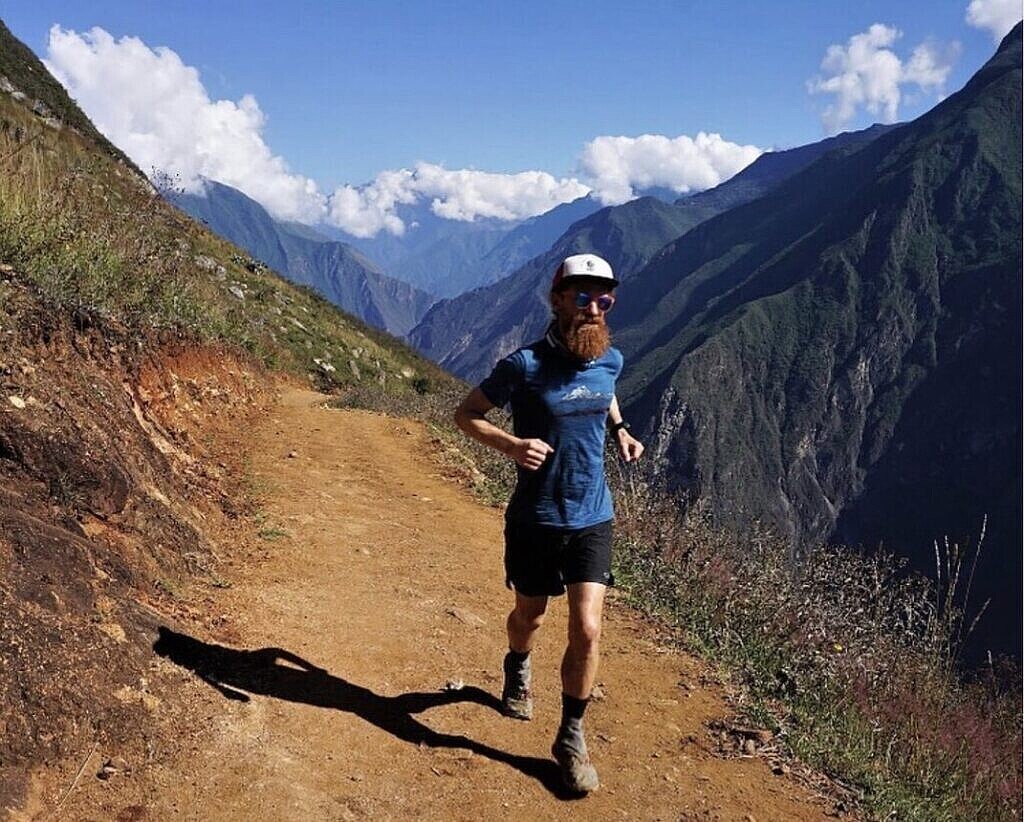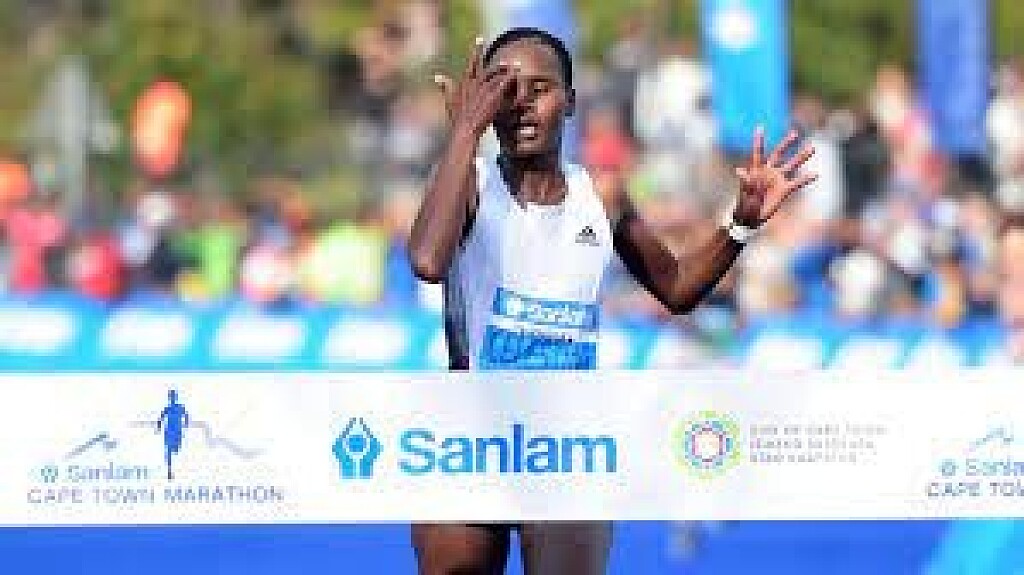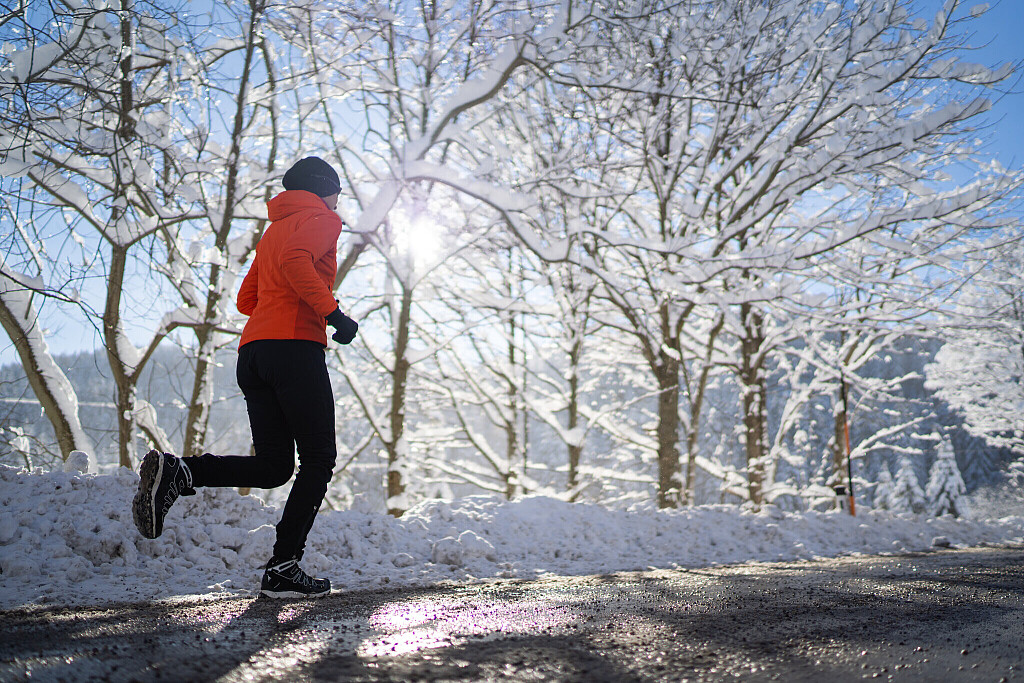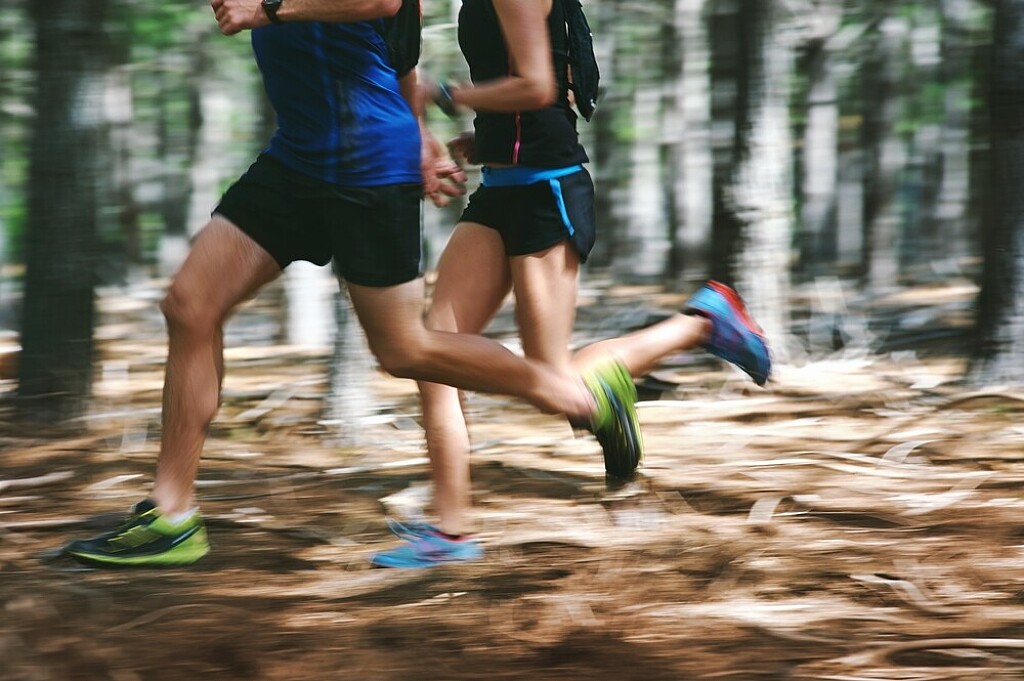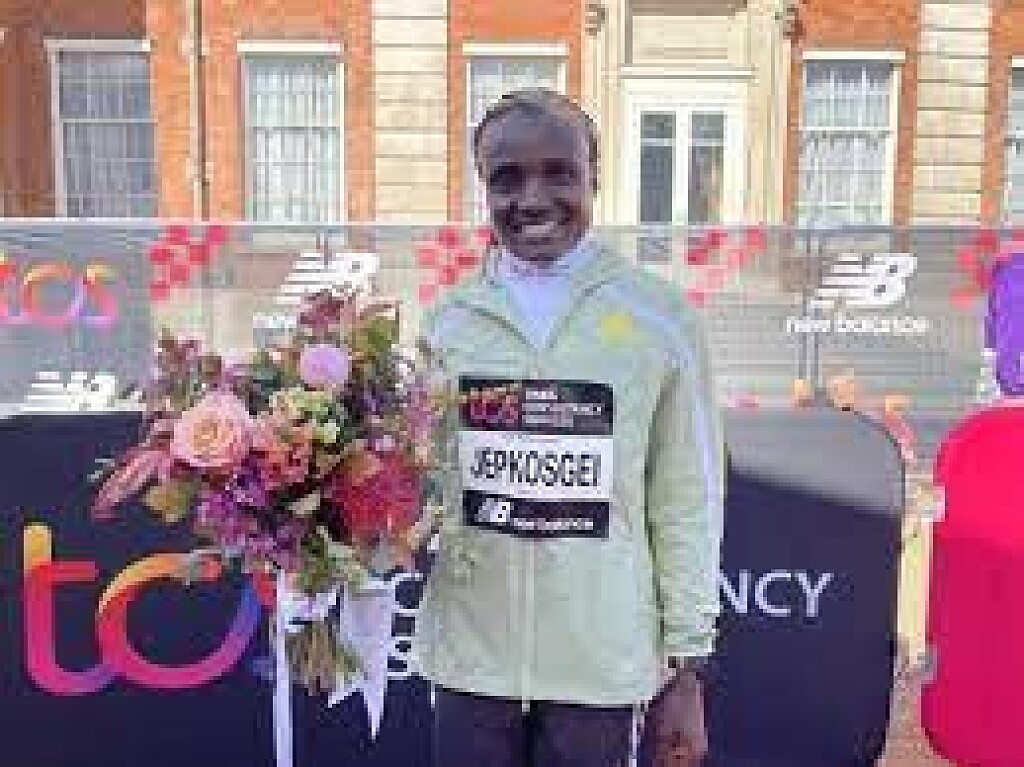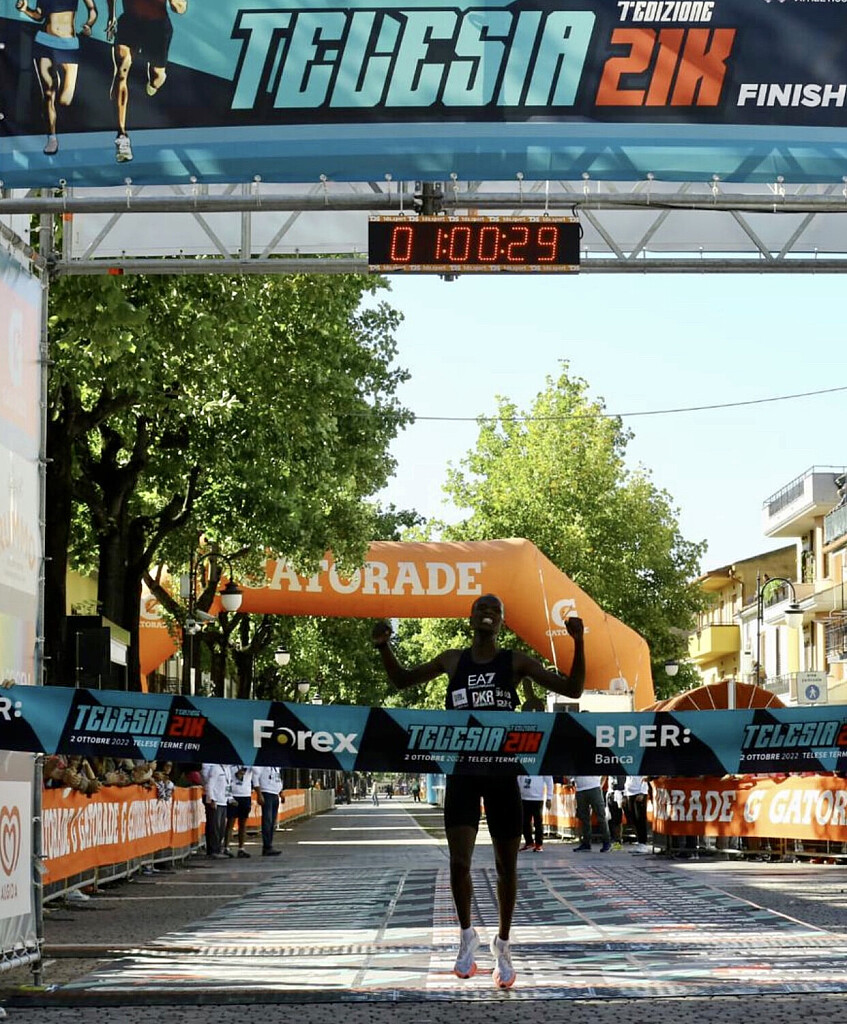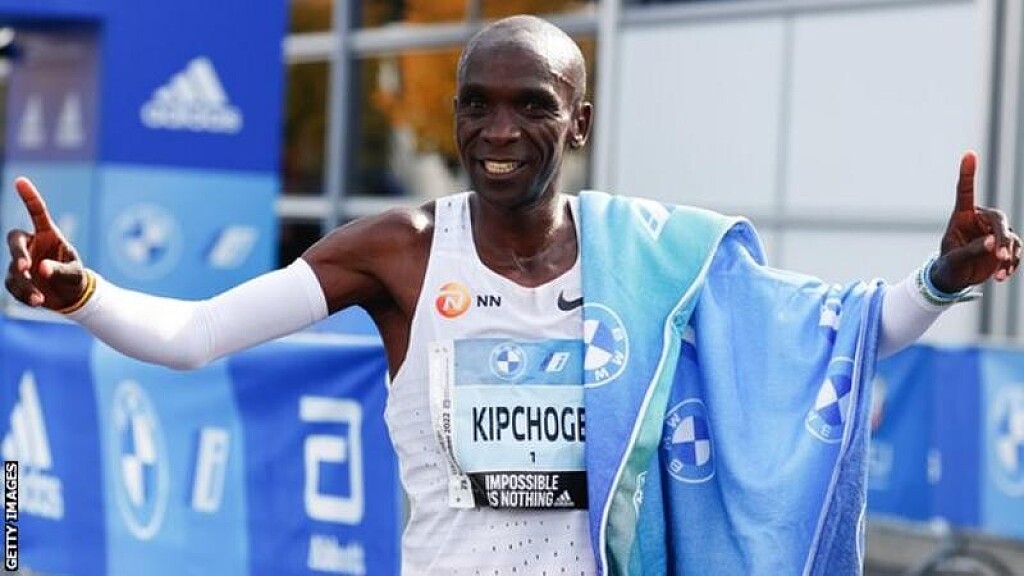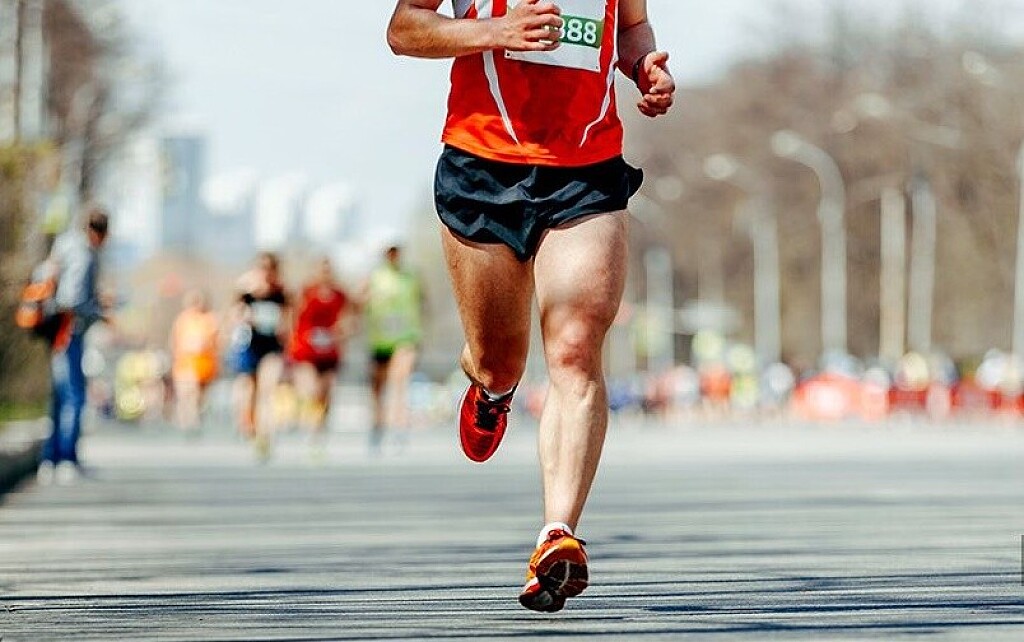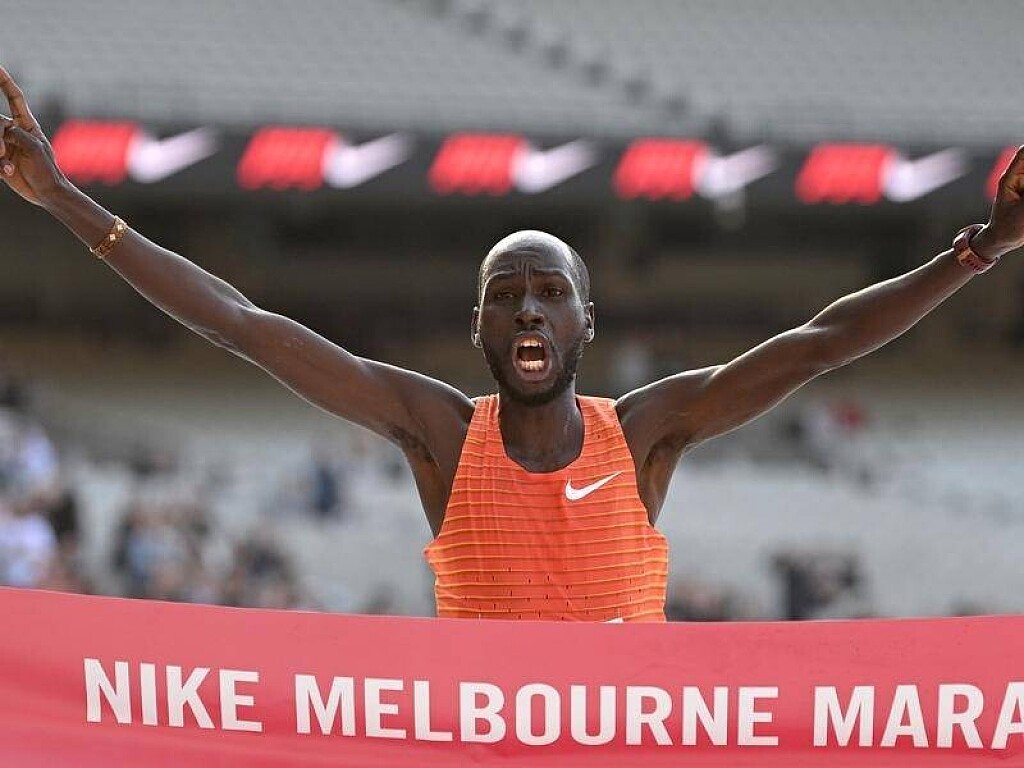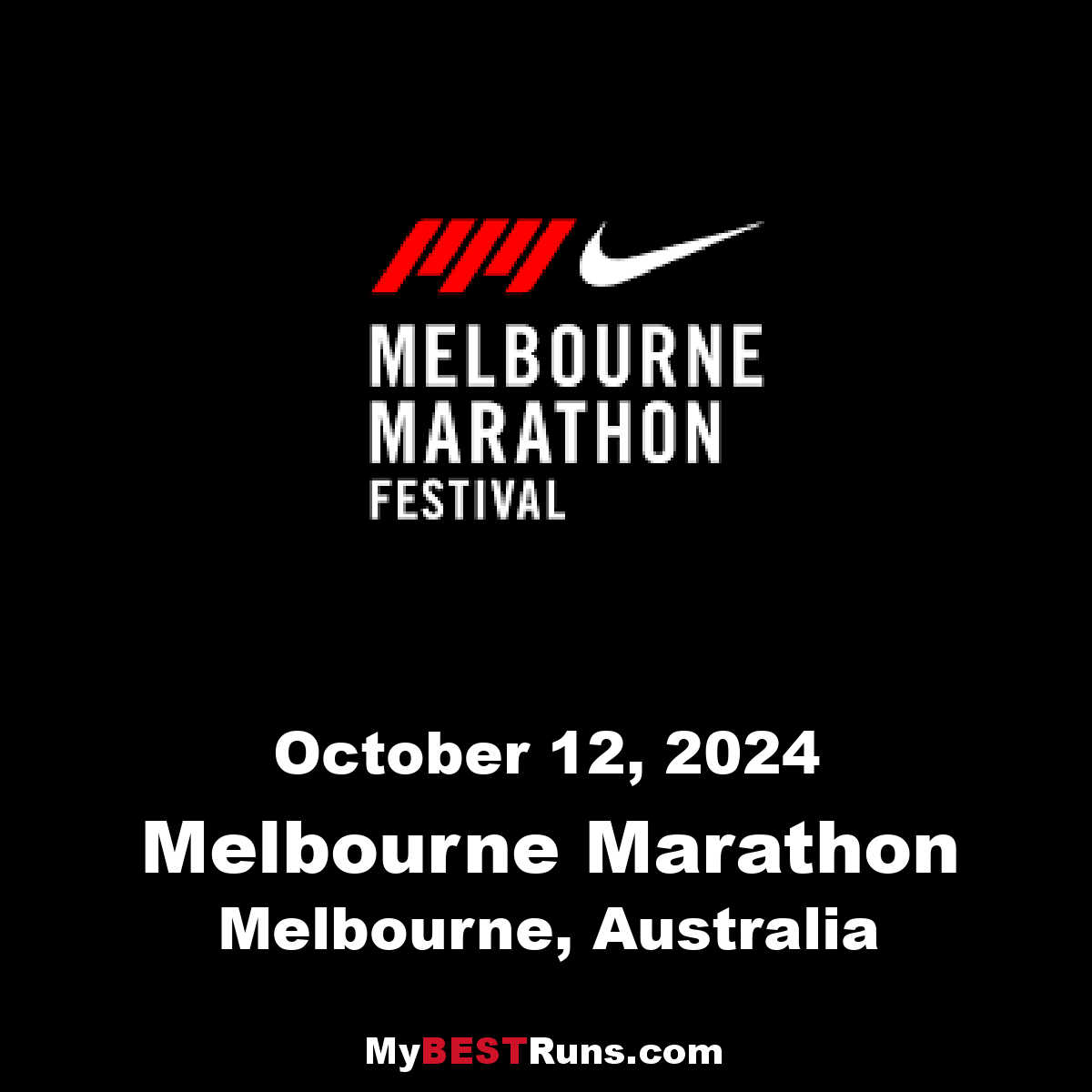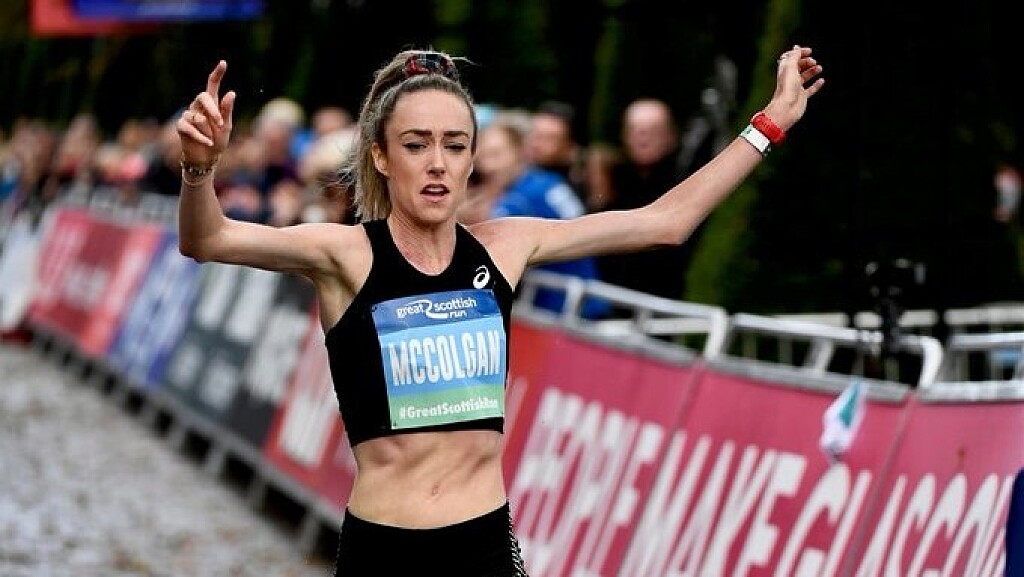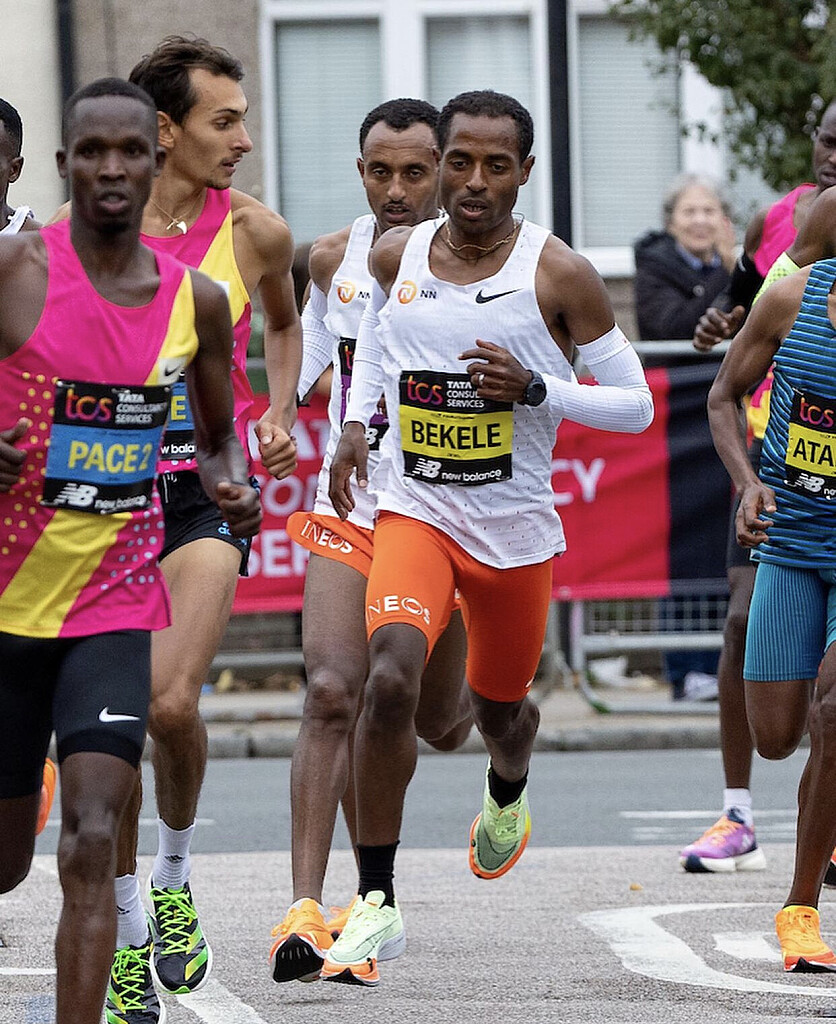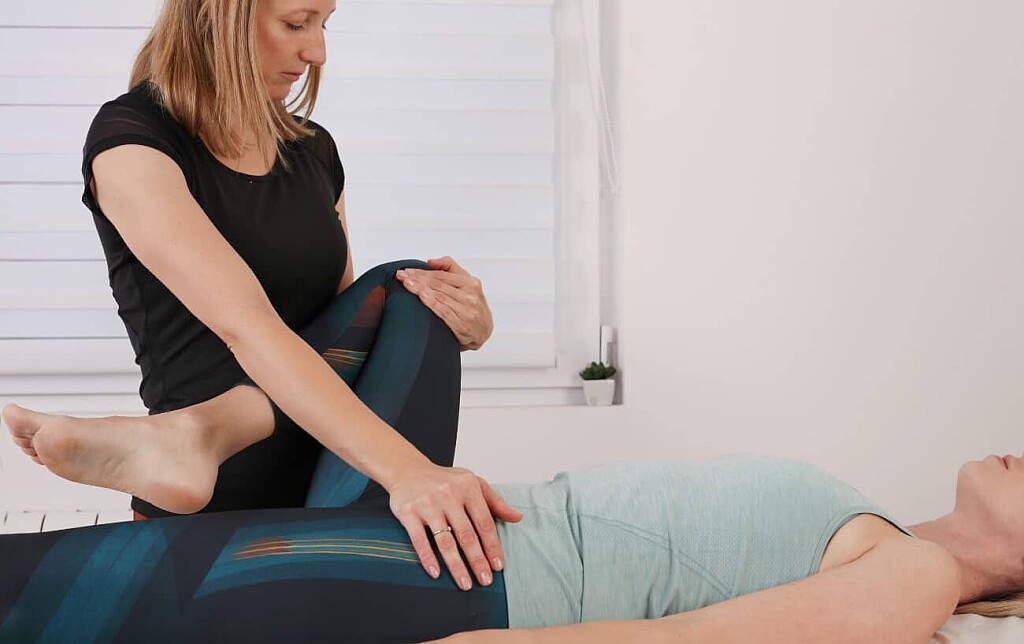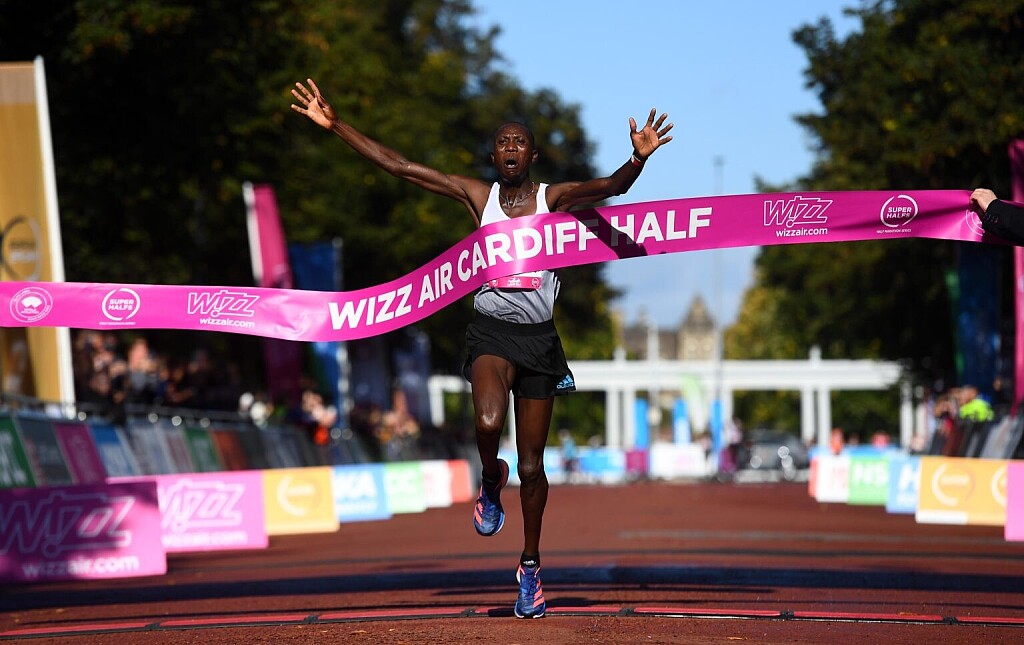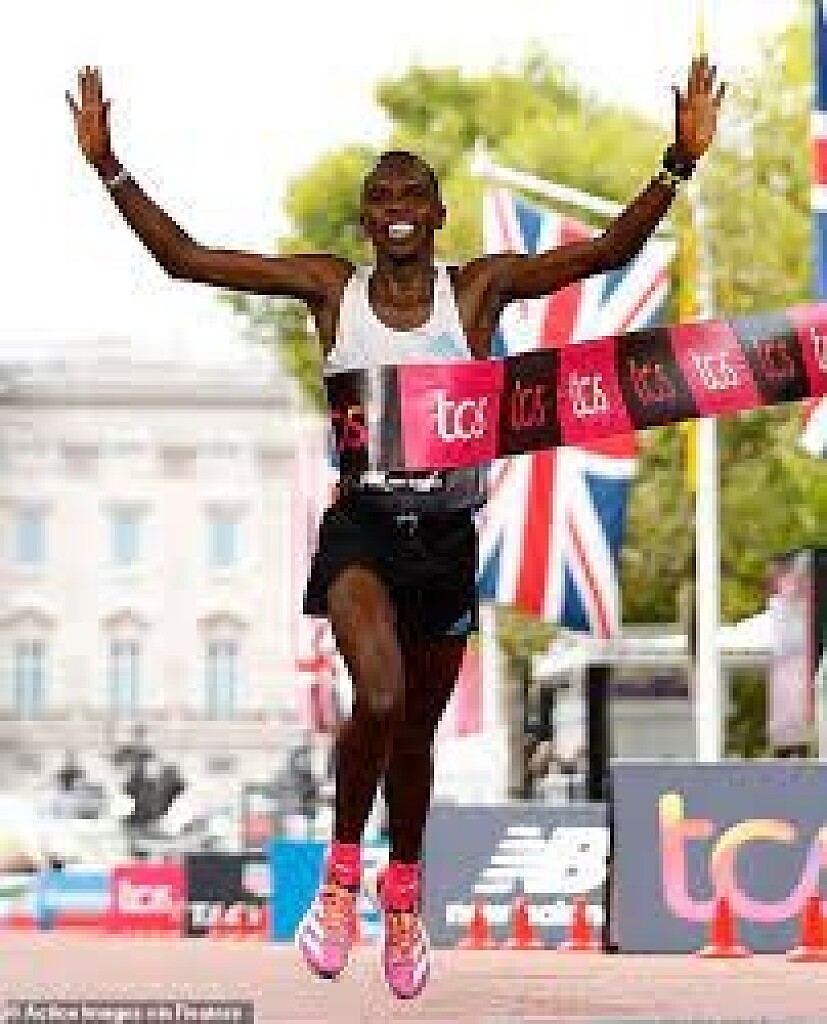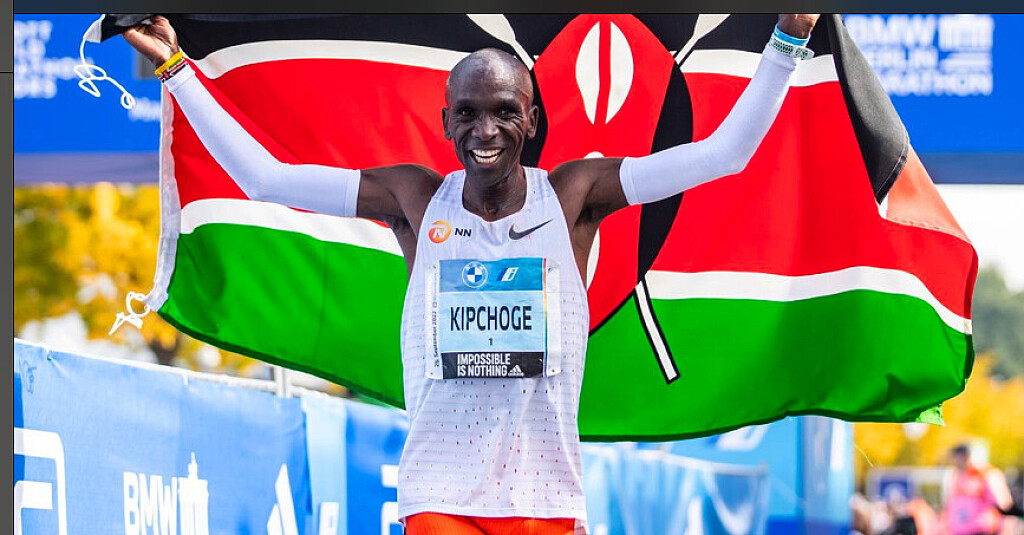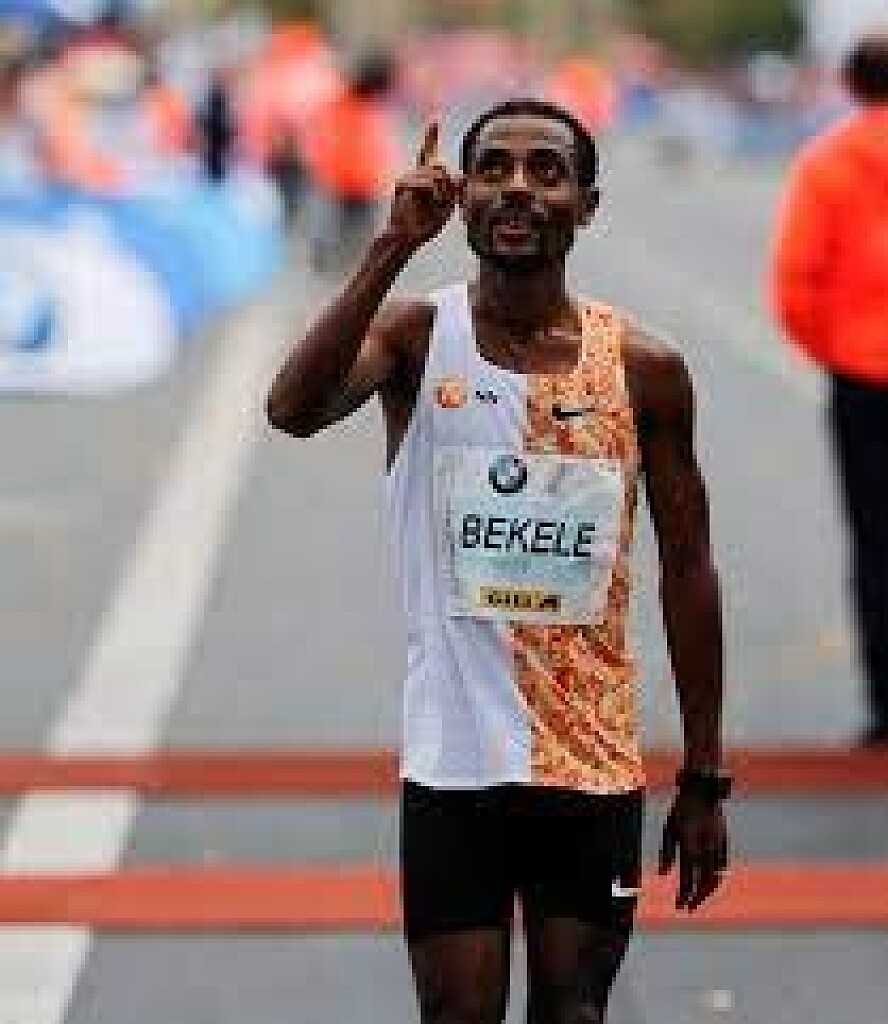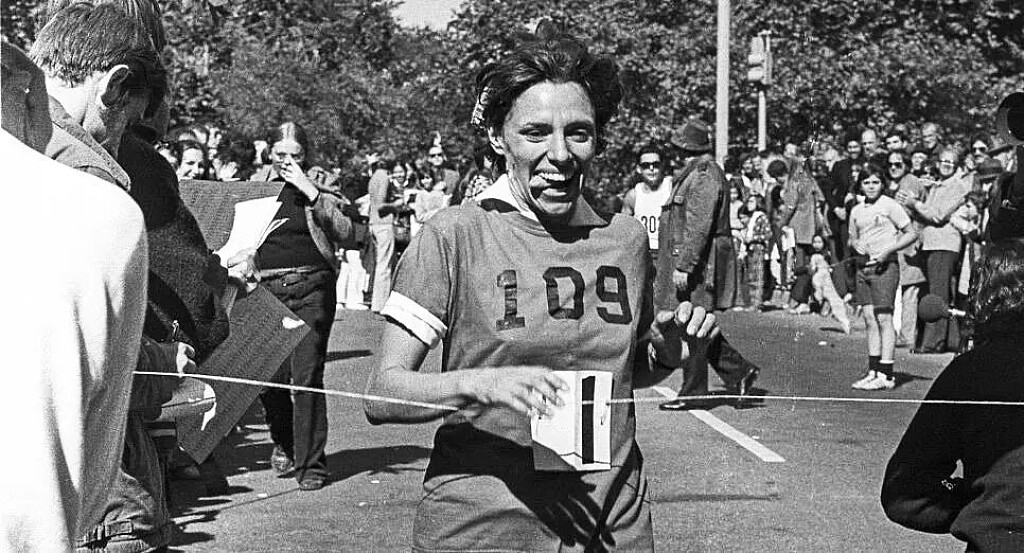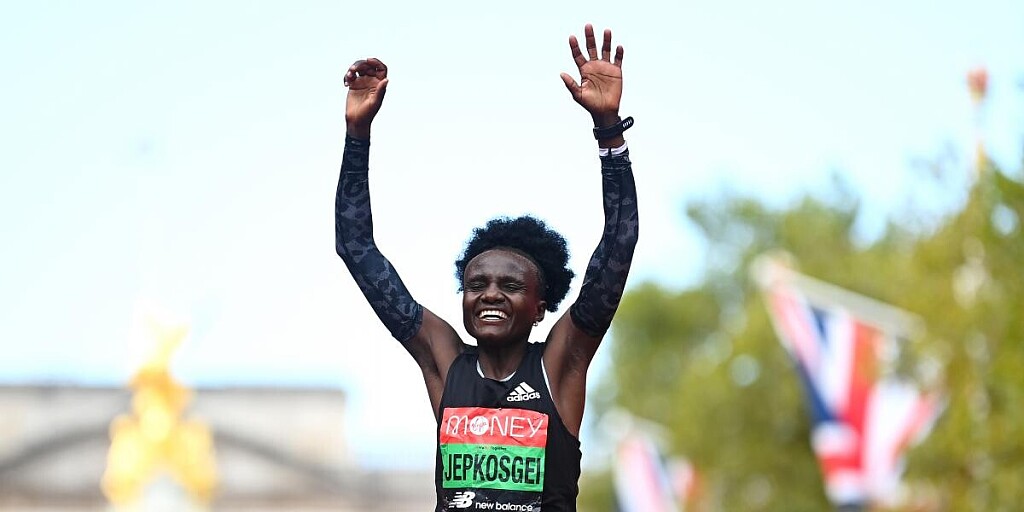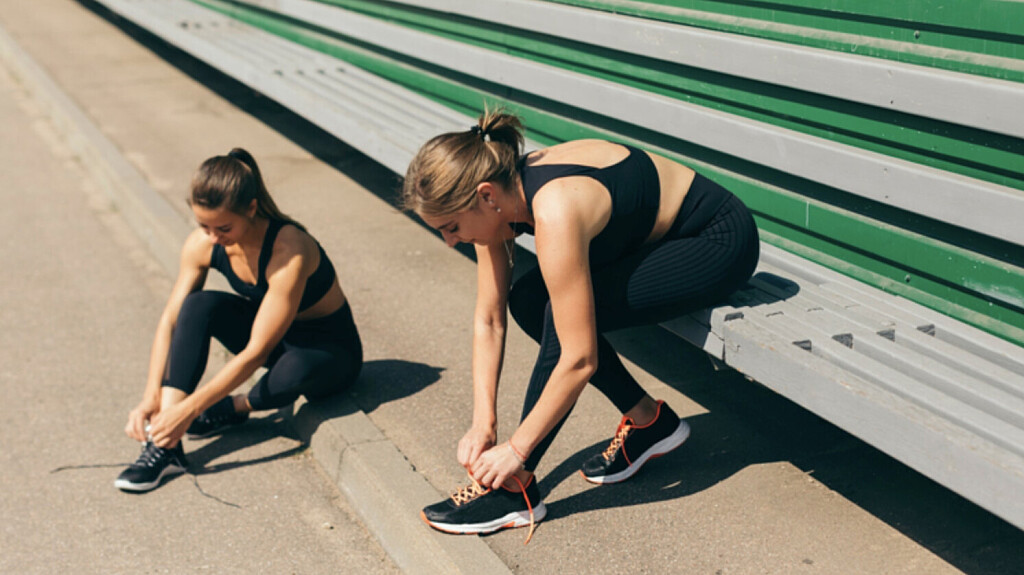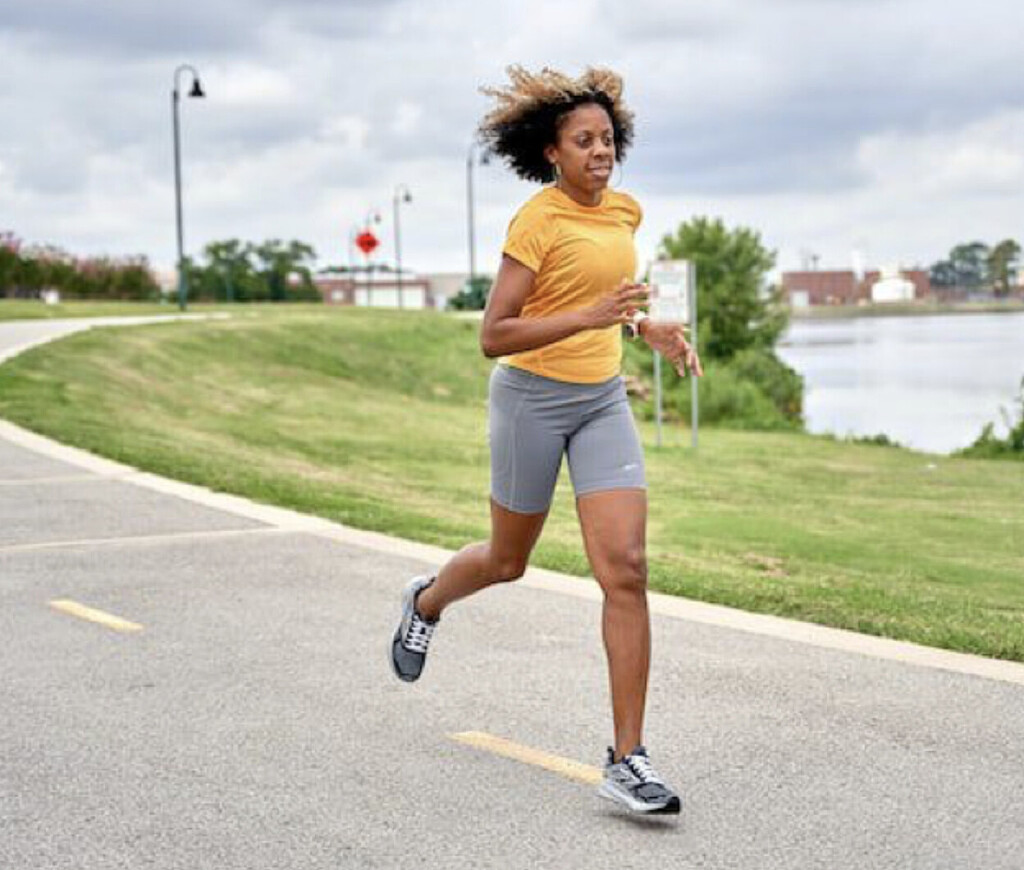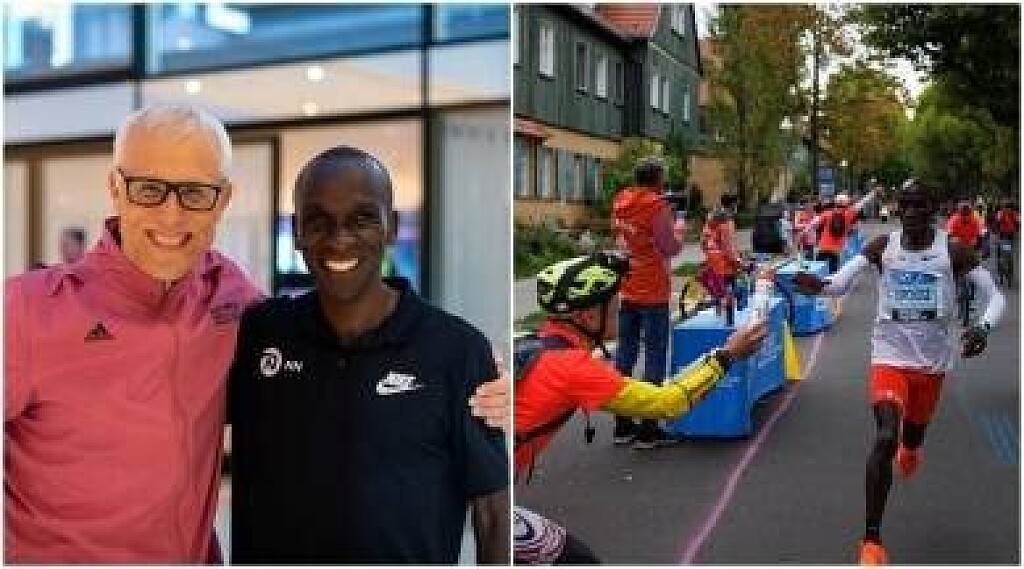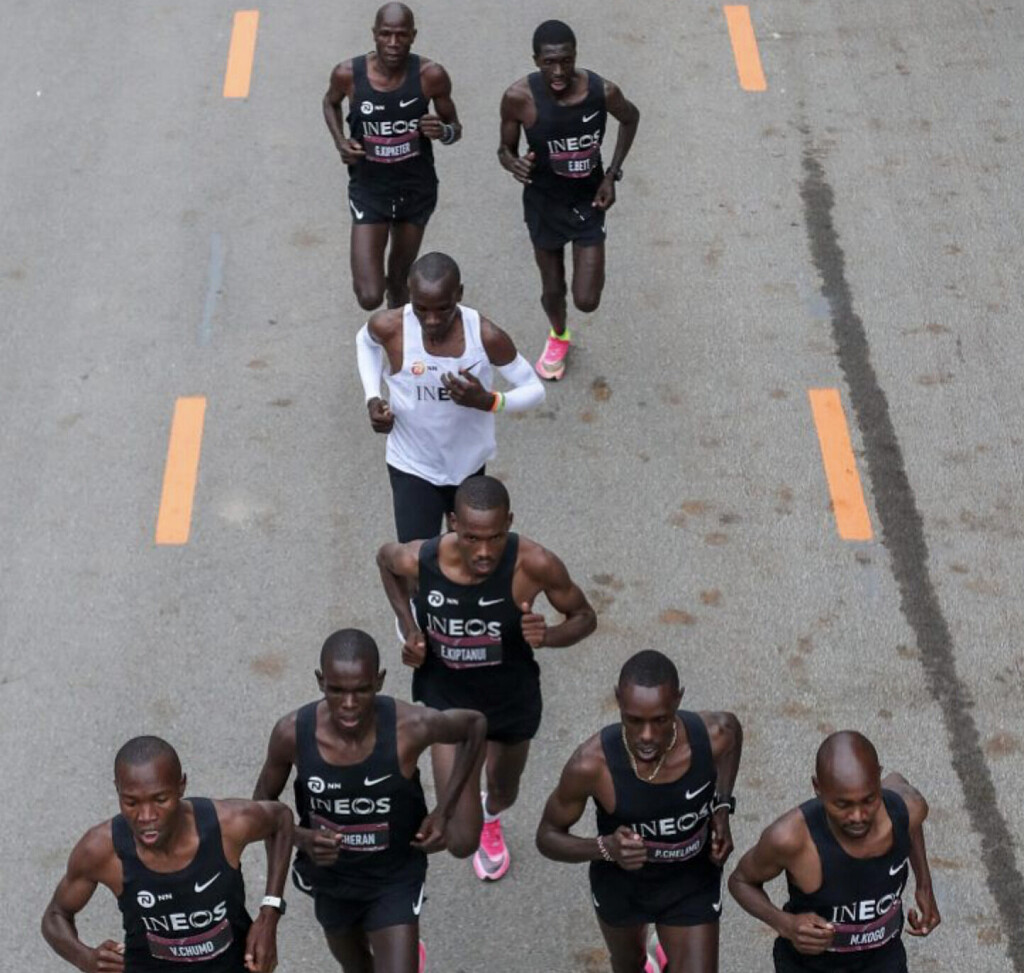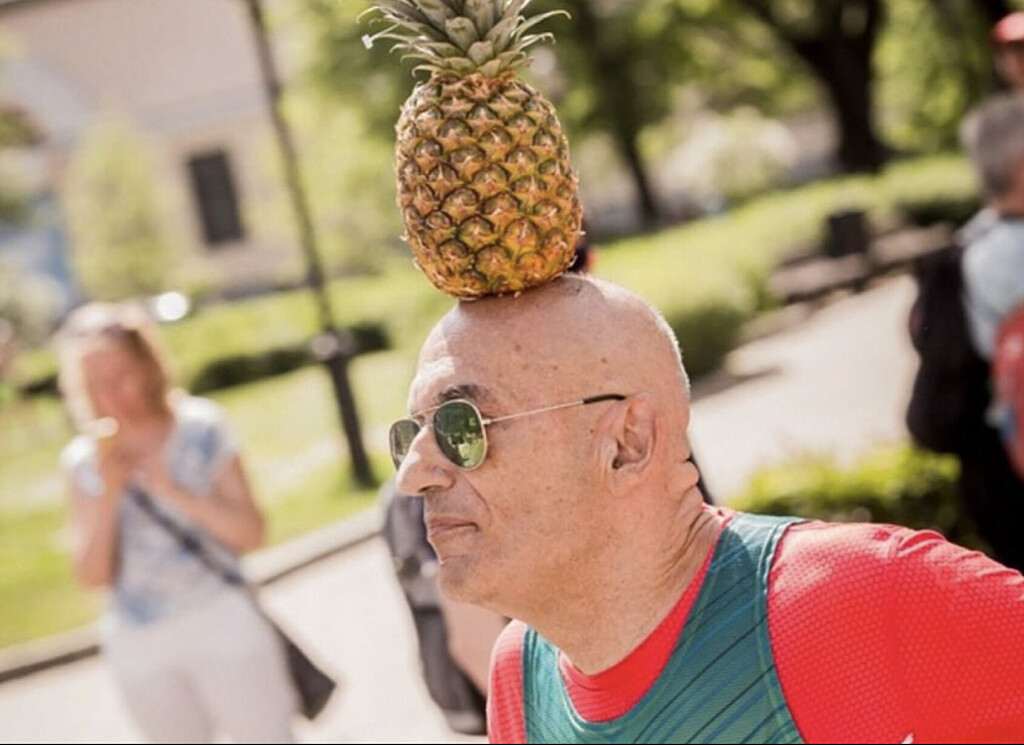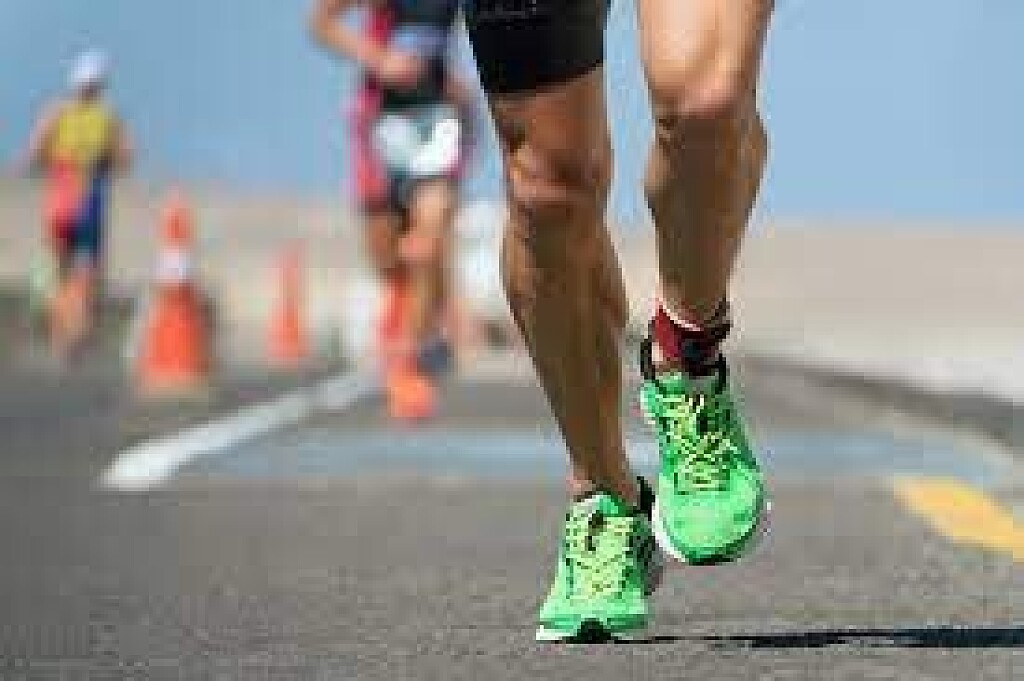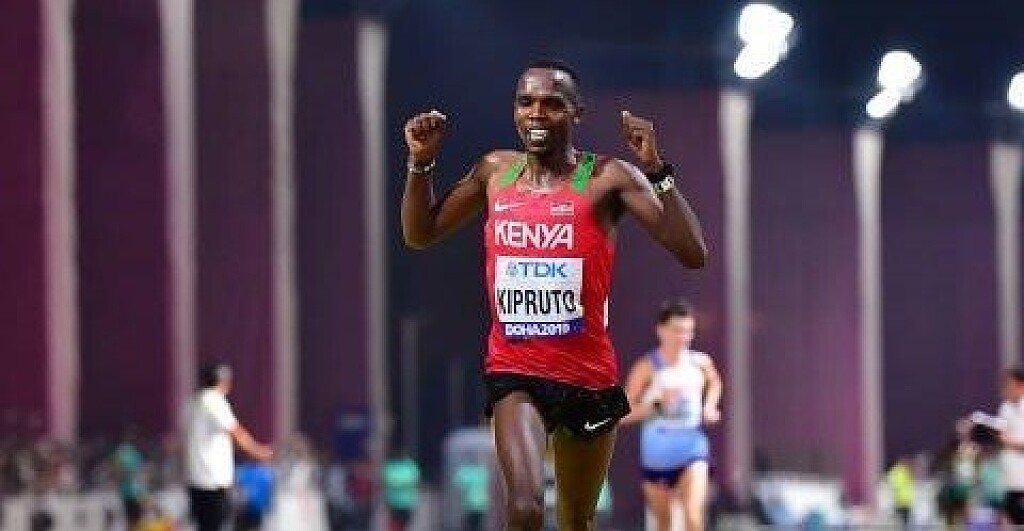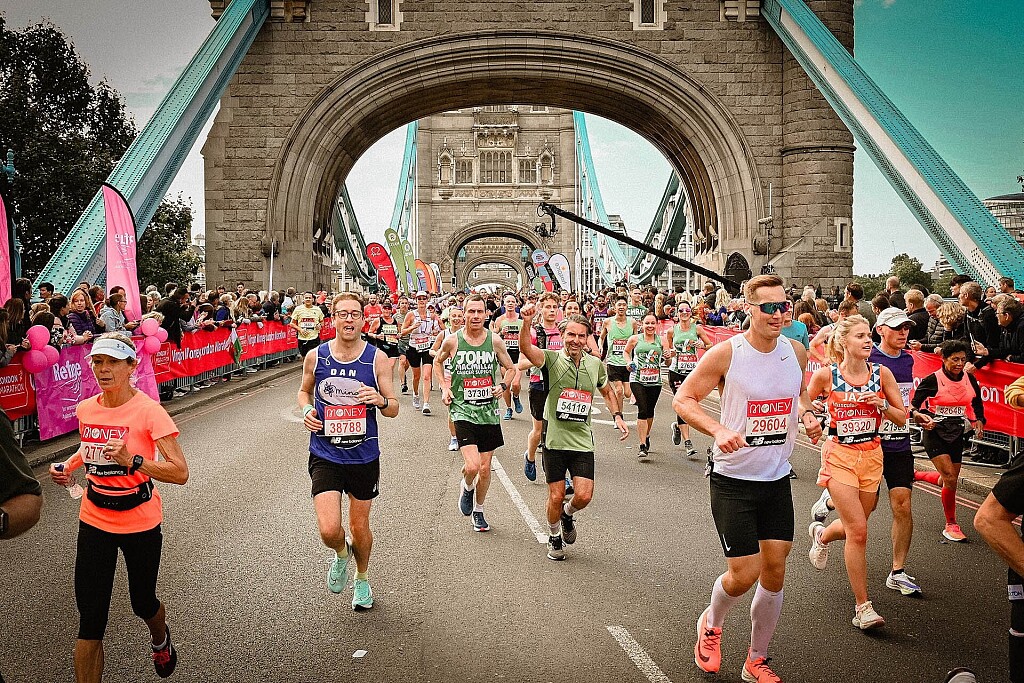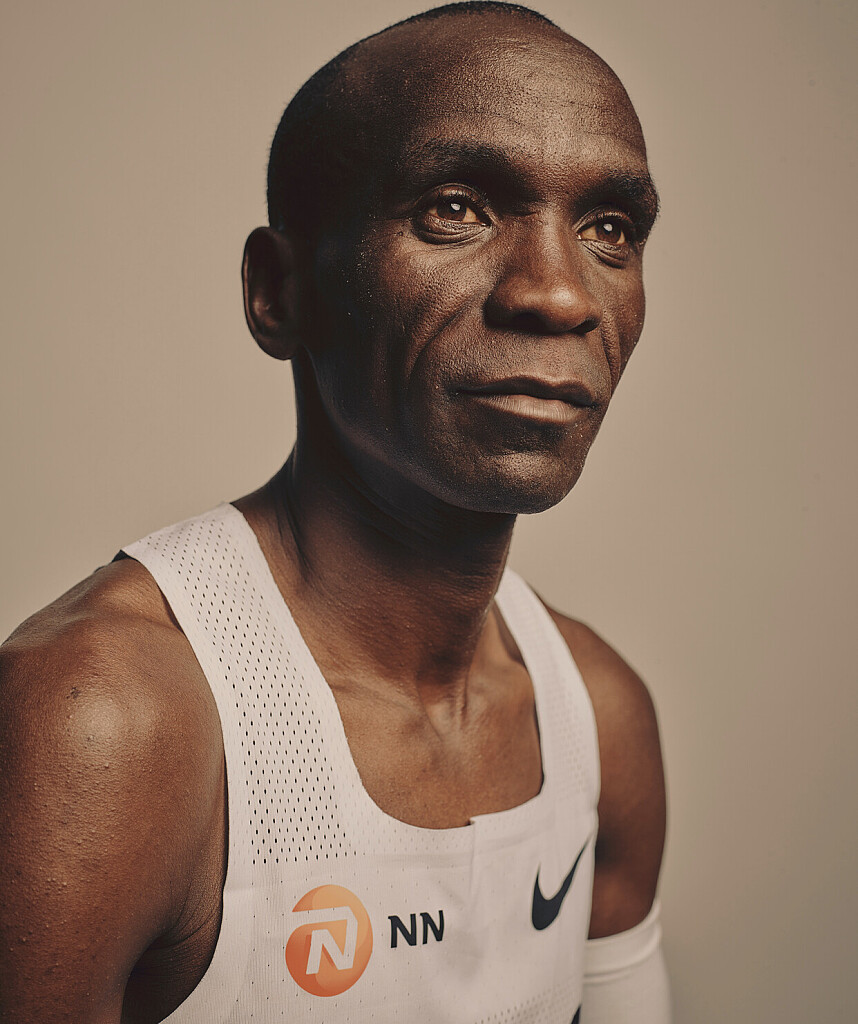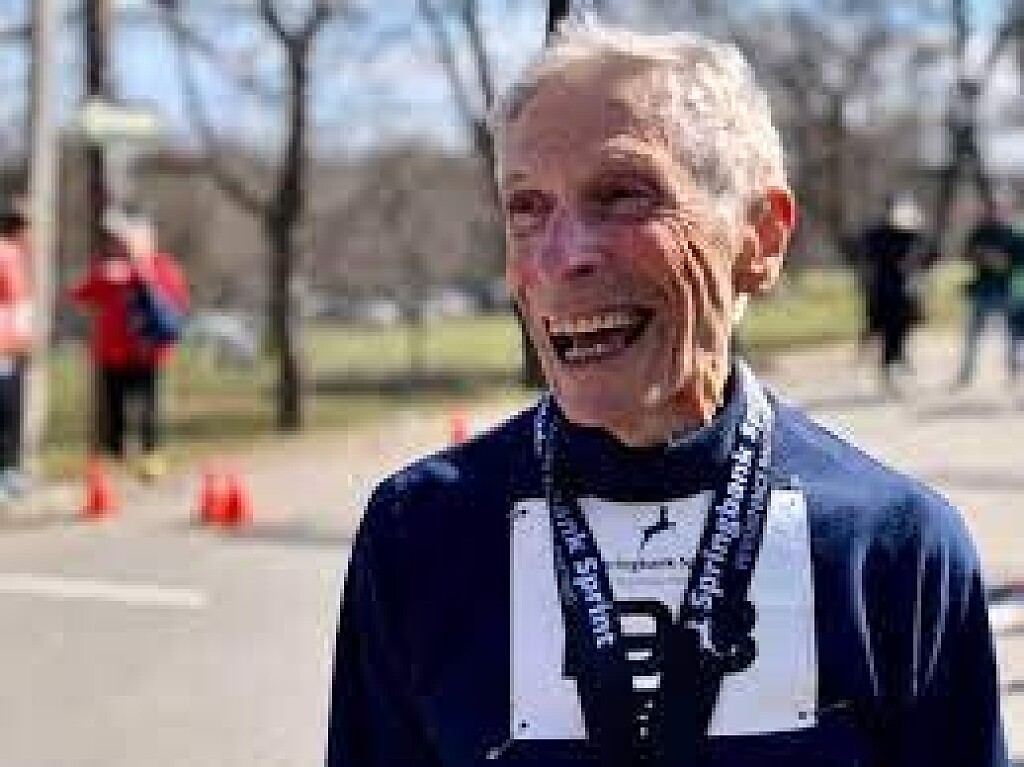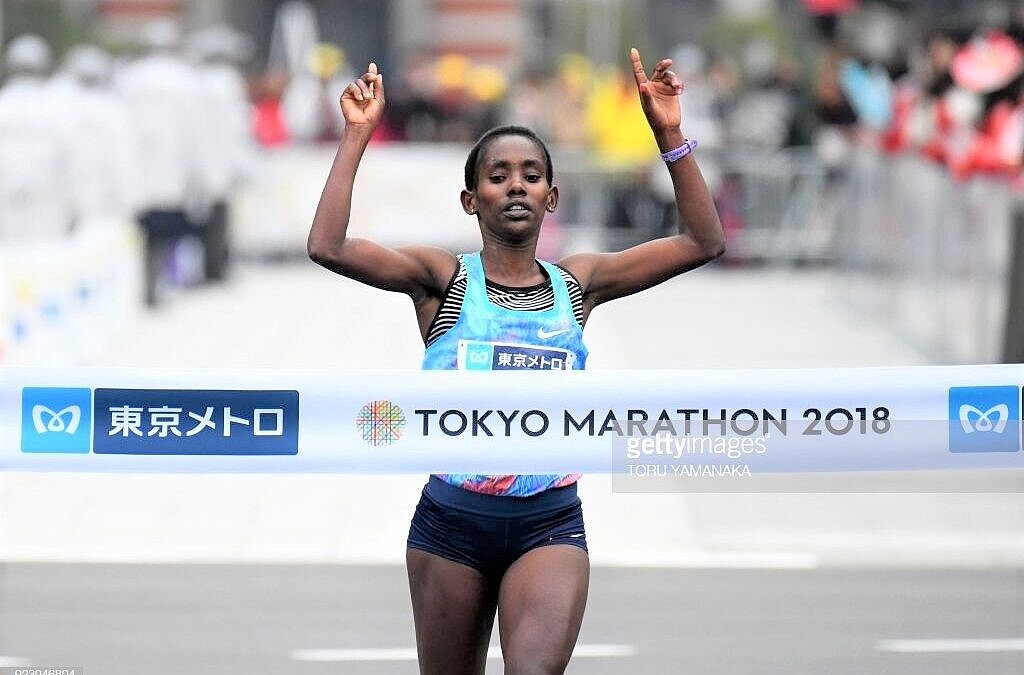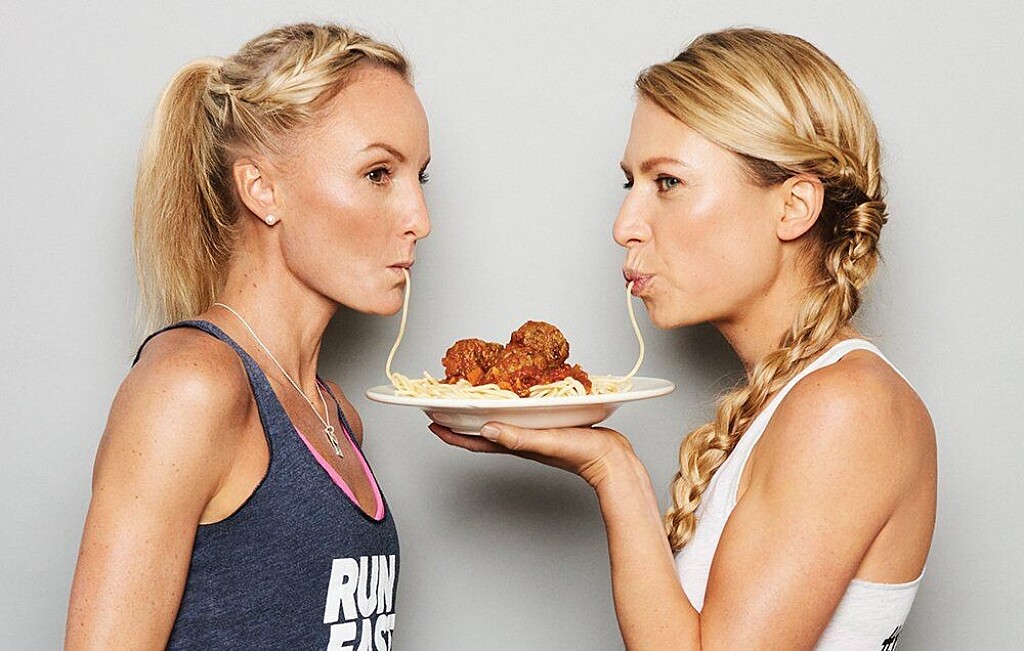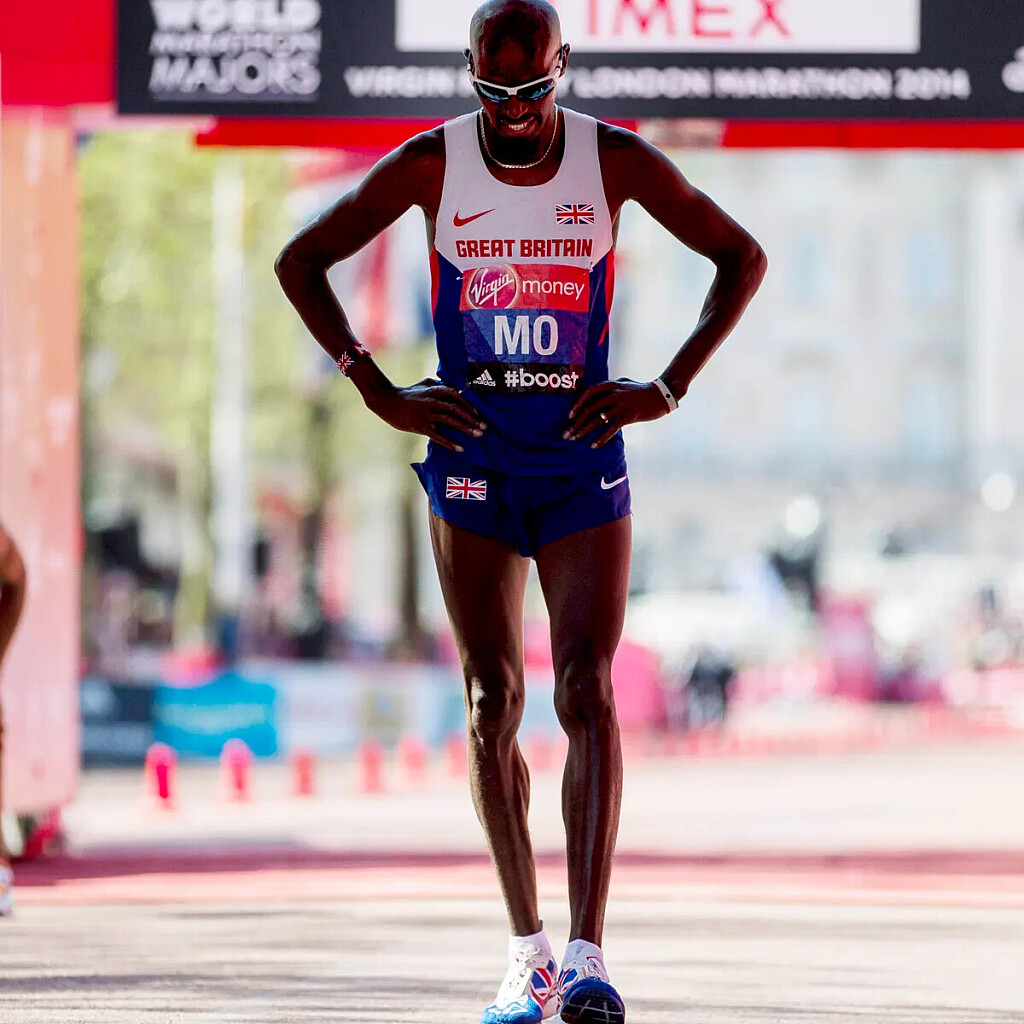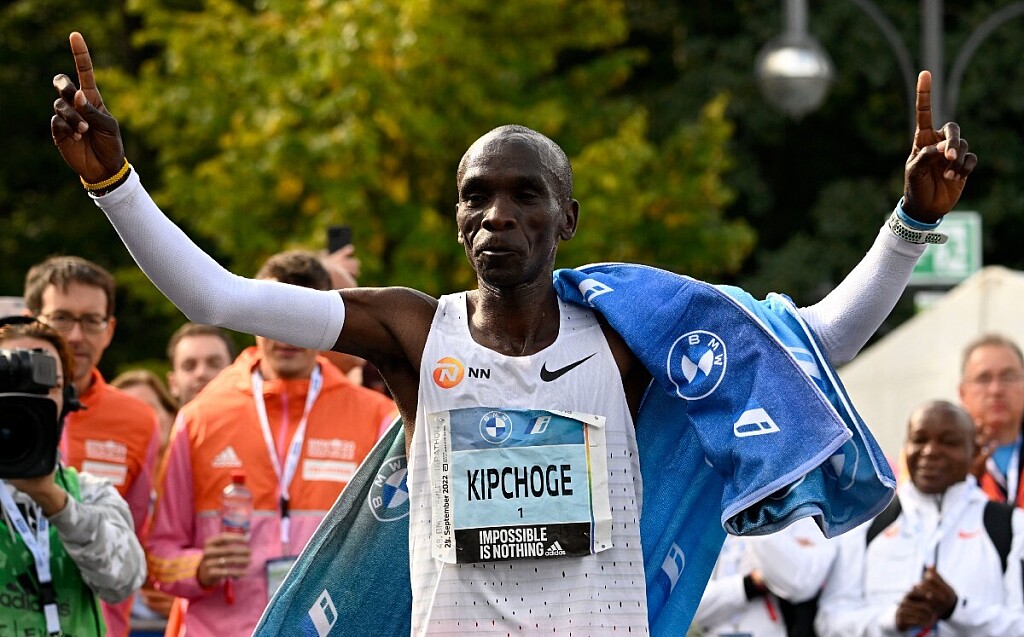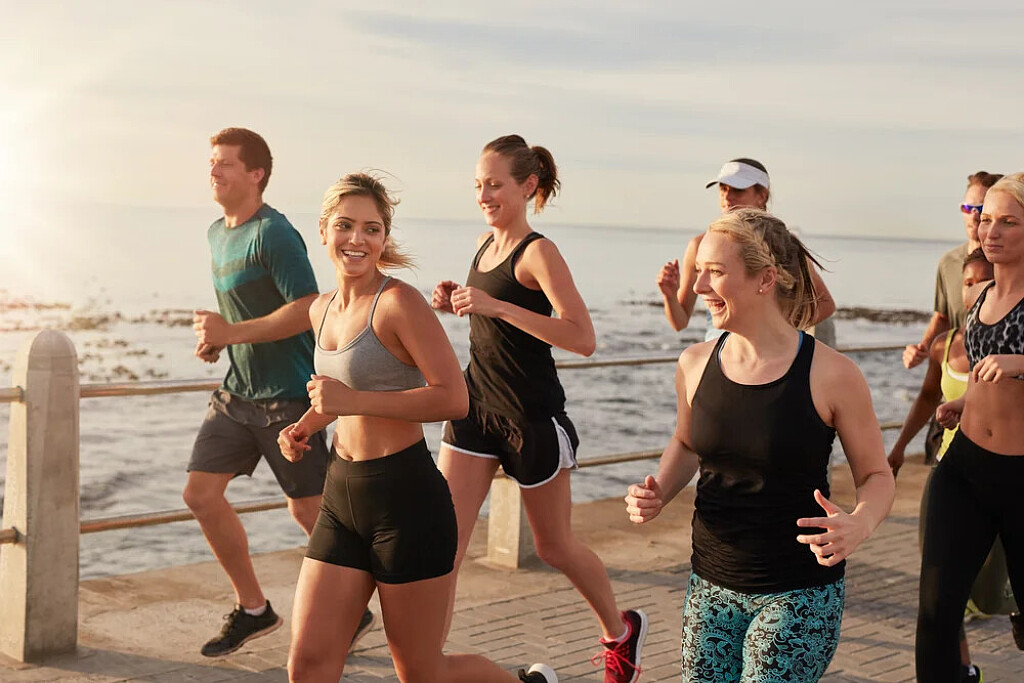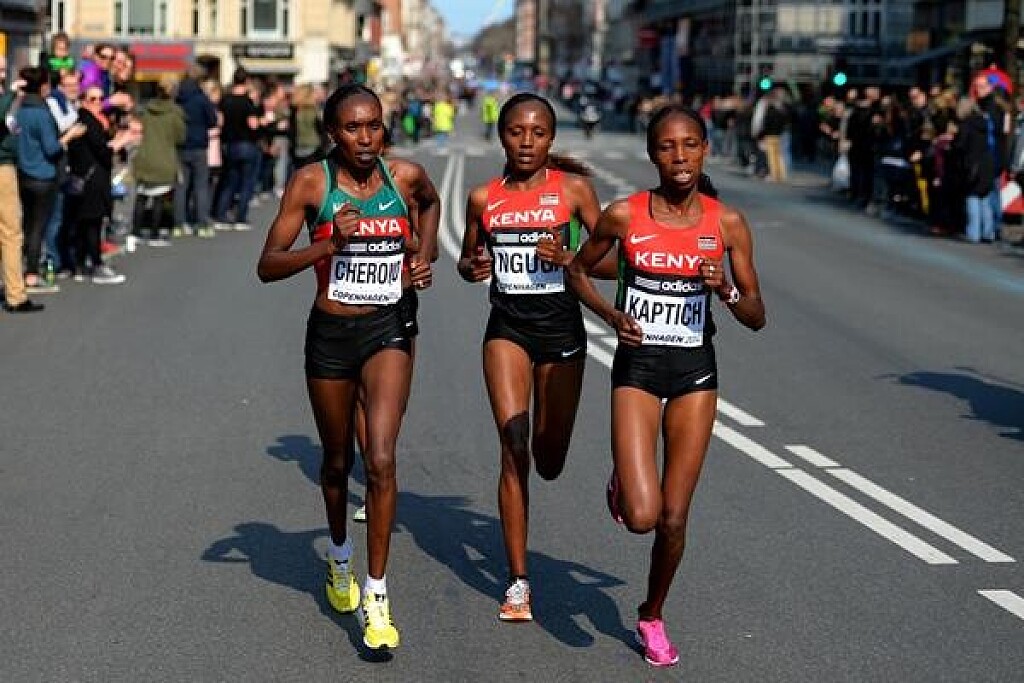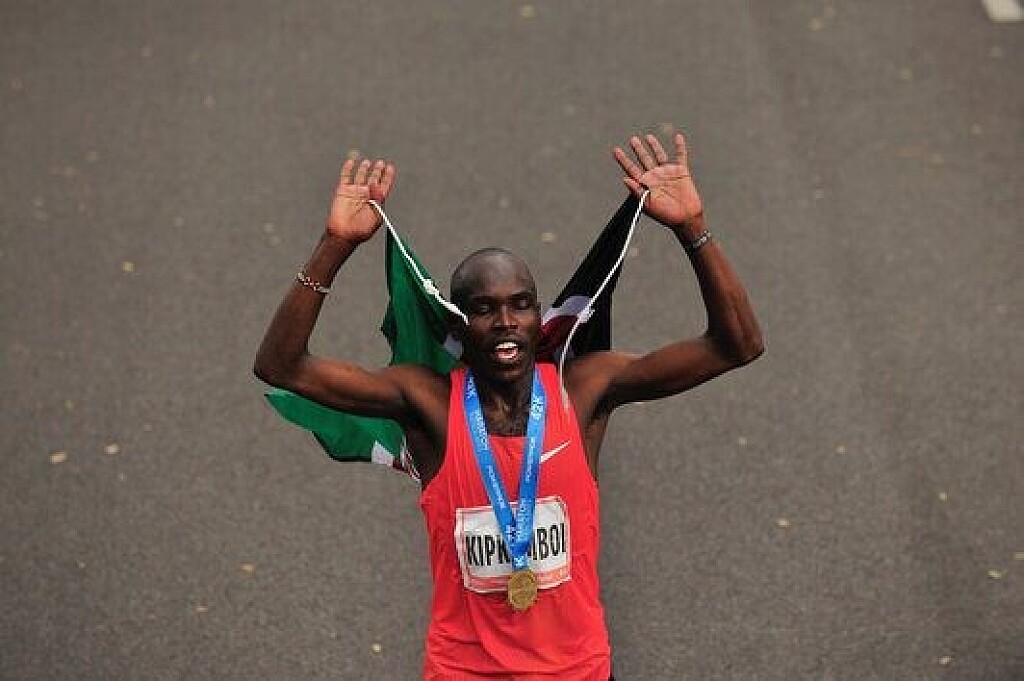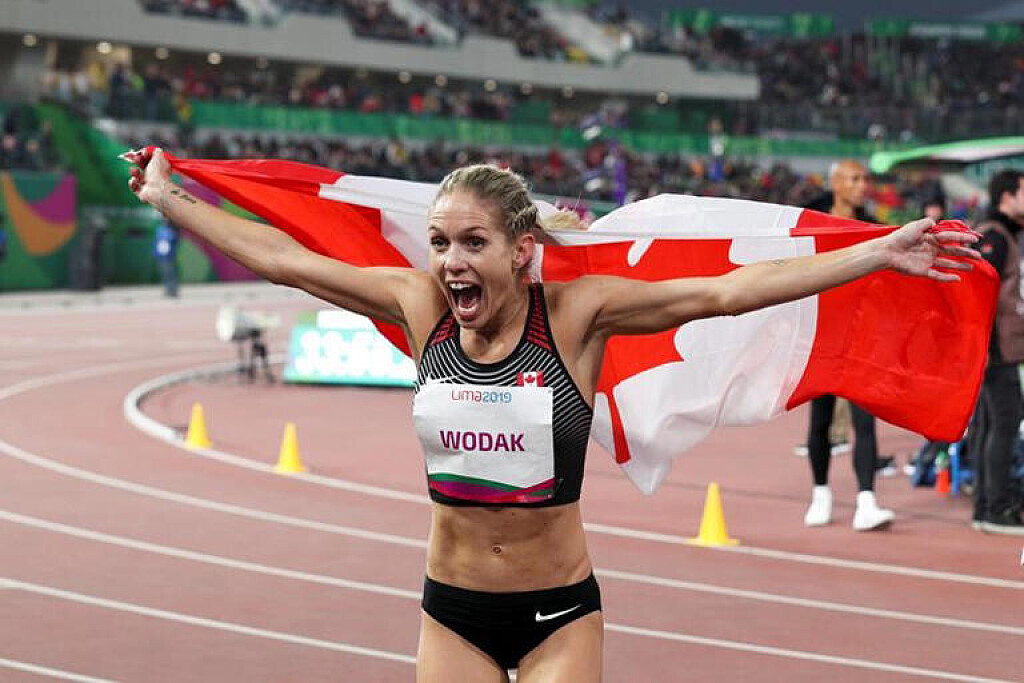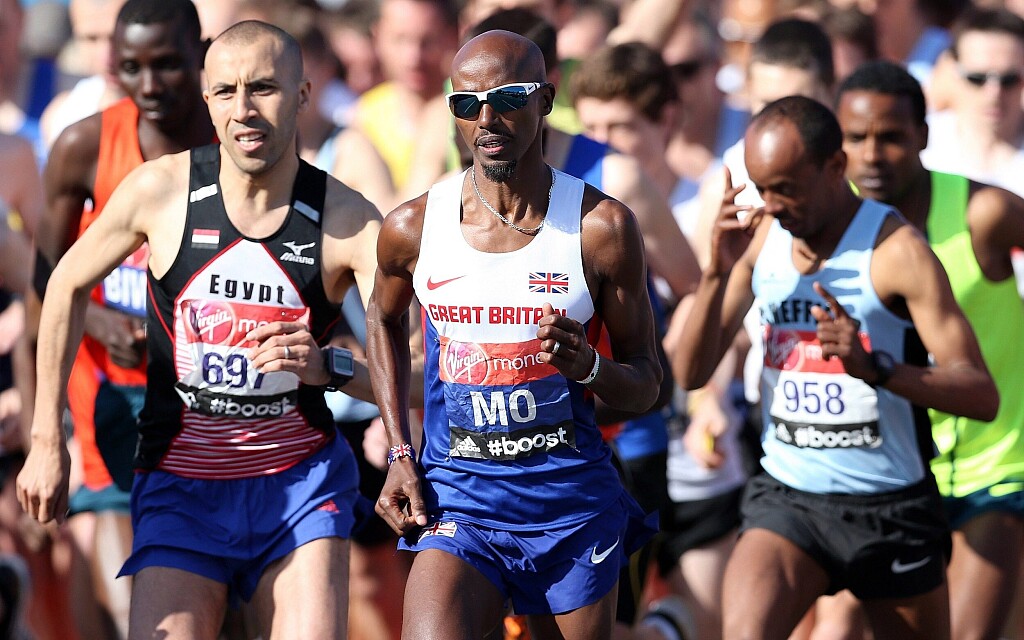Running News Daily
Running News Daily is edited by Bob Anderson in Mountain View, California USA and team in Thika Kenya, La Piedad Mexico, Bend Oregon, Chandler Arizona and Monforte da Beira Portugal. Send your news items to bob@mybestruns.com Advertising opportunities available. Over one million readers and growing. Train the Kenyan Way at KATA Running Retreat Kenya. (Kenyan Athletics Training Academy) in Thika Kenya. Opening in june 2024 KATA Running retreat Portugal. Learn more about Bob Anderson, MBR publisher and KATA director/owner, take a look at A Long Run the movie covering Bob's 50 race challenge.
Index to Daily Posts · Sign Up For Updates · Run The World Feed
Organizers of the 50th running of the Credit Union Cherry Blossom 10 Mile Run announced today that next year’s race will offer a $50,000 record bonus
$50,000 World and American Record bonus pool* and hosting PRRO and RRCA Championships are just a few of many highlights planned to commemorate 50 years of world class road racing in our Nation’s Capital.
October 7, 2022, Washington, DC: Organizers of the 50th running of the Credit Union Cherry Blossom 10 Mile Run (CUCB) announced today that next year’s race will offer a $50,000 record bonus, to be divided equally* among any man and woman setting a World Athletics World Best and/or American 10 mile record at The Runner’s Rite of Spring® on April 2, 2023.
The bonus payouts will be in addition to $69,000 in guaranteed prize money, with $44,000 paid to the top ten men and women in the international field and $25,000 to the top ten American men and women (double dipping allowed for the Americans). The race was one of the first U.S. events to pay prize money back at the dawn of the prize money era in 1984 when the total purse was $13,400, split evenly among the top men and women.
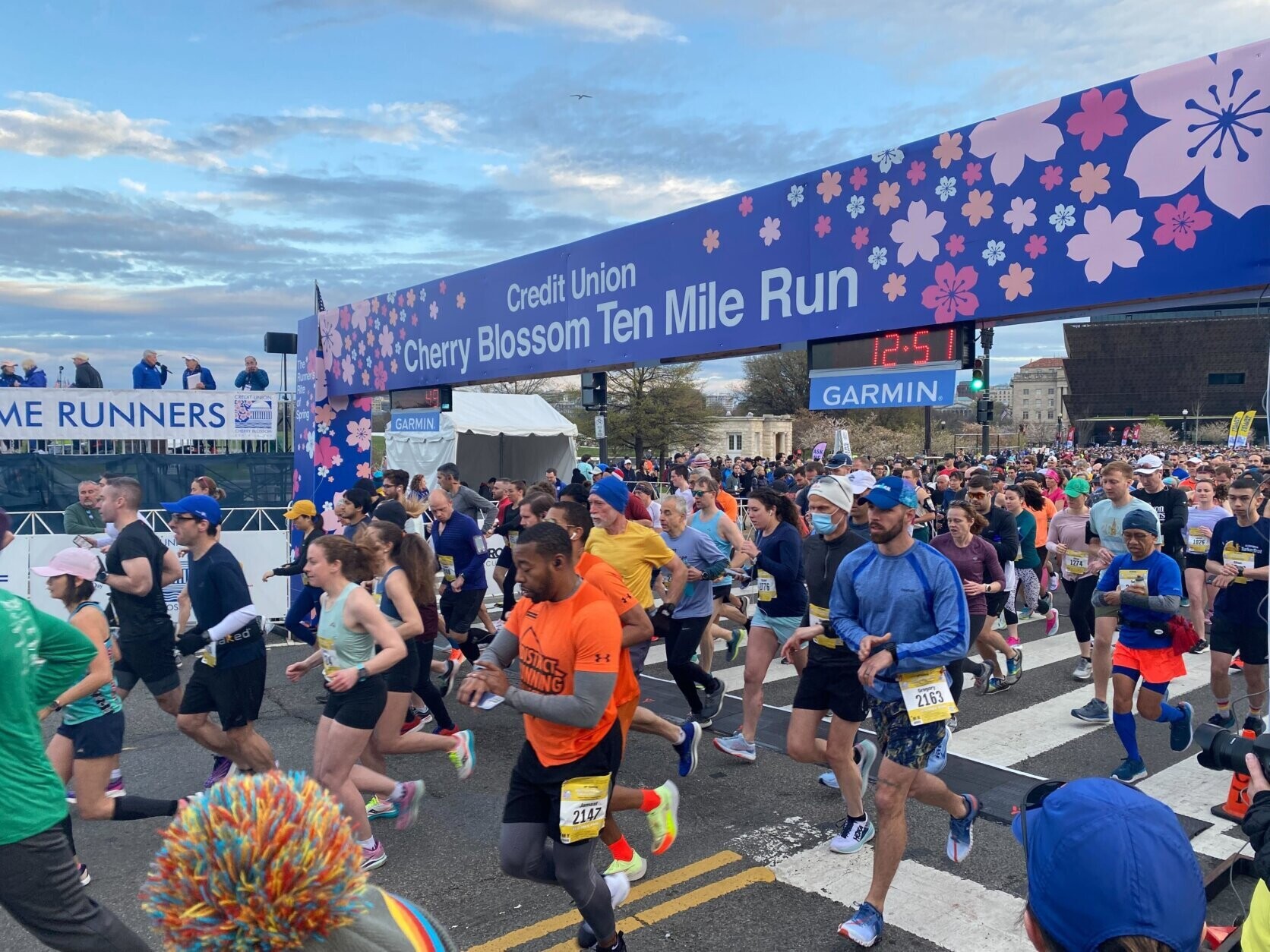
* If World Best times and American Records for men and women are set at the event (i.e. four records set), the $50,000 would be split into four $12,500 shares. If only one World or American record is set by either a man or a woman, the athlete setting the record would get the full $50,000. If an American sets both the World and American records, and no other records are set, he or she would receive $50,000.
Currently, the times to beat are as follows:* Haile Gebreselassie’s (ETH) World Athletics Best of 44:24, run at the Tilburg 10 Mile in Tilburg, Netherlands, September 4, 2005;* Keira D’Amato’s World Athletics Best in a women’s only race of 51:23, run at the UpDawg 10 Mile in Washington, DC, November 24, 2020;* Greg Meyer’s American Record of 46:13, run at the Cherry Blossom Ten Mile in Washington, DC, March 27, 1983;* Keira D'Amato’s previously listed World Best 51:23 is also the American Record for a women’s only race.
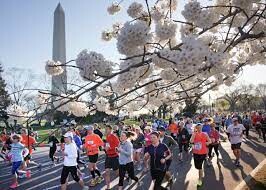
The 10 Mile will serve as the Road Runners Club of America National 10 Mile Championship and the 2022-2023 PRRO Circuit Championship. Winners of the 2022-2023 PRRO Circuit events will be eligible for the $10,000 PRRO Super Bonus by winning the PRRO Championship (the bonus is split if an eligible male and female win the Championship).
Event Director Phil Stewart said, “Our 50th anniversary will be like no previous edition of the race, with the largest prize pool of guaranteed and bonus money ever, and featuring the RRCA and PRRO Championships. The race has always been a leader in the support of elite competition and we want to highlight this heritage in a big way in this special year.”
The inaugural Cherry Blossom 10 Mile in 1973 was won by Sam Bair, in a time of 51:22; the women’s winner was Kathrine Switzer, in a time of 1:11:19; 127 men and 12 women ran that first race. Bill Rodgers holds the honor of most victories, with four consecutive wins between 1978 and 1981. Three women have each won the race three times: Julie Shea (1975-77), Lisa Weidenbach (1990-1992) and Lineth Chepkurui (2008-10). Ben Beach leads all Cherry Blossom finishers with an active streak of 49 years. A comprehensive media guide detailing a wide variety of statistics from the first 49 CUCB races is available here.
Other significant highlights of the 50th anniversary celebration will be announced in mid-October, including the procedures for entering the lottery for race registration and changes in the 5K.
Thanks to Credit Union Miracle Day’s title sponsorship since 2002, the Credit Union Cherry Blossom events have raised over $10.2 million for the Children’s Miracle Network Hospitals, including $323,000 in 2022.
About the Credit Union Cherry Blossom 10 Mile:
The Credit Union Cherry Blossom 10 Mile, organized by Cherry Blossom, Inc., a 501c(3) chapter of the Road Runners Club of America, is known as “The Runner’s Rite of Spring®” in the Nation’s Capital. The staging area for the event is on the Washington Monument Grounds and the course passes in sight of all of the major Washington, DC Memorials. The event serves as a fundraiser for the Children’s Miracle Network Hospitals, a consortium of 170 premier children’s hospitals across North America. About one-third of the funds raised support Washington, DC’s own Children’s National (“Children’s Hospital”). The event also funds the Road Runners Club of America’s “Roads Scholar” program designed to support up-and-coming U.S. distance running talent.
Credit Union Miracle Day, Inc., a consortium of credit unions and credit union suppliers, is the title sponsor of the Credit Union Cherry Blossom 10 Mile, 5K and Kids’ Run. Current presenting sponsors include ASICS, MedStar Health and Wegmans; supporting sponsors include CO-OP Financial Services, CUNA Mutual Group, PSCU, Potomac River Running, Gatorade Endurance, Suburban Solutions and UPS.
The event is a proud member of the PRRO Circuit (PRRO.org), a series of this country’s classic non- marathon prize money road races with circuit stops in Washington, DC; Spokane, WA; and Utica, NY.
In addition to being sanctioned by USA Track & Field and the Road Runners Club of America, the Credit Union Cherry Blossom events have earned Gold Level Inspire Certification from the Council for Responsible Sport in recognition of its legacy of commitment to sustainability and thoughtful resource management.
(10/07/2022) ⚡AMPby Runners Web
Cherry Blossom Ten Mile Run
The Credit Union Cherry Blossom is known as "The Runner's Rite of Spring" in the Nation's Capital. The staging area for the event is on the Washington Monument Grounds, and the course passes in sight of all of the major Washington, DC Memorials. The event serves as a fundraiser for the Children's Miracle Network Hospitals, a consortium of 170 premier...
more...Generali Munich Marathon on Sunday is featuring the strongest field ever in its 36 year history
With the strongest field in its history the GENERALI MUNICH MARATHON will take place on Sunday. The unofficial world junior record holder Tsegaye Mekonnen and fellow Ethiopian Mare Dibaba, who was the marathon World Champion in 2015, head the start lists. Their personal bests of 2:04:32 and 2:19:52 respectively make them the fastest runners ever entered in the traditional Bavarian race.
For the first time in over 20 years an international elite field was assembled for the 36th edition of the GENERALI MUNICH MARATHON. Organisers hope that both course records will fall on Sunday.
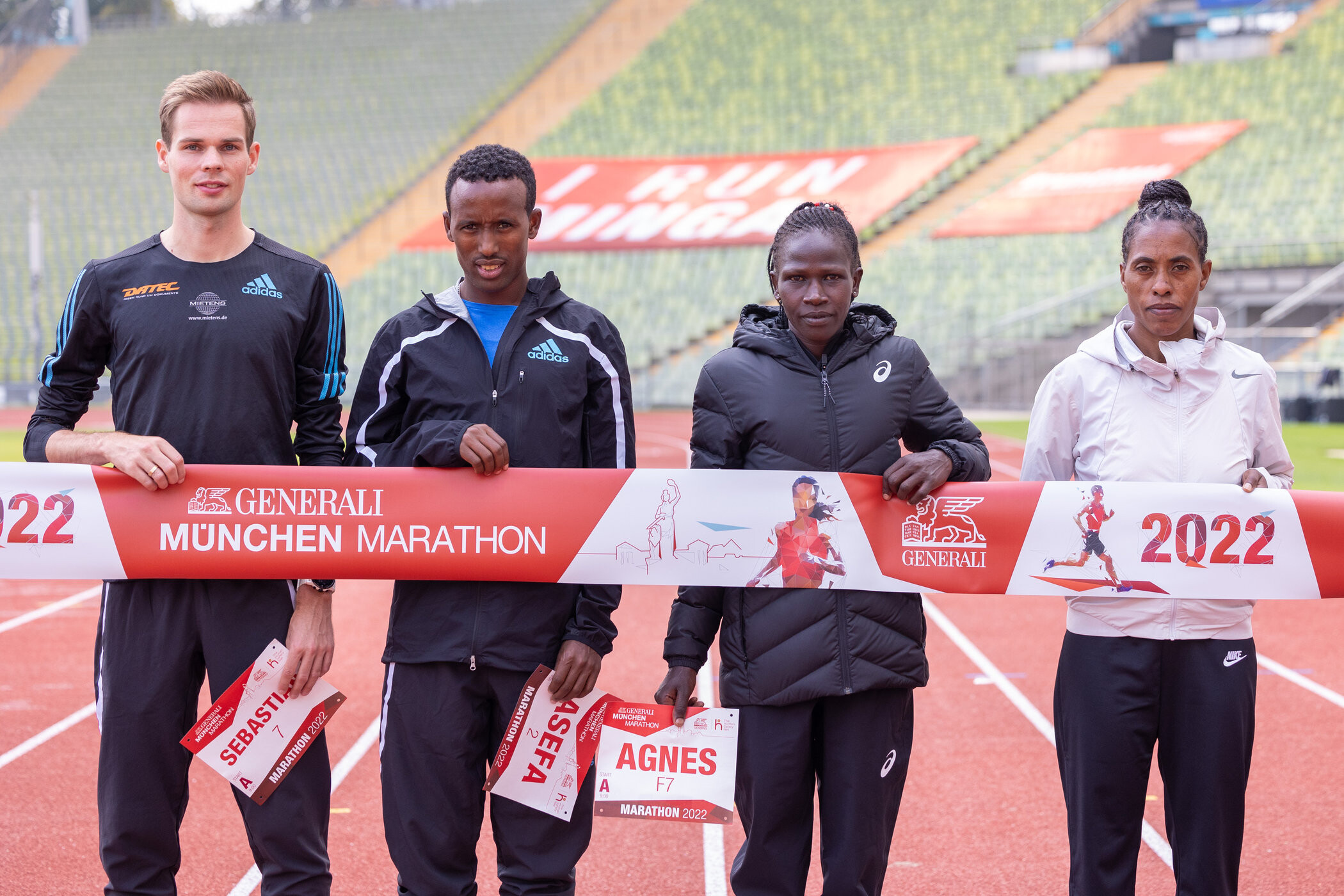
A total of around 18,500 runners are expected total part. About 5,000 of them will run the classic distance which starts and finishes inside the Olympic Stadium. The GENERALI MUNICH MARATHON is an Elite Label Road Race of the international athletics federation, World Athletics. The race will start at 9.00 am on Sunday and a live stream is available at: www.generalimuenchenmarathon.de
50 years after winning the Olympia marathon gold medal in Munich Frank Shorter is back in the city as a guest of honor. “I am very happy to have the opportunity to be back in Munich - the city where I was born in 1947 and where I celebrated my biggest career win in 1972,“ said 74 year-old Frank Shorter.
“We are looking forward to the strongest elite line-up in our history. With the former World Champion Mare Dibaba and the runner who holds the unofficial world junior record, Tsegaye Mekonnen, we managed to get two big names to Munich for the return of the elite fields. Since weather predictions are favourable we hope that both course records will be broken on Sunday,“ said Race Director Gernot Weigl.
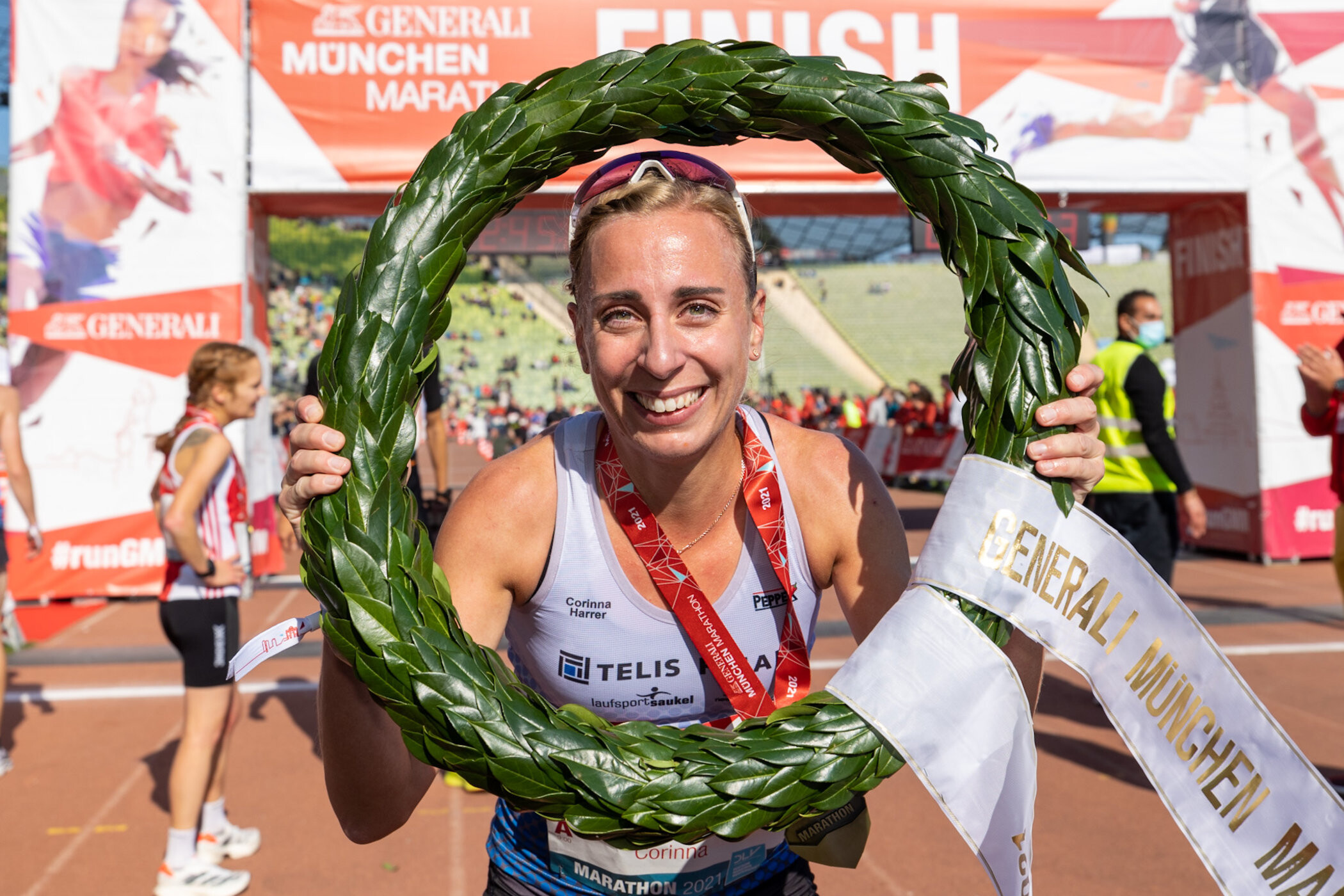
Tsegaye Mekonnen caused a major upset when he took the Dubai Marathon in 2014 aged just 19 years old. His time of 2:04:32 still stands as the unofficial world junior record (World Athletics does not ratify junior records in the marathon). In 2017 Mekonnen also won the Hamburg Marathon. Now 27 years old the Ethiopian has not competed over the classic distance since 2018 and now intends to come back with a strong performance in Munich. “I had injury problems and then the pandemic played its part as well, so I did not run a marathon for three years. Now my training has gone well and I intend to run a 2:06 on Sunday,“ said Tsegaye Mekonnen.
Two other runners are on the start list with personal bests of sub 2:10 and below the 2:09:46 course record: Ethiopia’s Mengistu Zelalem has a PB of 2:08:48 while Kenya’s Edwin Kimaiyo is in a similar range with 2:09:12. Current a half marathon split time of around 64:00 is targeted for the first group.
A big improvement of the course record seems possible for the women in Munich. Germany’s Susanne Hahn established the current mark of 2:32:11 ten years ago. Mara Dibaba heads the women’s field with a world-class personal best of 2:19:52. Besides the World Champion of 2015 and Olympic bronze medallist from 2016 there are two fellow-Ethiopians who have run under 2:25: Atsede Bayisa has a fine personal best of 2:22:03 and Aberu Zennebe has a PB of 2:24:30. “I have prepared for three months and my goal is to run a personal best“, said Aberu Zennebe. A winning time of sub 2:25might well be within reach on Sunday since it is planned that the first group reaches the half way mark in around 71:30. There are eight athletes on the start list who have run under 2:30.
Elite runners with personal bests:
Men:
Tsegaye Mekonnen ETH 2:04:32Mengistu Zelalem ETH 2:08:48 Edwin Kimaiyo KEN 2:09:12 Meshack Koech KEN 2:10:17 Emmanuel Sikuku KEN 2:11:05 Ngonidzashe Ncube ZIM 2:11:46 Justus Kangogo KEN 2:13:34 Berhane Tesfay ERI 2:14:42 Vincent Kiprotich KEN Debüt Philimon Kipchumba KEN Debüt Rodgers Keror KEN Debüt Sebastian Hendel GER Debüt
Women:
Mare Dibaba ETH 2:19:52 Atsede Bayisa ETH 2:22:03 Aberu Zennebe ETH 2:24:30 Agnes Keino KEN 2:25:08 Viola Yator KEN 2:26:51 Mercy Kwambai KEN 2:27:32 Souad Kambouchia MAR 2:27:49 Helen Jepkurgat KEN 2:29:10 Caroline Nahimana BUR 2:30:09
Second photo:showing German debutant Sebastian Hendel with Tsegaye Mekonnen, Agnes Keino und Aberu Zennebe
(10/07/2022) ⚡AMP
Generali Munich Marathon
The GENERALI MUNICH MARATHON has held the elite label of the WORLD ATHLETICS since 2020 and the marathon route is officially measured and recognized. The route runs from the Olympic Park and Schwabing to Leopoldstraße with the Siegestor, via Königsplatz and the Pinakotheken to the English Garden. From there past the Chinese Tower and Art Nouveau villas in Bogenhausen, through...
more...Olympic 1,500m medalist Jenny Simpson is moving to the roads
One of the fastest U.S. milers in history is taking on a new challenge, according to her Instagram. The 2016 Olympic 1,500m bronze medallist, Jenny Simpson, may have hung up her spikes on the track, but will shift her focus to road races with her new sponsor, Puma.
“She’s ready to answer the call of the roads,” Puma’s Instagram reads. “Welcome to the FAM, Jenny. We are excited to see where this next challenge leads.”
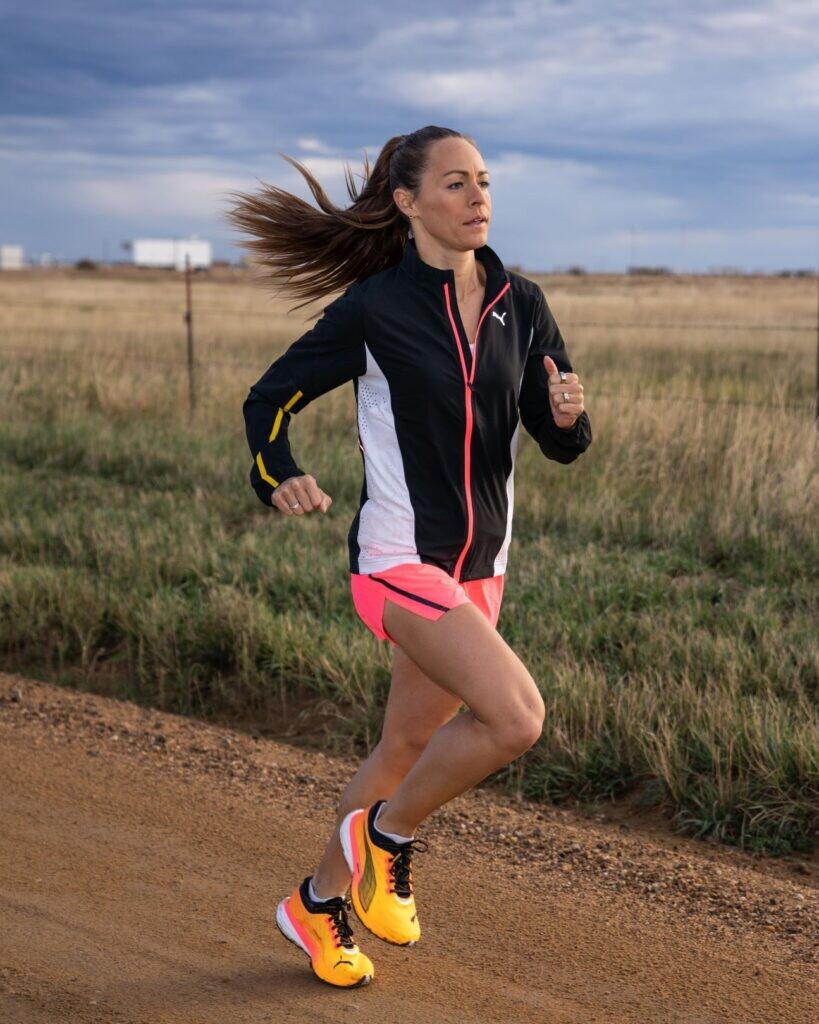
Simpson, whose last race (according to World Athletics) was the Cherry Blossom 10-mile road race in Washington, D.C. in September 2021, will run what she called “a little rust-buster” at the Army Ten-Miler in Washington on Oct. 9.
The Cherry Blossom 10-miler was Simpson’s first race longer than 5,000m. Although she has made the shift to distance running, the 36-year-old hasn’t hinted at whether she plans on moving up to the marathon distance.
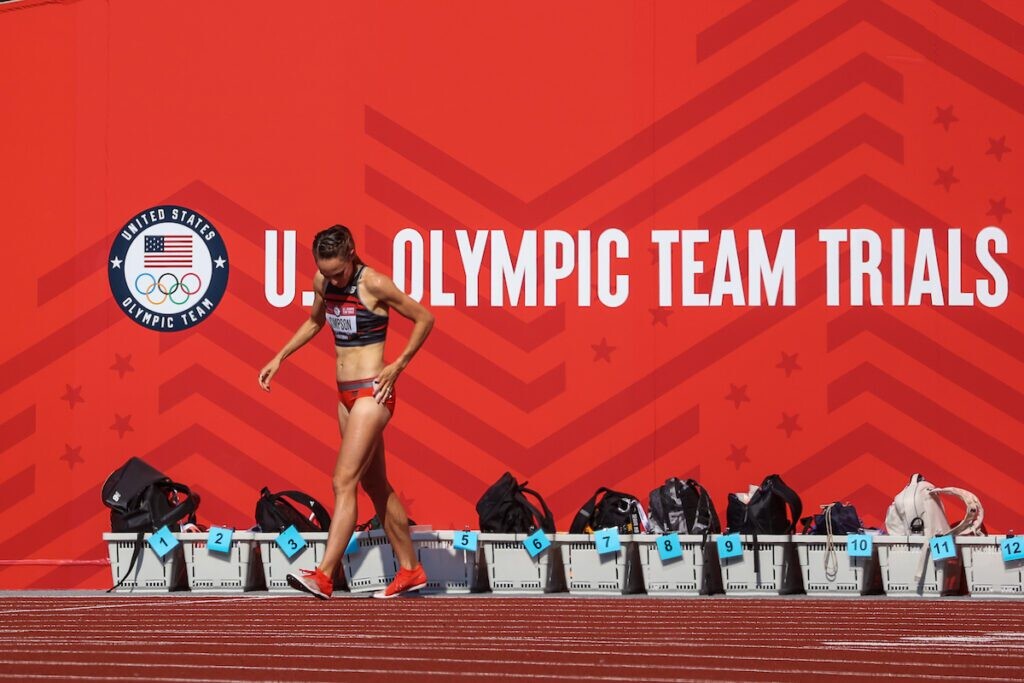
Simpson made her first Olympic team in 2008 in the 3,000m steeplechase, then in 2012 and 2016, she ran the 1,500m, earning a bronze medal in Rio behind Faith Kipyegon and Genzebe Dibaba. She is the only female U.S. athlete to win both a world championship title and an Olympic medal in the 1,500m.
She holds career PBs of 14:56 in the 5,000m, 4:16 in the road mile and 3:57.22 over 1,500m.
Throughout her career on the track, Simpson had a lot of success in road miles, winning eight NYC 5th Ave. Mile titles, including seven consecutive titles between 2013-2019.
Simpson focused much of her time through the pandemic helping her Boulder, Colo. community rebuild from a December 2021 fire. She is also a volunteer coach at the University of Colorado for the track and field and cross-country team.
(10/07/2022) ⚡AMPby Marley Dickinson
Philemon Rono out of TCS Toronto Waterfront Marathon with calf injury
The three-time Toronto Waterfront Marathon champion Philemon Rono of Kenya announced on Thursday that he will not be making the trip to Toronto this year, due to a recent calf injury.
Rono has won three of the last four iterations of the race (2019, 2017 and 2016), setting the Canadian all-comers record at 2:05:00 with his 2019 win.

The 31-year-old trains in Kaptagat, Kenya, and is part of Eliud Kipchoge’s NN Running Team. Rono is known by his unique nickname, “Baby Police,” for his job as a police officer and his diminutive stature.
It is not known how Rono sustained his calf injury, but he was eagerly looking to become “the King of Toronto” by winning his fourth title in five years.
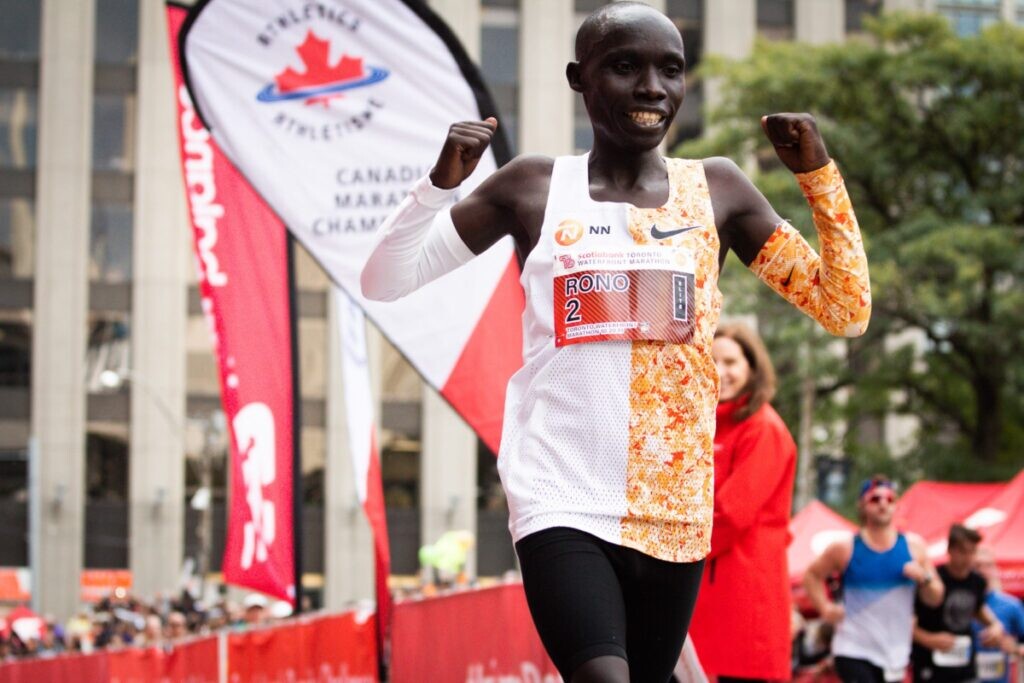
Kenya’s Felix Kandie and Barselius Kipyego and Ethiopia’s Yihunilign Adane will be the frontrunners to win in Rono’s absence. Kipyego trains alongside 2022 London Marathon champion Amos Kipruto and 2021 Boston champion Benson Kipruto in Iten, Kenya.
Canadian half-marathon record holder Rory Linkletter, Olympian Trevor Hofbauer and Lee Wesselius will also battle it out for the Canadian marathon title.
(10/06/2022) ⚡AMPby Marley Dickinson
TCS Toronto Waterfront Marathon
The Scotiabank Toronto Waterfront Marathon, Half-Marathon & 5k Run / Walk is organized by Canada Running Series Inc., organizers of the Canada Running Series, "A selection of Canada's best runs!" Canada Running Series annually organizes eight events in Montreal, Toronto and Vancouver that vary in distance from the 5k to the marathon. The Scotiabank Toronto Waterfront Marathon and Half-Marathon are...
more...Stay injury-free with these single-leg exercises
Running is a unilateral (one-leg at a time) action, and adding single-leg movements to your training regime can address muscle imbalances and lower your risk for injuries. In this video, Maine-based writer and adventure runner Ian Ramsey demonstrates four simple and quick exercises you can add to your routine tonight.
There are two predominant reasons runners strength train: injury prevention and improved performance. Single-leg exercises are ideal for the former because training each leg separately can help prevent one side from becoming stronger than the other or help your weaker side catch up.

A recent study also showed that when participants did single-leg exercises in an alternating pattern (instead of doing all your reps on one side and all of them on the other), their time to exhaustion improved, indicating that alternating unilateral movements may improve performance for endurance athletes.

Strengthening your glutes, hips, knees, and core (all targeted in this video) will make you a more sturdy and resilient athlete, and will help you maintain efficient running form even when fatigued.
Ramsey demonstrates a single-leg bridge, pistol squat, single-leg deadlift and step-ups, and explains how each exercise will benefit you as a runner. If you’ve been wanting to start strength training but have no idea where to start, Ramsey’s video is the perfect quick watch to get you going.
(10/06/2022) ⚡AMPby Running Magazine
Kenyan Celestine Chepchirchir will be targeting a first World Marathon Majors title when she makes her debut at the Chicago Marathon
Reigning La Rochelle Marathon champion Celestine Chepchirchir will be targeting a first World Marathon Majors title when she makes her debut at the Chicago Marathon on October 9.
Chepchirchir, who has competed in seven marathons across the world, said: “This is my first time competing at the World Marathon Majors, which are very competitive in nature but I want to give it my best and come home with something to smile about.”
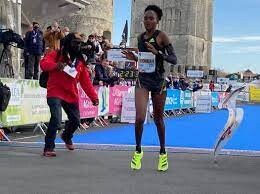
The former Cape Town marathon champion earned the Chicago Marathon nod following her fourth-place finish at the Seoul Marathon in April in a time of clocking 2:20:10.
“Despite not winning the Seoul Marathon title, I set a good time that earned me a call to the Majors. Majority of athletes I ran with are in the Majors now. As I head to Chicago, I am targeting even better times to pave way for more top races in the future,” she added.
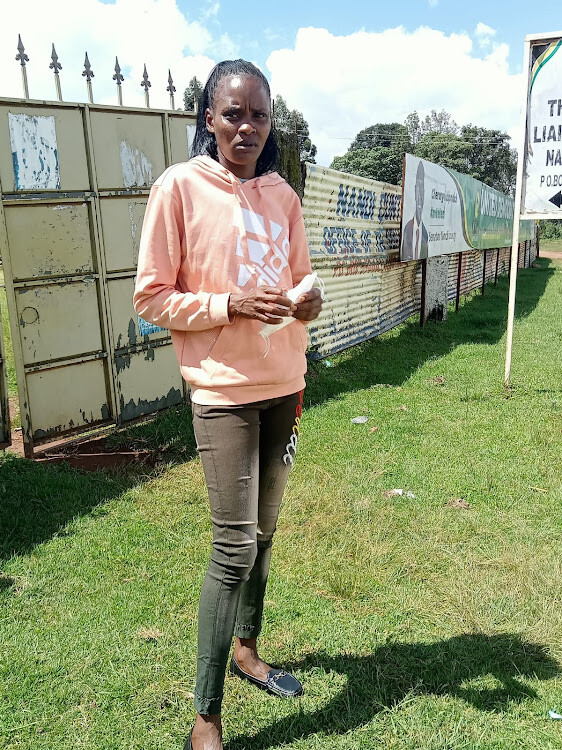
Chepchirchir said her training in Kapsabet has been top-notch and expects handsome rewards in one of the most congested and competitive races in the world.
“Looking at the names on the start list, I expect a very competitive race,” she added.
She will be up against compatriot Ruth Chepngetich, the defending champion and former world marathon champion.
Last year, Chepngetich won the title in 2:22:31 ahead of USA’s Emma Bates (2:24:20) and Sarah Hall in 2:27:19 for third.
Last year's third-place finisher Erick Kiptanui headlines the Kenyan contingent which also has Bernard Koech, Elisha Rotich, Benson Kipruto, and John Korir.
(10/06/2022) ⚡AMPby Emmanuel Sabuni
Bank of America Chicago
Running the Bank of America Chicago Marathon is the pinnacle of achievement for elite athletes and everyday runners alike. On race day, runners from all 50 states and more than 100 countries will set out to accomplish a personal dream by reaching the finish line in Grant Park. The Bank of America Chicago Marathon is known for its flat and...
more...Running outside year-round will make you indestructible
It’s the time of year when many runners start to shift some runs over to a treadmill or indoor track. Keeping most of your runs outside from the moment the days become shorter can be an efficient and straightforward training tool. If you can continue to train outside year-round, both your brain and body will benefit.
Aim to keep as many of your runs outdoors as possible, particularly in the fall season when the weather is in between summer warmth and the winter frigid temperatures. As it gradually gets colder, you will also adjust and it won’t be a huge shock when you step out into a deep freeze mid-winter.
Avoiding darker mornings and evenings due to safety concerns are, however, valid reasons to shift to an indoor setting, and it’s important to stay aware of your surroundings and prioritize safety.
You’ll gain mental strength and grit
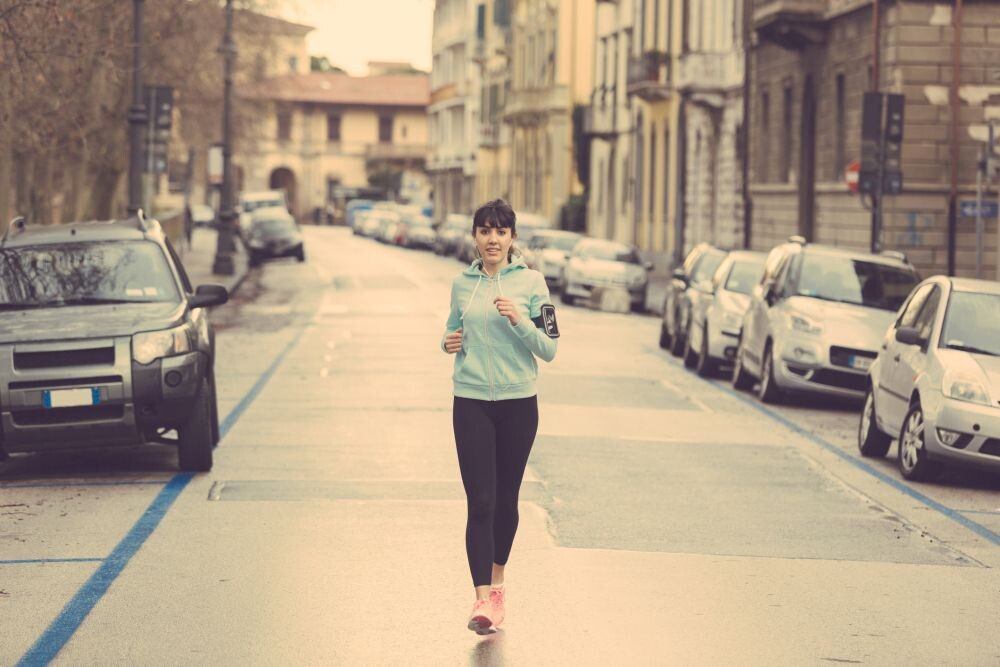
Depending on where you live, winter can feel interminable. Many people suffer from seasonal affective disorder (SAD) or subclinical variations of it. Exercising, period, can seem much less enjoyable much of the time. No matter how you reframe it, trudging through rain and snow is tough. Knowing that the long-term benefits outweigh the short-term challenges can be helpful motivation to get out the door.
Give yourself huge kudos every time you head out into a less-than-appealing day, and imagine how much easier hill training will feel in the daylight, in shorts, in a few months. Putting in the hard work early in the year will lead to more fun when the sun is shining.
Getting outdoors will boost your mood, even when the weather is bad

It can be hard to find motivation when the sky is cloudy or the weather is really cold. Even when it isn’t sunny, you’ll still be getting exposure to daylight, something neuroscientist Andrew Huberman says is key to longevity and staying healthy.
A Harvard University study showed that the elevated levels of carbon dioxide often present in indoor environments can have negative effects on cognitive function. Breathing fresh, oxygen-rich air (even if it’s chilly) is good for your body and brain.
Even the coldest winter runs, the ones where you can’t wait to get indoors and peel off the freezing layers, will give your brain a kick-start and leave you feeling better for having moved your body.
Training all winter will give you an edge on the competition
This early part of winter is the best time to build your aerobic base and set an important foundation upon which spring speed and endurance will be built. Think of your training as a pyramid—your winter base mileage forms the bottom layer on which your other training can rest.
If you skip this step, you won’t be ahead of the game when spring arrives, and it will take longer to get into racing shape. Running on snow or uneven terrain also recruits your stabilizer muscles into action, so you’ll be strenghtening areas of your body that aren’t usually a focus while you run.
Running during the unpredictable fall and winter months also means you’ll be challenging your body and brain to tackle new and different things regularly–another science-backed way to keep your brain and body optimized for many years to come.
(10/06/2022) ⚡AMPby Keeley Milne
Try this steady tempo workout to smash your upcoming half-marathon
Are you needing a little more confidence before you tackle a half-marathon this fall? We have just the workout for you. Many distance runners will use tempo workouts to increase their lactate threshold and to improve their body’s ability to clear the lactic acid that builds up over distance (especially late in the half marathon).
A tempo run is a middle ground between an easy jog and a fast-paced sprint, straddling the line between aerobic and anaerobic training.
Your tempo pace should be around your half-marathon pace, and something you should be comfortable running at for at least an hour. Another way to calculate your tempo pace is by taking your 5K PB and adding 30 to 45 seconds per kilometre.
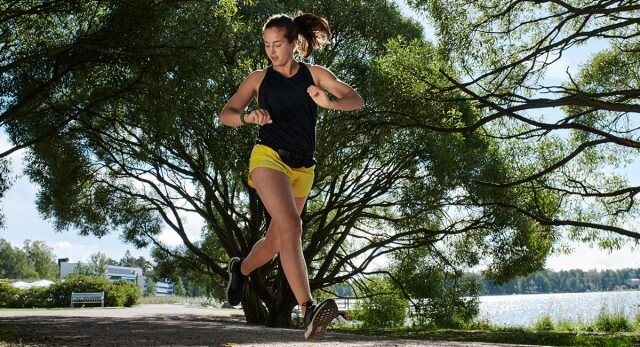
The workout
Three to four reps of 10 minutes @ tempo pace with 90 seconds’ slow jog rest between reps.
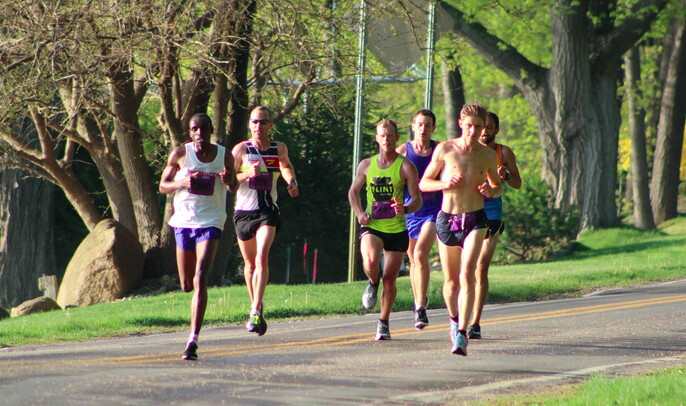
Work your way into the workout by staying controlled and hitting paces on your first two reps. If you find that you are struggling to hold the pace near the end of the first or second rep, extend the rest to two minutes instead of 90 seconds, and substitute a walk for the jog.
The idea with the jog rest is to keep your heart rate up to simulate race-like conditions.
If you’re able to complete all four reps, calculate your average pace through all four sections to find your projected half-marathon pace.
(10/06/2022) ⚡AMPby Marley Dickinson
Joyciline Jepkosgei receives promotion in Kenyan army following her success at London Marathon
Here’s your feel-good story of the day: Kenyan marathoner Joyciline Jepkosgei has been recognized by her country for her second-place finish at the 2022 London Marathon, earning a promotion in the army.
On Tuesday, Kenya’s Chief of Defence Forces (CDF), General Robert Kibochi, promoted Corporal Jepkosgei to the role of Sergeant (Sgt.) at the Kenyan Army Defence Headquarters in Nairobi.

General Kibochi congratulated Jepkosgei for her excellent work in representing the country in major races and for improving her time, which has seen her break multiple world records.
“We are very grateful for your continuous hard work and for representing Kenya and KDF well,” said General Kibochi.

On Sunday, Jepkosgei clocked 2:18:07, to finish second to Ethiopia’s Yalemzerf Yehualaw, who won in 2:17:26. Jepkosgei won the London Marathon in 2021, and the New York City Marathon in 2019.
Jepkosgei is one of many world-class Kenyan athletes who work for official government organizations. 800m world record holder and two-time Olympic champion David Rudisha worked as a police officer during his running career, and so does two-time NYC Marathon champion Geoffrey Kamworor, plus Canadian soil record holder and defending Toronto Waterfront Marathon champion Philemon Rono.
If your workplace offered promotions for representing the company at a global marathon, would you train a little harder?
(10/05/2022) ⚡AMPby Running Magazine
TCS London Marathon
The London Marathon was first run on March 29, 1981 and has been held in the spring of every year since 2010. It is sponsored by Virgin Money and was founded by the former Olympic champion and journalist Chris Brasher and Welsh athlete John Disley. It is organized by Hugh Brasher (son of Chris) as Race Director and Nick Bitel...
more...Paris 2024 Olympic Games reveals routes for Olympic marathon and mass event run
Paris 2024 today unveiled the routes for the Olympic marathon and the two races – a 42.195km course and a 10km course – open to the general public as part of mass event running.
The announcement was made in the presence of Tony Estanguet, President of Paris 2024; Anne Hidalgo, Mayor of Paris; Valérie Pécresse, President of the Ile-de-France Regional Council; World Athletics CEO Jon Ridgeon; Geoffroy Sirven-Vienot Vice-President of Sponsorship, Events and Partnerships at Orange; Paula Radcliffe world record-holder between 2003 and 2019, and French international marathon runner Yohan Durand.
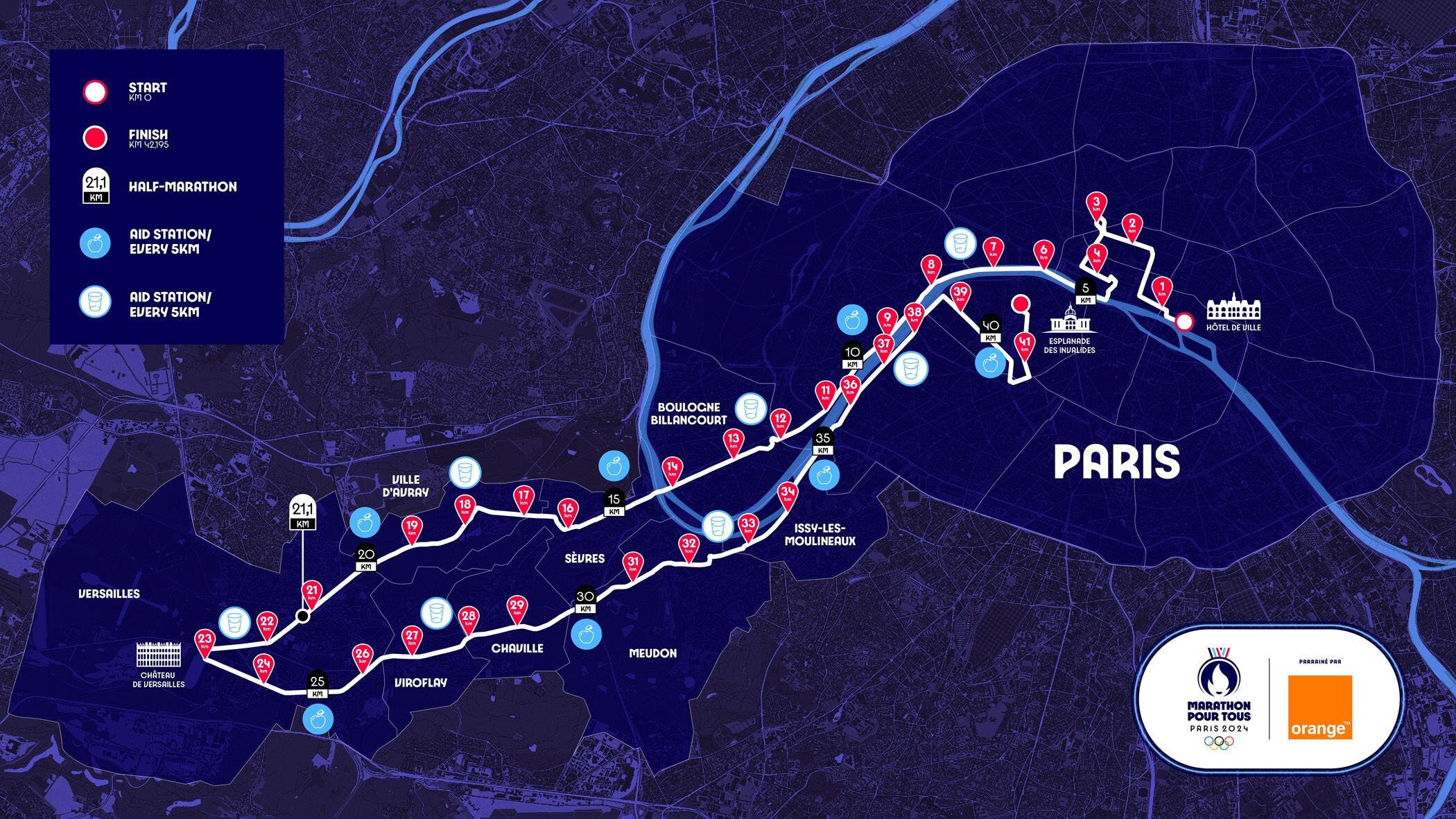
A remarkable, challenging and inspiring course
For the Olympic marathon, one of the most iconic events of the Olympic Games, Paris 2024 has unveiled a new route.

When planning the route for this legendary event, Paris 2024 drew inspiration from the ‘Women's March’ of 5-6 October 1789 when 6-7000 Parisian women marched through Paris, Sèvres and St Cloud before reaching Versailles and forcing the King back to the Tuileries Palace.
Starting at the Hôtel de Ville and finishing on the Esplanade des Invalides, the course will take in some of the most beautiful sights and monuments of Paris and its surroundings. It will deliver 42.195km of drama with the Louvre Pyramid, Grand Palais, Château de Versailles and the Eiffel Tower as its backdrop.
This Olympic Marathon also has a particularly tough profile with an overall elevation gain/loss of 438m. The route – specially designed for the Paris 2024 Games and approved by World Athletics – is unique, demanding and technical.
“With its unprecedented route, the Paris 2024 Marathon represents a great sporting challenge for the athletes, in a spectacular setting,” said Radcliffe. “This race, more unpredictable than ever, promises to be mythical.”
“Beyond a doubt, the Paris 2024 Marathon will have something special about it,” said two-time Olympic champion and world record-holder Eliud Kipchoge. “To perform in such an impressive setting, in a place so charged with history and symbolism, will be a unique experience. I could not ask for a more perfect race for the Games.”
“Paris 2024 is providing us a route that's rich in symbolism, entertainment and athletic challenge,” added Durand. “Taking up this challenge here in my home country is a lifelong ambition.”
A race open to the general public for the first time in Olympic history
With mass event running, the general public can put themselves in the shoes of their Olympic heroes and run the same marathon route.
To open up this experience to everyone, Paris 2024 will offer, in addition to the traditional 42.195km distance (20 years old and above), a 10km race accessible to as many people as possible (16 years old and up).
With 20,024 participants per race, Paris 2024 offers experienced athletes and up-and-comers a unique opportunity to participate in the Games and experience this festive, athletic gathering that is sure to leave each participant with an unforgettable memory.
(10/05/2022) ⚡AMPby World Athletics
Paris 2024 Olympic Games
For this historic event, the City of Light is thinking big! Visitors will be able to watch events at top sporting venues in Paris and the Paris region, as well as at emblematic monuments in the capital visited by several millions of tourists each year. The promise of exceptional moments to experience in an exceptional setting! A great way to...
more...Don’t let cold weather put an end to your outdoor running
When running in the summer, there isn’t much to think about when you’re preparing to head out the door, but when the temperature is cooler, you need to make sure you’re properly dressed for the conditions.
The golden rule of dressing for this time of year is to dress 10 degrees warmer than it actually is.
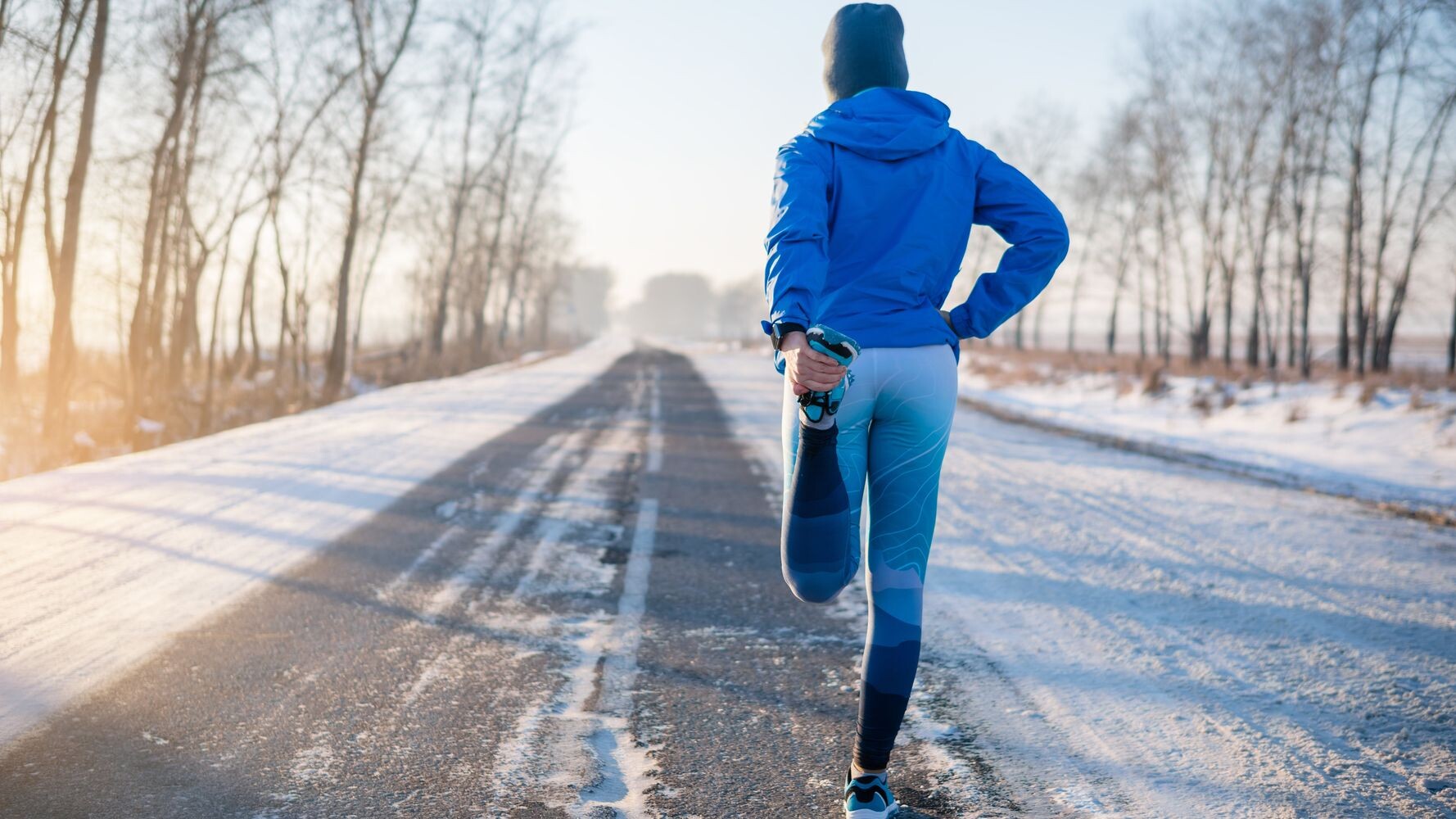
The idea behind the golden rule is that your body is prone to warm up from running as a result of increased heart rate and blood flow. More blood flow to your muscles and skin will help radiate heat away from the body, increasing your core body temperature.
Although you may feel chilly in the first kilometre, your body is bound to get warmer as the run progresses. It’s also better to overdress than underdress, as you can always take a layer off. Gloves, hats and running buffs are all game-changing running accessories for fall and winter, which will help keep your body heat in.
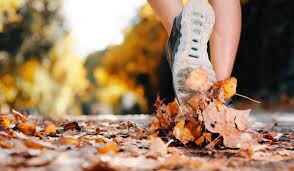
Of course, the golden rule can vary from one runner to the next, depending on one’s body temperature, but the normal range is between 36.5 and 37.5 C. One’s body temperature can vary depending on age, time of day, physical exertion level, health and emotions.
Try out the golden rule this fall and see if it works for you!
(10/05/2022) ⚡AMPby Marley Dickinson
Beijing marathon to return after two-year Covid hiatus Wednesday, October 05, 2022
Thousands of runners will line up for the Beijing marathon in November after a two-year Covid pause, organizers said, as sporting events gradually return to China.
The world's most populous country has canceled almost all international sports competitions since Covid emerged there in 2019, with the Beijing Winter Olympics in February this year a rare exception.

Race organizers said on Tuesday that 30,000 runners would be able to take part in the 26-mile (42-kilometer) course through the capital on November 6 -- but only Beijing residents can register.
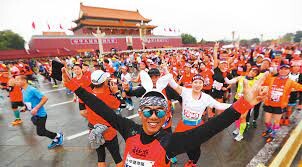
China is the last major economy wedded to a zero-Covid policy, stamping out virus flare-ups with snap shutdowns, mass testing and lengthy quarantines.
The table tennis world team championships kicked off last Friday in the megacity of Chengdu, though participants must stay in a "closed loop", and it was announced last week that China would host the season-ending World Tour Finals for badminton in December.
(10/05/2022) ⚡AMPBeijing Marathon
The Beijing Marathon is an annual marathon held in Beijing, People's Republic of China. The race was first held in 1981 and has been held every year since. The race begins at Tiananmen Square and finishes at the National Olympic SportsCenter stadium. Beijing Marathon is now a full marathon only marathon race. At the 2009 edition of the race, 4897...
more...The Kenyan Athletics Training Academy in Thika just launched today the KATA hunger project helping potential pro runners from poor families
KATA (Kenyan Athletics Training Academy) announced today (Oct 4, 2022) it has launched a new project. The KATA Hunger Project is going to help potential Pro runners from poor families. Additionally the project will help struggling women farmers to be better more efficient farmers year around.
"Our Kenya Fresh Farm Hunger Project (KATA Hunger Project) is going to provide 8.8 pounds (four kilos) of home-grown fresh fruits and vegetables weekly to Kenyans in Need for 13 weeks," says KATA director Bob Anderson, MBR publisher and founder of Runner's World Magazine (1966-1984).
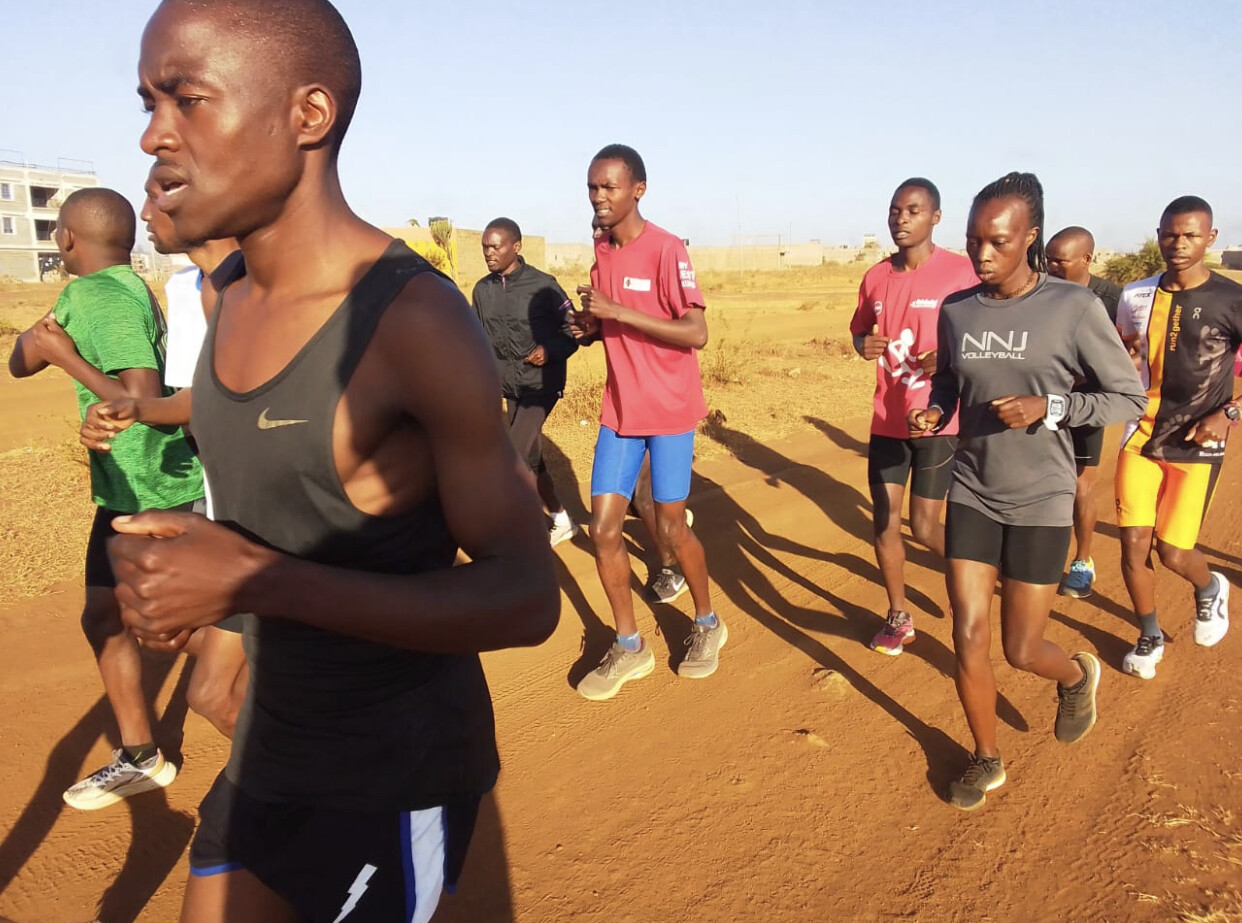
Bob and his wife Catherine built and financed the Kenya Athletics Training Academy located in Thika Kenya. The 23- room academy was officially opened Sept 4, 2021.
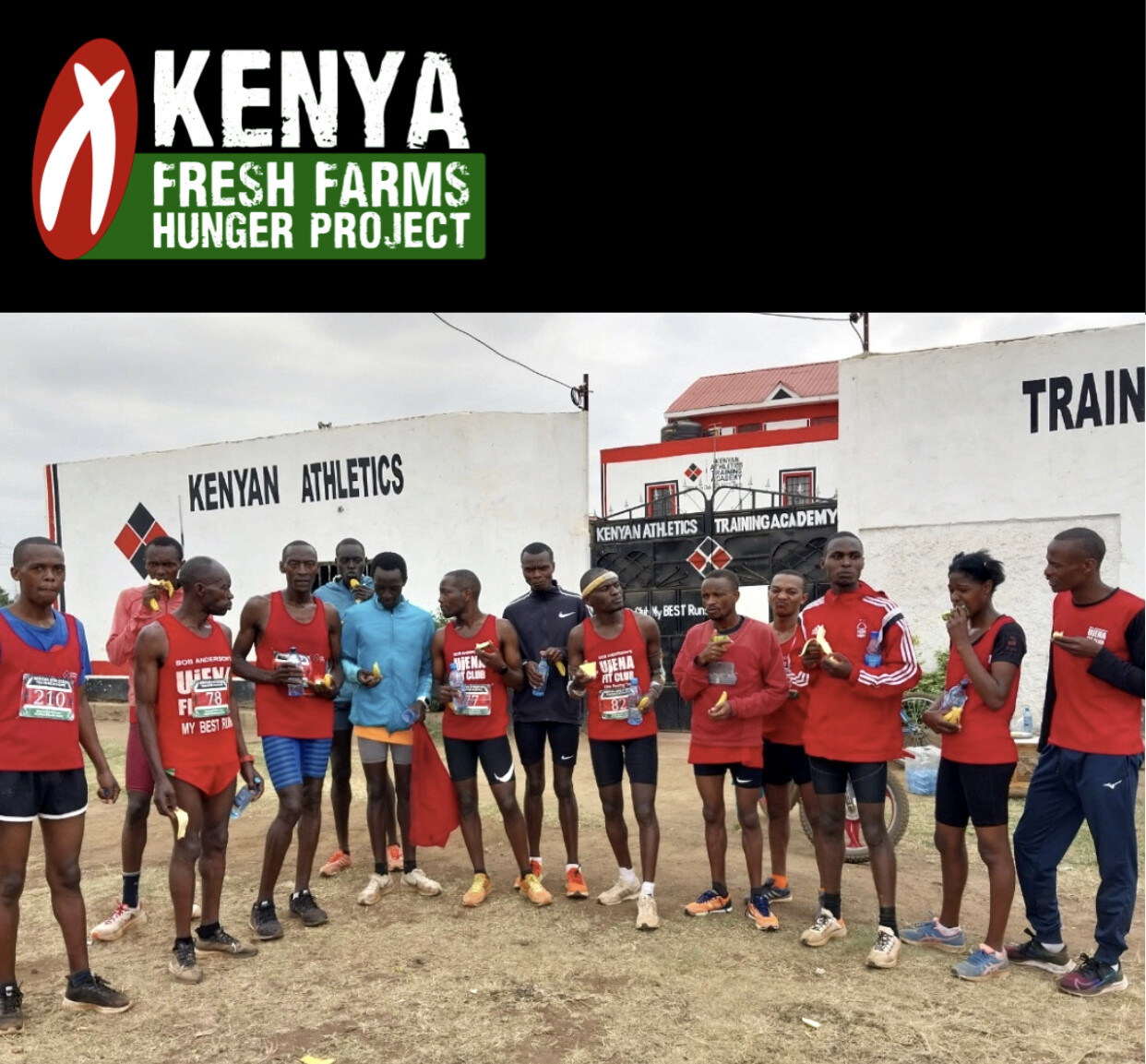
KATA is a one-of-a-kind facility and its focus is on training runners to become pro runners. KATA does not manage runners and does not ask its athletes to share any of their prize money.
Kenyan athletes are not charged to live, eat and train at KATA. "We mostly seek out runners who need our help," says head coach Joseph Ngure, a senior coach with over 30 years of experience.
As an example, Peter Njeru Mwaniki was one of the first potental pro runners who came to KATA for help. His family did not believed he could make distance running a career. They basically kicked him out of their house. He then moved in with his brother but that was not working either.
“He had run a 32:30 10k but his hope of making a career out of running was slim," says coach Joseph. "We took him in, feed him and trained him. Within just a few weeks we knew he had great potential."
On Oct 2, 2022 Peter won the Telesia half marathon in Italy clocking 1:00:29. It was a good pay day for Peter and his new KATA family made it happen for him. "We are very proud of Peter and all our KATA athletes," says Bob.
"It would be almost impossible to train hard without enough to eat," says KATA manager Florence Kimiti, as a junior ran 1:59 for 800m. "A 32:30 10k is not bad for a recreational runner but not for a pro runner. A lot of Kenyans make a living from distance running, the most famous being Eluid Kipchoge who is making millions for his efforts. He is our hero. The goat."
Peter will be running several more races in Italy before coming back to KATA to keep up his training and to help support our Kenya Fresh Farms Hunger Project.
"All KATA athletes staying at our academy put in 20 hours per week of work," says operations manager Elam Wangwero, a top runner himself and who have known Bob and Catherine since 2014.
"The work might be cleaning, painting, working on My Best Runs website (posting results, checking links, photos, etc) and now KATA Hunger Project. But of course the training always comes first along with three meals daily."
"It seems to me that doing something other can training, eating and sleeping is helping our athletes run so well," says Bob. "So much of running is mental and you need a sharp mnd."
"Without the support of KATA,"wrote Peter from Italy, "my dream would not have come true. I am feeling the happiest ever. I never thought of running such a time at this age."
The KATA Hunger Project was officially started August 1, 2022 but unofficially started in 2020. "Since we are going to provide home-grown fresh fruits and vegetables for our potential pro runners we needed to set up our own farm," says Florence.
Bob leased two acres of land outside of Embu on August 1. It was idle land but it did have 40 fruits trees (banana and mango) that just needed care. Additional land can be easily leased when needed.
Vegetable beds at KATA's Fresh Farm have already been planted. "We dug a well for water, we set up solar and are building a barn, thanks to Brock Hinzmann (2:19 marathoner back in the 80’s and 90’s) contribution," says Florence.
Runners can also train with the team by just coming to KATA and soon other locations. And when approved, will be given four kilos of Fruits and vegetables at the end of the week starting Dec 23. After or during the 13-week program the athletes with the most potential will be asked to live at KATA at no expense for them.
Potential pro runners outside of Kenya will be able to join the program starting November 1, 2022. "Our guest runners will receive all the benefits as our Kenyan athletes," says Bob. "Same food, same training, same duties with one difference. Our guests can have their own room."
Minimum stay is one month. Cost which covers everything is $1000 not including airline ticket and visa.
"A single month is not a lot of time," says coach Joseph, "but at least you will see what we do here. Our program is more than going for runs and doing some speedwork. We can get you ready to set new PR's."
"Our KATA Hunger Project is a keeper. We want to reach a lot of Kenyans in need but we need your help," says Catherine. "This is how the program works: for every one US dollar contributed, one pound of home-grown Fresh fruits and vegetables will be provided to a Kenyan in Need. 8.8 pounds weekly."
"There is so much talent here in Kenya," says Elam. "I am glad Bob and Catherine have set up these programs.
(10/04/2022) ⚡AMPby Lisa Wall
Eliud Kipchoge can go faster 'in near future'
Marathon runner Eliud Kipchoge believes he can get even closer to a possible sub-two hour marathon after narrowing the gap by 30 seconds when setting his recent world record in Berlin last month.
The 37-year-old ran a time of two hours, one minute and nine seconds to beat his previous benchmark, which had stood since 2018.
"I believe that I still have time to show the world how to push limits," the Kenyan told the BBC World Service.
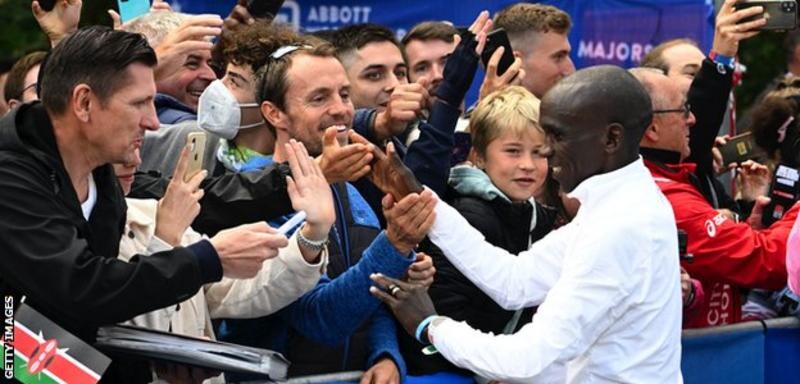
"I can still run my personal best in the near future. I can still try again."
Four years ago, Kipchoge took 78 seconds off compatriot Dennis Kimetto's 2014 record of 2:02.57.
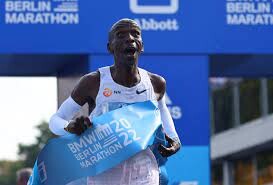
He then became the first man to run a marathon in under two hours in 2019, yet the time in Vienna could not be an official world record since it was not in open competition and he used a team of rotating pacemakers, among other measures.
Kipchoge ran the first half of late September's race in Berlin in 59 minutes and 51 seconds, prompting thoughts that he may become the first runner to break the two-hour mark in an official race.
He had played down his chances of a world record in the build-up, but admits lowering his time had been his stated aim in the German capital.
"My plan was not to run under two hours, my plan was to break a world record," he said.
"I realise that we are fast enough to run under an hour in a half-marathon, which was really motivating for me.
"And it's a good sign also that the future is clear. I'm showing the people that you can [go] as fast as you can for the half-marathon and still do something good at the end of it."
Kipchoge turns 38 next month and now says winning the Olympic marathon at the Paris Games in 2024 is on his "bucket list".
He was won the past two Olympic titles - becoming just the third person to defend a marathon title when he crossed the line in Tokyo - and a third successive triumph would be a first for a man or woman.
"I trust that all things will carry me well up to 2024 to present myself at the starting line," he said.
"What I like is history. To be the first human being to run back-to-back-to-back for three times and win Olympic marathon gold medal, it's my bucket list.
"It's there in my mind. I don't know what will happen but still, for now, I want to concentrate on recovering my body."
Paris victory would be 'phenomenal'
Former women's marathon world record holder Paula Radcliffe says she is "in awe" of Kipchoge's continued "stunning performances".
"I think we all thought that if anybody was in shape right now to take down that world record, it would be him," the 48-year-old Briton told the BBC World Service.
"Each year as he gets a year older, the odds are against him a little bit more - and he still manages to defy them.
"He doesn't put limits on himself. And I think that really helps his mind set. He loves setting himself those targets just to get better, to try and move things forward to move the bar that little bit higher all the time.
"If he gets that balance perfectly right between the first and second half, he can maybe take it (the world record) down even further."
Already regarded as the greatest marathon runner of all time, Radcliffe says that if Kipchoge were to win a third Olympic gold in Paris it would rank along his sub-two hour marathon as his greatest achievement.
"I think even to get it right for two marathons in a row is hugely impressive, especially given the way the goalposts moved with the Tokyo Olympics," she said.
"To put it in perspective, it's getting it right one day every four years, for 12 years. And history shows that that's extremely difficult to do.
"If anybody can do it, he can do it. But it will be a phenomenal achievement that perhaps would put him on the level with having gone through that two-hour barrier."
(10/04/2022) ⚡AMP
by BBC Sport
Paris 2024 Olympic Games
For this historic event, the City of Light is thinking big! Visitors will be able to watch events at top sporting venues in Paris and the Paris region, as well as at emblematic monuments in the capital visited by several millions of tourists each year. The promise of exceptional moments to experience in an exceptional setting! A great way to...
more...What should to eat before running any distance
WHAT SHOULD I EAT THE NIGHT BEFORE A LONG RUN?
Have you ever been on a run and felt lacking in energy? Dizzy or weak? An urgent need for a bathroom stop? If any of these feelings are familiar, then it sounds like you need some help on what to eat before a run. Importantly, you want to ensure you’re eating the right thing the night before a race and remove any risk of hitting the wall during a half marathon or marathon.
When it comes to running, what we eat is important. The “right” food gives us the energy we need to keep going, but the “wrong” foods could cause an upset stomach or make us feel lethargic. So, it’s important to make sure you fuel up correctly before a competitive race – especially if you’re aiming for a PB. In this article, we’ll break down competitive races and suggest what to eat before running them.

GENERAL ADVICE
Before we get into specifics, there are a few things to know about running and food. While runners might think that breakfast matters more than their meal the night before, what you eat the night before a run is absolutely vital because it’ll be your main energy store.

Generally, runners should focus on the four main areas for their pre-race evening meal: carbohydrates, protein, fats and vitamins and minerals. Let’s break them down.
Carbs: Arguably, these are the most important. Stored in the muscles and liver, carbs will help keep your energy high, prevent your blood sugar from dropping and help replenish glycogen levels. Whole grain carbohydrates like brown rice or pasta get the best results.
Protein: Protein intake is important because it reduces the likelihood of injuries by accelerating muscle growth and helping to rebuild muscle fibres. Choose protein that’s low in fat, such as eggs, fish and poultry.
Fats: That being said, a small amount of fat is essential in a healthy diet, and runners need this valuable metabolic fuel for energy. Polyunsaturated fats are best, such as sunflower seeds, fatty fish like mackerel and salmon, and avocados.
Vitamins and minerals: All runners need vitamins and minerals to turn food into energy, maintain bone strength and repair muscle tissue. Get vitamin A from sweet potatoes and kale, and find valuable calcium in milk and spinach.
So, how can you apply each of these food groups to your pre-race evening meal?
WHAT TO EAT BEFORE A 5K RACE
5K races are great for beginners. They are a short and sweet runs which mean you can really enjoy the whole process. While a 5K running race might not need too much preparation, it’s still important to eat well the night before. We’re talking complex carbohydrates, protein and a little fat to give your body enough energy to perform at it’s best.Suggestion: Grilled salmon, brown rice and steamed veg such as broccoli or spinach.
WHAT TO EAT BEFORE A 10K RACE
A 10K race is more challenging, but a great distance for runners who are training for longer races or who enjoy the speed of a 5k run, with that extra challenge. Your pre-10K meal should provide you with plenty of energy for the next day, so think about what you might eat for a 5K and increase the protein and veg. You could also fuel up on carbs gradually in the run up to your race.Suggestion: Grilled or oven-cooked chicken breast, roasted sweet potatoes and asparagus.
WHAT TO EAT BEFORE A HALF MARATHON
Now we’re onto the big ones, where what you eat before the run becomes even more important. A half marathon is when running starts to get really challenging. You’ll need to train for a few months and watch your diet throughout the process so your body is well fuelled for longer distances. Your pre-half marathon meal should be carb heavy without overloading. Either of the 5K or 10K meals would do it (but you might want a slightly larger portion), or you could follow in Jessica Ennis-Hill’s footsteps and go for something a tad more interesting like a pasta bake.
WHAT TO EAT BEFORE A MARATHON
Running a marathon is a huge achievement, and it takes dedication. This doesn’t just mean in terms of training – it also means in terms of your diet. You’ll need to avoid fizzy drinks, fast food and alcohol during training, and eat nutritious dinners during the week in the run up to your race. The evening before, we recommend Mo Farah’s staple meal of pasta, steamed vegetables and grilled chicken. You might also want to bring some running snacks with you on race day such as energy drinks or gummies – but practise with these beforehand as they could upset your stomach.
TIPS FOR PRE-RACE DAY EATING:
#1 – Go light on fibre: Whether you’re running a 5K or a marathon, too much fibre could upset your stomach and cause an unwanted bathroom break.
#2 – You don’t need a carb overload: Yes, carbs are great for runners, but you don’t need to eat them in excess. Watch your portion size so you don’t feel lethargic or sluggish.
#3 – Enjoy your meal: Eating healthily is important before race day, but the chances are you’ll be nervous. Cook something you enjoy and want to eat to help with the nerves.
#4 – Stay hydrated: Hydration is key when it comes to running, no matter the distance. Your evening meal should be accompanied with plenty of water, and go easy on the salt.
#5 – Listen to your gut: What to eat before running can vary – and you know your body better than anyone. If you have any underlying health conditions or intolerances, listen to your gut and go with what you know it can handle.
(10/04/2022) ⚡AMPby Briony Puddepha
Fix your running arm form in three easy steps
Arm swing, and the way you hold your arms while running play an important role in your running efficiency and pace, despite most runners’ tendency to focus on foot strike, turnover, or stride length when they are thinking about their running form.
While running is a leg-dominant activity, swinging your arms forward helps propel you, and even more importantly, having a less-than-ideal arm form wastes energy. Here’s how to have the best arm form on your next run.
Avoid swinging your arms across your body
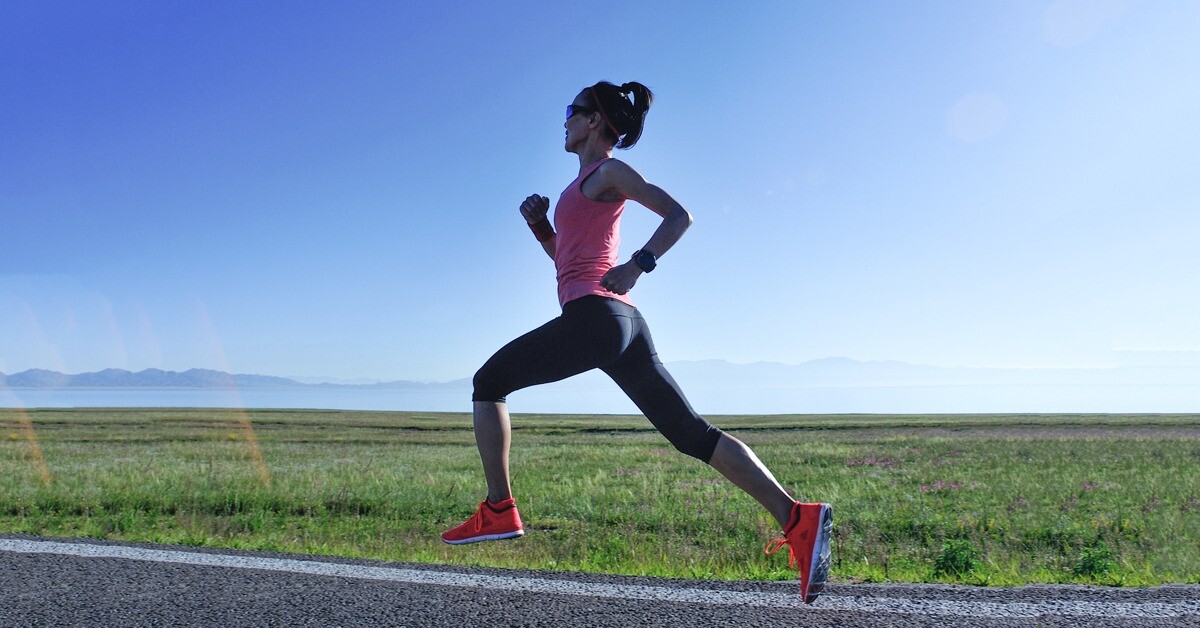
Your arms should swing forward and back like your legs do as you run, minimizing as much side-to-side motion as you can. Focus on making sure your arms don’t cross the midline of your body: lateral motion in your arms is a waste of energy and efficiency.
Similarly, work on sending your arms straight back behind you and avoiding any outward motion. Keep your elbows tucked in, and imagine your sleeve or arms almost grazing your ribs as they move.
Tip: Imagine an electric fence running from your chin to your torso, and don’t allow your hands to cross this midline when you run.
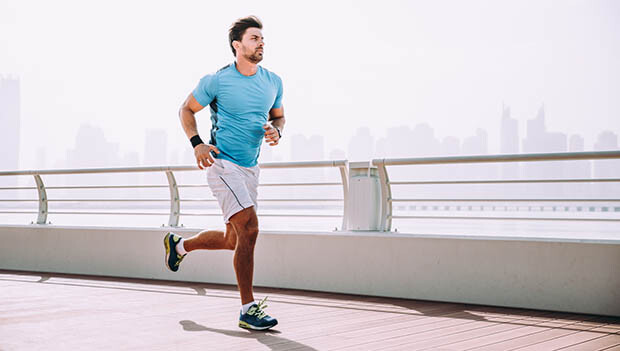
Bend elbows at 90 degrees
While this changes when running hills, when you’re running on level ground your elbows should be close to a 90-degree angle. Ideally, your forearm should be roughly parallel to the surface of the road when you go through the neutral part of the arm swing.
When you’re running uphill, the angle of your arms can become less acute (less than 90 degrees) and more obtuse (more than 90 degrees) when running downhill.
Tip: Try a quick reset if you notice your arms and shoulders are tense and creeping upwards. Shake arms out, take a deep breath and reposition.
Relax your hands and swing from the shoulders
Arm swing should begin from your shoulders, which should remain relaxed and as stationary as possible. Think of Eliud Kipchoge, the world’s fastest marathoner: his upper body is the epitome of relaxed and still when he races at extremely fast paces. Try consciously relaxing your hands–many of us tense up when running on tired legs or during a tough race.
Hands should be gently cupped as if trying to loosely hold (without crushing) a potato chip.
Tip: If you struggle with this, try running with a real potato chip in each hand to feel what proper hand and arm form is like.
(10/04/2022) ⚡AMPby Keeley Milne
Five annoying things you should never do in races
On Sunday at the 2022 London Marathon, 38-year-old runner Richard Lee-Wright from Devon, U.K., sprinted to the front off the start and ridiculously celebrated that he led the London Marathon for about 400m.
After the race, when the media asked Lee-Wright why he did this, he responded: “I bet a friend six years ago I could lead the London Marathon, and he thought there was no chance. I’d told people for years that I wanted to do this, and they laughed at me and didn’t believe I could do it.”
No matter the race size or distance, there’s always that one runner who gets out a little too hot, which can be annoying for all the other runners who are there to actually race.
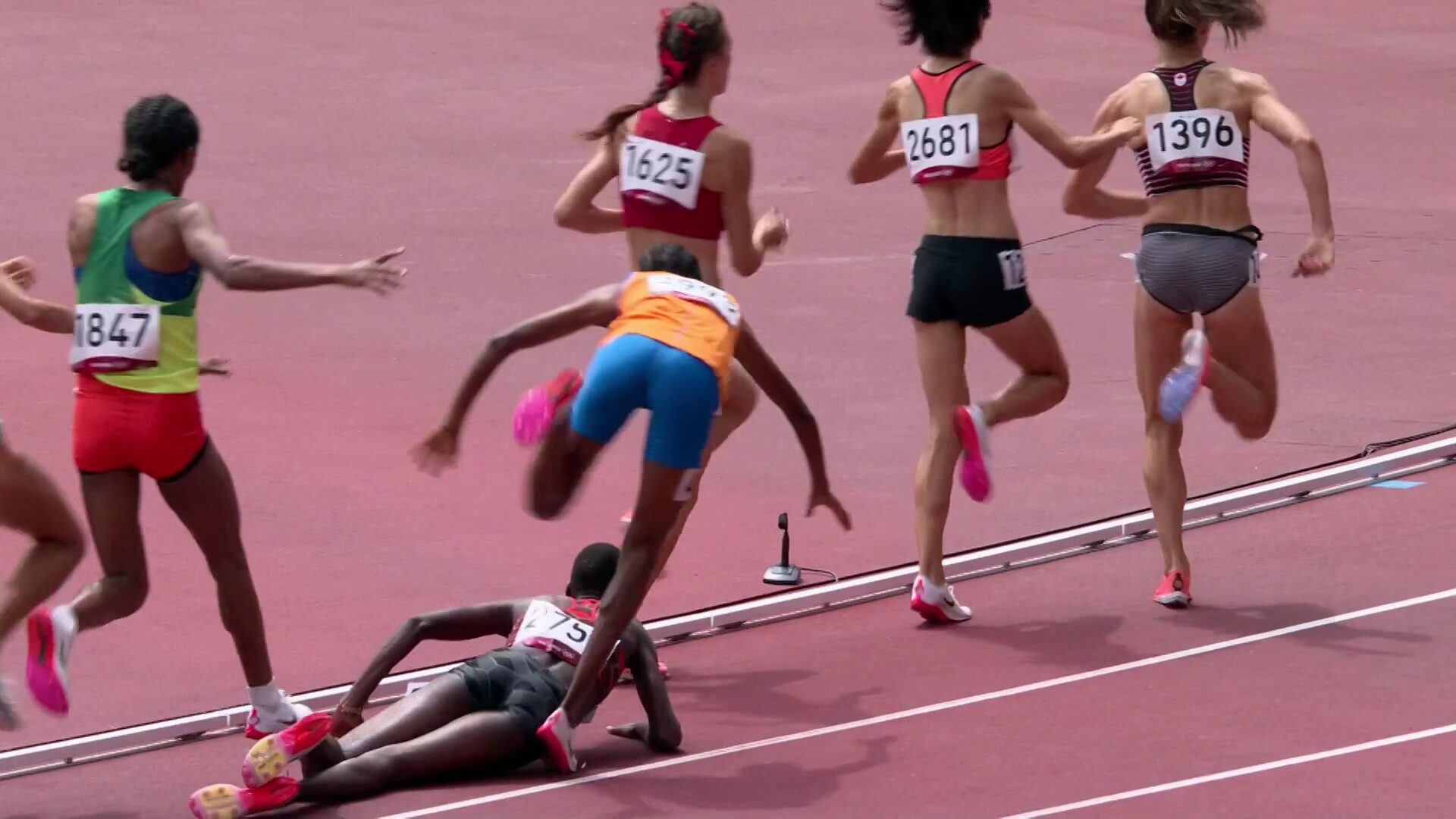
Here are five annoying things I’ve noticed runners typically do in a race.
Sprinting at the start

Although doing this may seem funny to you and your friends, leading the local 5K or marathon for roughly 30 seconds isn’t amusing or impressive. Ninety-nine per cent of the time, the runner who sprints at the start ends up struggling to finish.
Lee-Wright at the 2022 London Marathon is a fine example; he finished his marathon in 3:23:08 (which is a very average time for a 38-year-old) after training “six years” for this.
Cutting people off
When you are racing, the last thing you are thinking about is how to pass someone respectfully, but there’s nothing worse than being cut off by another runner. Accidents happen, and usually, the runner doesn’t mean to do it, but it’s essential to be mindful of your surroundings when passing so no one gets hurt. (And to apologize if you do accidentally cut someone off.)
Yelling out kilometer splits
If this is you, we know you are trying to be helpful to other runners, but everyone has a running watch nowadays and does not need you shouting out your kilometer splits every four minutes.
This can be looked at differently if you are a rabbit or pace bunny for another athlete.
Spitting uncontrollably
We get it, every runner has to do it; but there is a respectful/non-gross way to go about it. If you have to spit, move off to the side of the road instead of horking in the middle of a pack of other runners. The runners behind you will certainly be grateful that you moved out of the way.
Playing music out loud
The perfect running playlist is the one that isn’t on blast for thousands of runners to hear. If you want to listen to music during your race, wear headphones. Don’t assume that everyone wants to hear what you’re listening to.
(10/04/2022) ⚡AMPby Marley Dickinson
Kenyans Timothy Rono and Beatrice Cheptoo bag Melbourne Marathon titles
Timothy Rono and Beatrice Cheptoo bagged the men's and women's titles at the Nike Melbourne Marathon in Australia on Sunday.
Rono clocked 2:09:12, smashing Dominic Ondoro's course record by one minute and 30 seconds set in 2013.
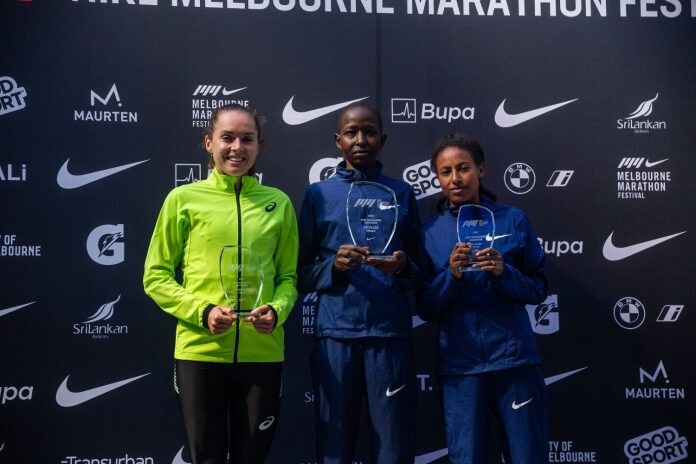
Compatriot Cornelius Kibet came second in 2:10:24 as Australia's Reece Edwards rounded the podium places in 2:14:41.
An ecstatic Rono was delighted with the victory in warm conditions in Australia's second-largest city.
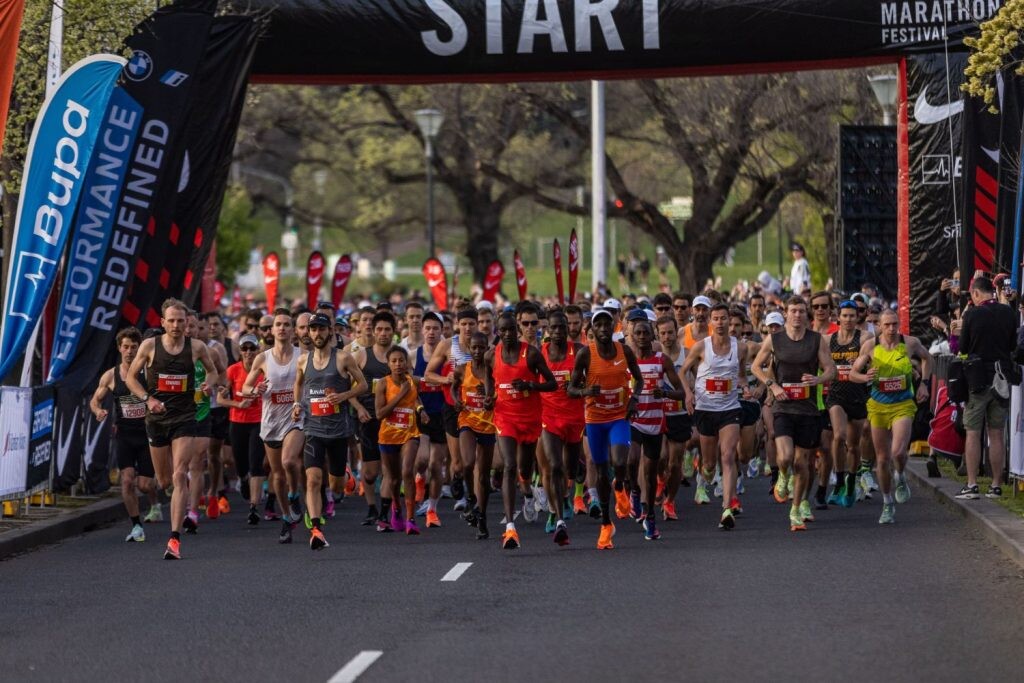
"It was a good race. The conditions were good, a bit cloudy but not too hot and not too cold. I had prepared for it from the start and I kept going until the end," added Rono.
Rono broke away with six kilometers to go after being pushed close by Kibet.
"I timed my race quite well. I know Kibet. I knew I have a stronger kick and that allowed me to increase the pace in the final few kilometers," said Rono.
Following the win, Rono has set his eyes on the bigger city marathons like Boston, New York, London come next year.
“I'm looking at participating in the big ones next year, God willing. I want to test myself against the best and I am relishing the challenge,” he added.
For the win Rono bagged a cool Sh3 million.
In the women's category, Cheptoo ran a superb race in a time of 2:27:58 on her debut on Australian soil .
Australia's Izzi Batt Doyle finished second in 2:28:10 with Maru Ejigu of Ethiopia third in 2:28:54
For the win Cheptoo bagged Sh2 million.
Australia's Jack Raynor won the men's half marathon in 1:02:16 while the women's category went to Jess Stenson in a time of 1:12:22.
Festival Director Marcus Gale, commented: “Congratulations to the winners and everyone who got involved in the 2022 Nike Melbourne Marathon Festival."
"Whether you were tackling the 42.195km for the first or 44th time, soaking up the city’s sights on the 3km track or cheering from the MCG grandstand, it was incredible to see the Australian running community out in full force and an honour to deliver another successful event for the city."
(10/03/2022) ⚡AMPby William Njuguna
Melbourne Marathon
Be a part of Australia’s largest marathon and race alongside marathon legends. Circle around Albert Park Lake, Flinders Street Station, pass the St Kilda beach foreshore and cross the finish line at the MCG to cheers from supporters, family and friends. The Nike Melbourne Marathon is a competitive, adrenaline-filled race for those experienced in marathon running who want to set...
more...Olympian Alexi Pappas runs 2022 London Marathon as guide for Para athlete
Greek Olympian Alexi Pappas is known for being a remarkable athlete, but can also boast credentials as a renowned author, filmmaker, and mental health advocate. Pappas can now add guiding a para-athlete in two World Major Marathons to her resume after she teamed up with visually impaired athlete Lisa Thompson for Sunday’s 2022 TCS London Marathon (their second marathon together, after running the Boston Marathon in April).
You’ll want to savour every moment of Pappas’ video on Instagram as it encapsulates her experience with teammate Thompson.
Thompson, 54, is a Houston-based real estate agent and has no sight in her left eye and very little in her right eye. She can see the ground but she has no depth perception. Thompson began running as a child as a way to cope with the challenges visual impairment caused her.
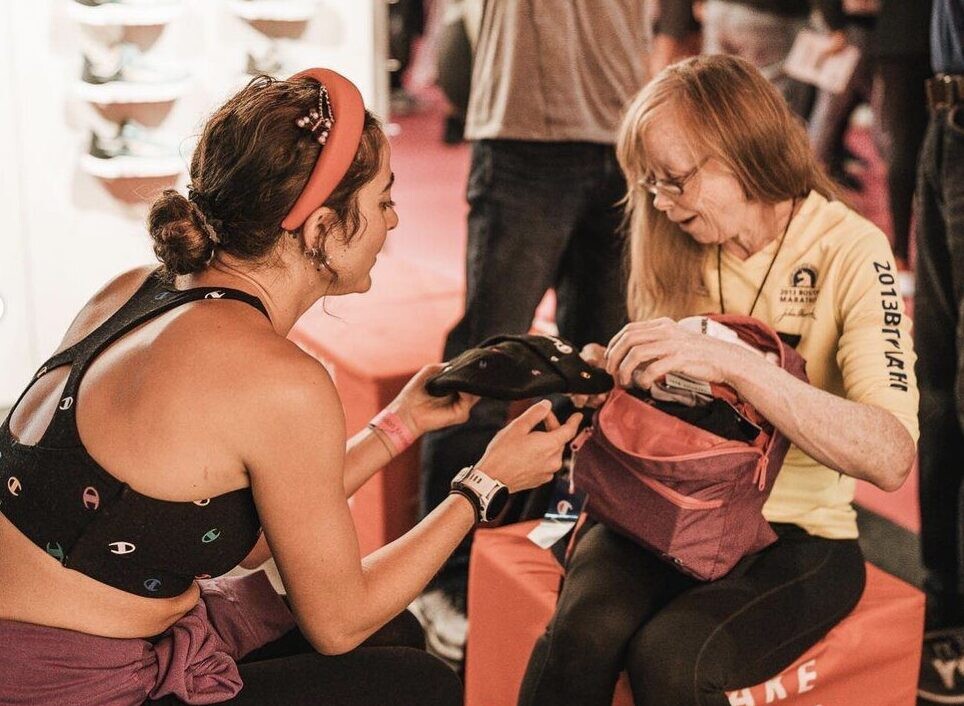
After experiencing some personal loss at age 40, a friend encouraged her to sign up for a race. Thompson completed her first half-marathon in 2008 and now has 27 marathons under her belt. In 2014, she ran a personal best of 3:16:50 at the Houston Marathon. Pappas and Thompson met through a mutual friend.
Thompson doesn’t need to run with a tether, but she does need someone to run alongside her. Despite some injury concerns heading into Boston, Thompson won the T13 (visual impairment) division in 3:47:25, with Pappas by her side. During Boston, Thompson dedicated every mile to someone in her life who passed away. She shared those moments with Pappas, and it strengthened the bond between them as teammates.
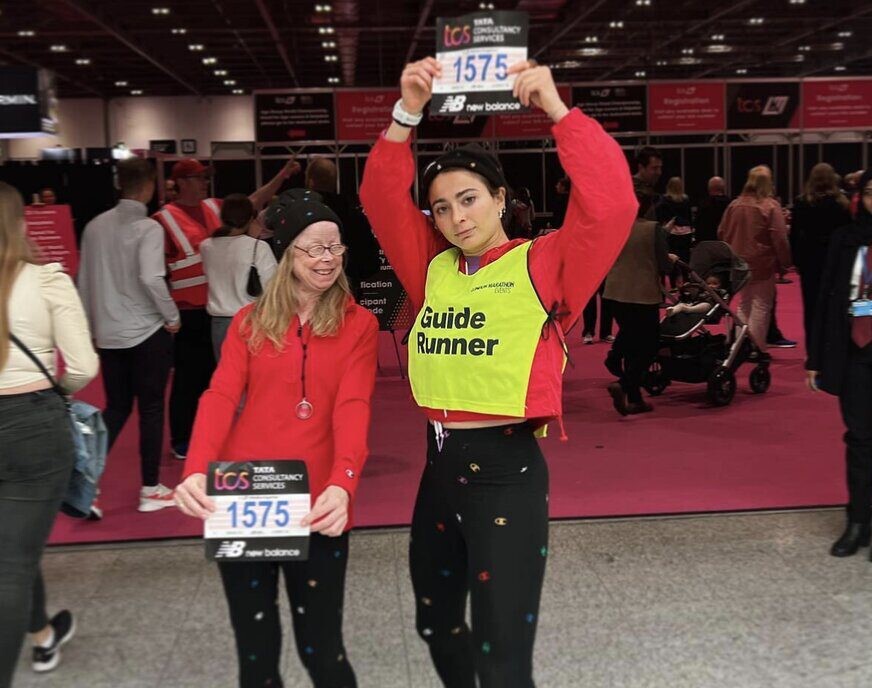
While Pappas has a marathon PB of 2:34, running as Thompson’s teammate at Boston was her first time experiencing the iconic race, while Thompson had successfully run it eight times before. Pappas and Thompson were both running the London Marathon for the first time, and crossed the finish line together in 3:59:18.
Before and after the London Marathon, Pappas took to social media to share her experience with Thompson, explaining that as Thompson’s teammate, she was, “an audiobook in a way.” Pappas points out people in unique costumes and uses metaphors to help guide Thompson through the crowds as they ran in both Boston and London.
“The runners are like an ocean,” Thompson and Pappas agree, discussing how hard it is not to get caught up in the crowds. “It takes a lot of confidence and composure to run your own race,” Pappas says. Pre-race, Thompson and Pappas agreed their goals were simply to enjoy the experience and to try to brighten someone else’s day
“Lisa and I soaked in all the accented cheers of the tree and people-lined streets. We loved the costumes. We loved the kids. We loved the chance to start right on the heels of the elite field,” Pappas shared after the marathon. “We were in a groove, having learned how to be teammates this spring in Boston. We were really good about tangents this time.”
“Running a marathon is like an orange: sometimes hard to get into but then wonderful, refreshing, messy, delicious. Good shared. Good alone. Happy Lisa and I were together today,” said Pappas.
Pappas and Thompson certainly achieved their goals at the 2022 London Marathon, becoming an inspiration for other runners along the way.
(10/03/2022) ⚡AMPby Keeley Milne
TCS London Marathon
The London Marathon was first run on March 29, 1981 and has been held in the spring of every year since 2010. It is sponsored by Virgin Money and was founded by the former Olympic champion and journalist Chris Brasher and Welsh athlete John Disley. It is organized by Hugh Brasher (son of Chris) as Race Director and Nick Bitel...
more...Eilish McColgan and Callum Hawkins triumph at Great Scottish Run
Eilish McColgan and Callum Hawkins secured home victories at the Great Scottish Run.
Commonwealth champion McColgan set a new British record and surpassed her own European mark by finishing in 30 minutes 18 seconds.
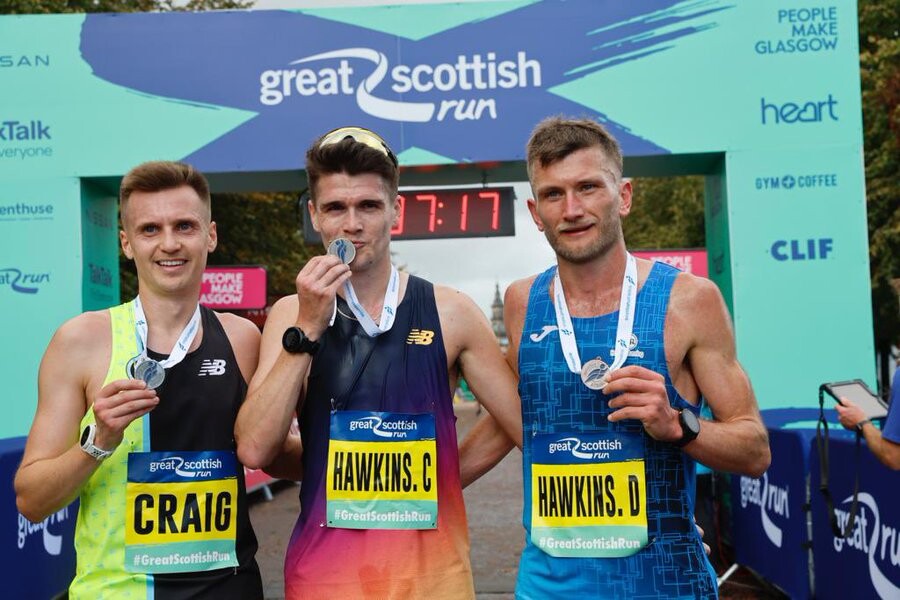
Fellow Scot Hawkins won the men's half marathon in 1:03:35 ahead of Adam Craig and Callum's brother Derek.
Irish athlete Michelle Finn won the women's half marathon in 1:12:33 and Lewis Hannigan won the men's 10k.
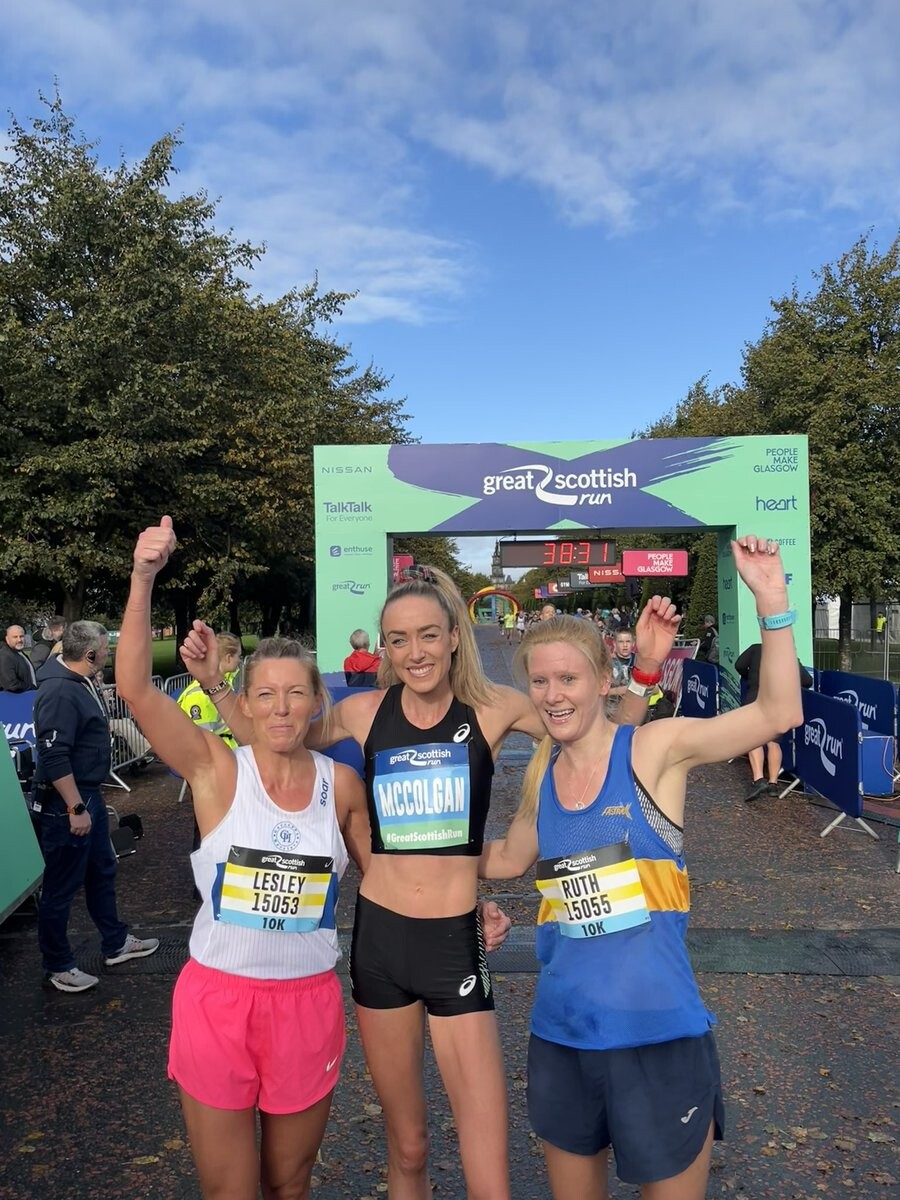
The Scotsman crossed the finish line in 29:33.
There was another Scottish winner in the women's wheelchair 10k, with Sammi Kinghorn's time of 26:40 more than two minutes faster than closest rival and compatriot Mel Woods.
Luke Deighton beat Kyle Brotherton to first place in the men's wheelchair 10k.
(10/03/2022) ⚡AMPGreat Scottish Run
Experience the inspiring atmosphere of Scotland’s biggest running event and achieve something great this autumn. This spectacular weekend of running is a celebration of sport that is suitable for the whole family and is televised live on the BBC. The Bank of Scotland Great Scottish Run half marathon welcomes thousands of runners to the city of Glasgow every year. The...
more...Kenenisa Bekele set new Marathon World Record for Masters but says he can run faster
Kenenisa Bekele made headlines last week by declaring “of course I am the best” long distance runner ever. But the Ethiopian was fifth-best at Sunday’s London Marathon, finishing 74 seconds behind Kenya’s Amos Kipruto.
Bekele, 40, clocked 2:05:53, the fastest-ever marathon by a runner 40 years or older. He was with the lead pack until being dropped in the 21st mile.
But Bekele estimated he could have run 90 to 120 seconds faster had he not missed parts of six weeks of training with hip and joint injuries.
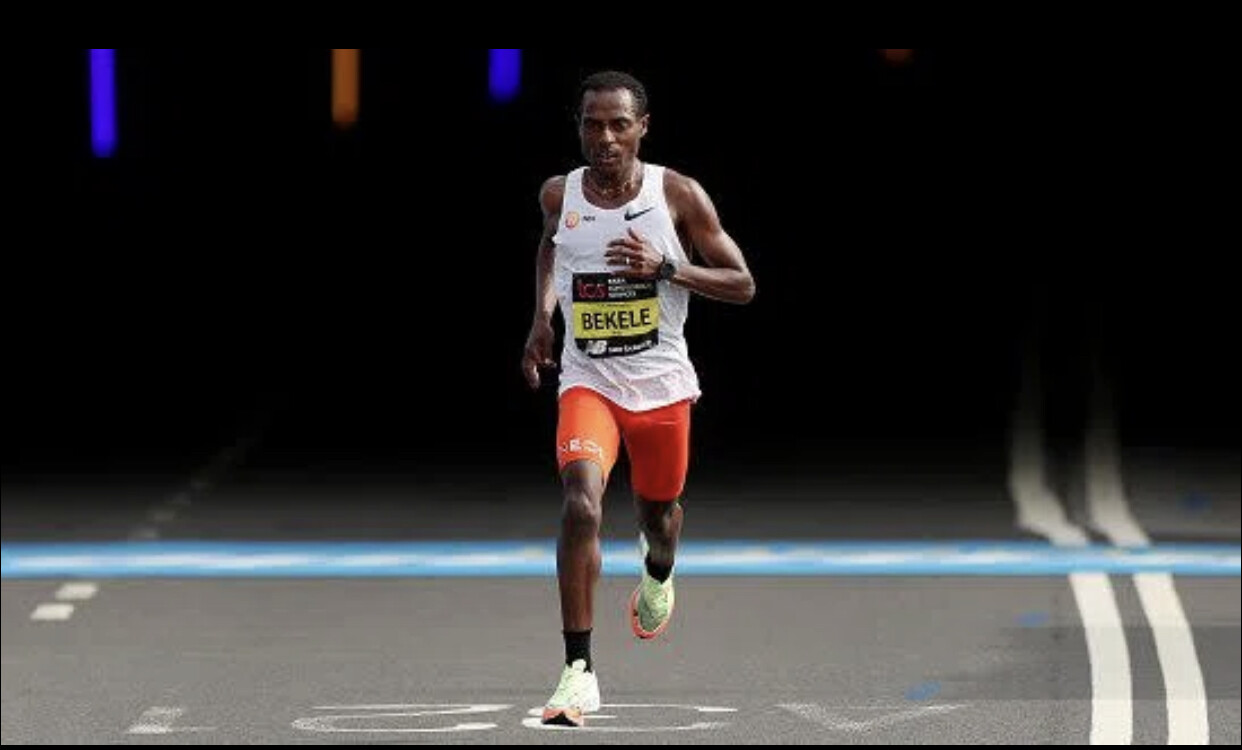
“I expect better even if the preparation is short,” he said. “I know my talent and I know my capacity, but really I couldn’t achieve what I expect.”
Bekele is the second-fastest marathoner in history behind Kenya’s Eliud Kipchoge, who broke his own world record by clocking 2:01:09 at the Berlin Marathon last week.
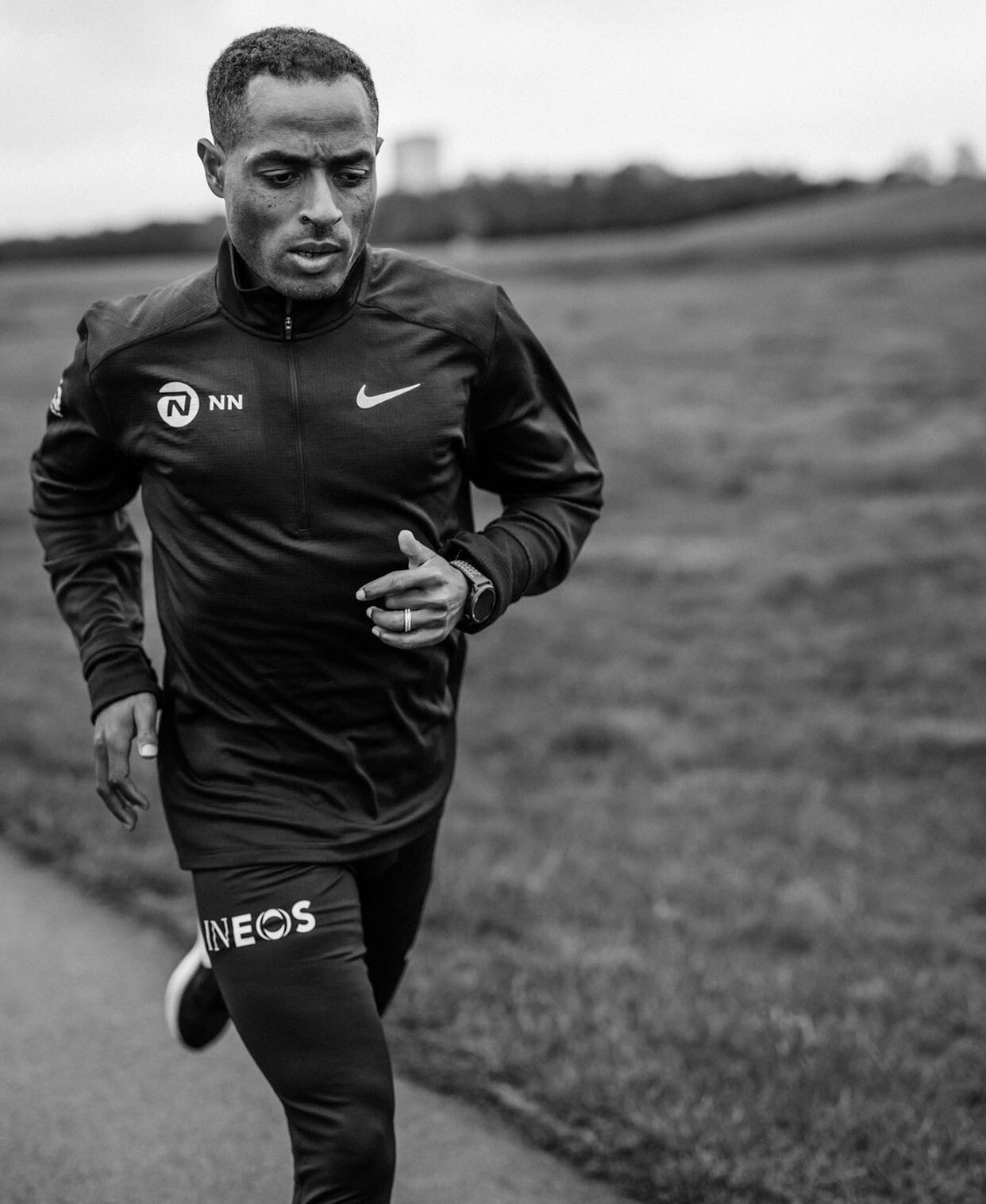
“I am happy when I see Eliud Kipchoge run that time,” Bekele said. “It motivates all athletes who really expect to do the same thing.”
Bekele’s best time was within two seconds of Kipchoge’s previous world record (2:01:39). He described breaking Kipchoge’s new mark as the “main goal” for the rest of his career.
“Yes, I hope, one day it will happen, of course,” Bekele said. “With good preparation, I don’t know when, but we will see one more time.”
Nobody has won more London Marathons than Kipchoge, a four-time champion who set the course record (2:02:37) in 2019. But the two-time Olympic marathon champion did not run this year in London, as elite marathoners typically choose to enter one race each spring and fall.
Bekele does not know which race he will enter in the spring. But it will not be against Kipchoge.
“I need to show something first,” Bekele said. “I need to run a fast time. I have to check myself. This is not enough.”
Kipchoge will try to become the first runner to win three Olympic marathon titles at the Paris Games. Bekele, who will be 42 in 2024, has not committed to trying to qualify for the Ethiopian team.
“There’s a long time to go before Paris,” Bekele said. “At this moment I am not decided. I have to show something.”
So who is the greatest long distance runner ever?
Bekele can make a strong case on the track:
Bekele Four Olympic medals (three gold)Six World Championship medals (five gold)Former 5000m and 10,000m world-record holder
Kipchoge Two Olympic medalsTwo World Championship medals (one gold)
But Kipchoge can make a strong case on the pavement:
Bekele Seconf-fastest marathoner in historyTwo World Marathon Major victories
Kipchoge Four of the five best marathon times in historyTwo-time Olympic marathon champion12 World Marathon Major victories
(10/03/2022) ⚡AMPTCS London Marathon
The London Marathon was first run on March 29, 1981 and has been held in the spring of every year since 2010. It is sponsored by Virgin Money and was founded by the former Olympic champion and journalist Chris Brasher and Welsh athlete John Disley. It is organized by Hugh Brasher (son of Chris) as Race Director and Nick Bitel...
more...Chronic Hip issues and running: How to properly manage the pain
If you’re experiencing chronic hip pain, running can be difficult and even painful. If this is the case for you, don’t let this stop you.
There are many different ways to manage chronic hip pain, so you can keep running without having to suffer. This article will explore several important ways to properly manage the pain caused by chronic hip issues and running.
Consulting with the doctor

If you’re experiencing chronic hip pain, the first thing you should do is consult with a doctor or physical therapist. They will be able to help you identify the source of your pain and recommend the best course of treatment
In some cases, they may recommend that you stop running for some time to allow your hips to heal. However, if your pain is manageable, they may give you the green light to continue running with some modifications.

On the other hand, if your pain is more severe and it causes you to stop running entirely, your doctor may recommend other forms of exercise that are easier on your hips, such as swimming or biking. There is also a possibility of hip replacement surgery if your pain is affecting your everyday life and other treatments haven’t worked. This procedure involves replacing your hip joint with an artificial one and is usually only recommended for people who are over the age of 60.
Stretching before and after running
One of the best ways to prevent or reduce hip pain while running is to stretch before and after your run. Stretching helps to increase flexibility and range of motion, which can make running less painful. It’s also a good idea to warm up before running with a short walk or slow jog to get your muscles prepared for exercise.
You can also use foam rollers or lacrosse balls to massage your hips and loosen up any tight muscles before stretching. After your run, be sure to cool down with a light walk or slow jog followed by static stretches for your hips, thighs, and calves.
Wearing the right shoes
Another important factor in preventing hip pain while running is wearing the right shoes. Running shoes should be comfortable and provide enough support to your feet, ankles, and knees.
If you’re not sure what type of shoe is right for you, consult with a professional at a running store who can help you find the perfect fit. It’s also important to replace your running shoes every 300-500 miles to ensure they’re providing the right amount of support.
Your running form can also contribute to hip pain. If you’re a heel-striker, try to land more on your midfoot or forefoot instead. This will help to take some of the impacts off of your hips. If you’re a forefoot striker, be sure not to overstride, which can cause your heel to strike the ground too hard and put more stress on your hips.
Changing your running surface
The type of surface you run on can also impact your hip pain. If you typically run on pavement, try running on a softer surface such as a dirt trail or grass. This will help to reduce the impact on your hips and knees. If you’re a runner who likes to race, try running on a treadmill instead of the pavement to reduce your risk of injury.
Additionally, if you have access to a pool, water running is a great way to get in a workout without putting too much stress on your hips.
Cross-training
In addition to running, it’s important to incorporate other forms of exercise into your routine to give your hips a break. Swimming, biking, and elliptical training are all low-impact exercises that are easy on the hips. Strength training is also important to build up the muscles around your hips and protect them from injury.
However, if you’re carrying around extra weight, it can put additional strain on your hips. Losing even a few pounds can help to reduce your hip pain.
If you are suffering from chronic hip pain, there are many different ways to manage it. Speak with your doctor about the best course of action for you, and don’t let hip pain stop you from enjoying the health benefits of running. With the proper precautions and treatments, you can continue to run pain-free.
(10/03/2022) ⚡AMPby Colorado Runner
Geoffrey Koech won the men's elite race at the Cardiff Half Marathon on Sunday
The Kenyan just failed to beat the hour mark, crossing the line in 1:00:01, with Gizealaw Ayana second and fellow Ethiopian Chimdessa Gudeta third.
Beatrice Cheserek secured a Kenyan double by winning the women's race in 1:06:48 ahead of compatriot Viola Chepngeno and Ethiopian Zewditu Aderaw.
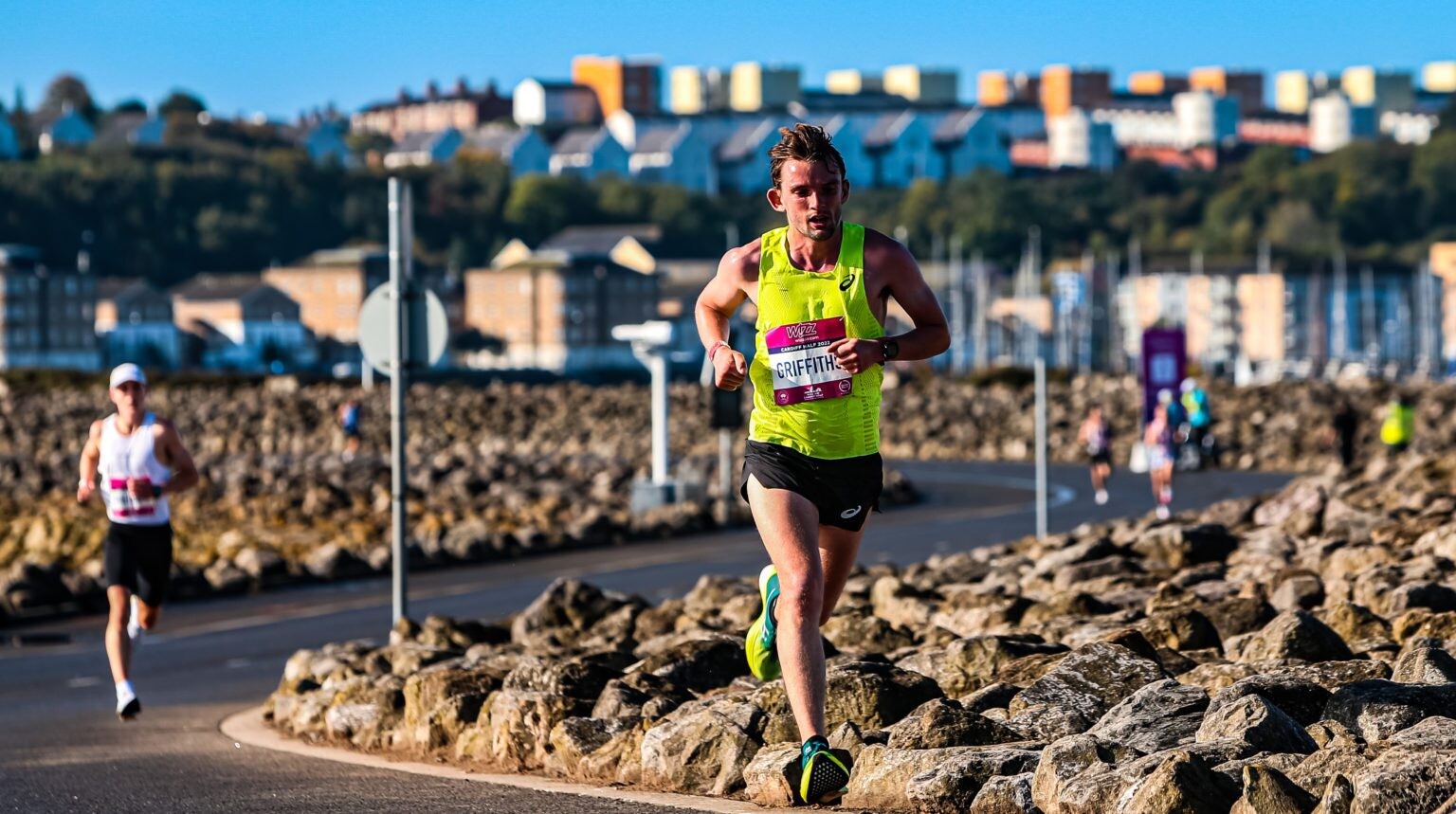
Mel Nicholls won the women's wheelchair race in 1:00:19, with Richie Powell taking the men's title in 1:08:44.
"The course is good. It feels good to win here and I pushed really hard. This is my fastest performance in Cardiff," said Koech, the pre-race favourite.
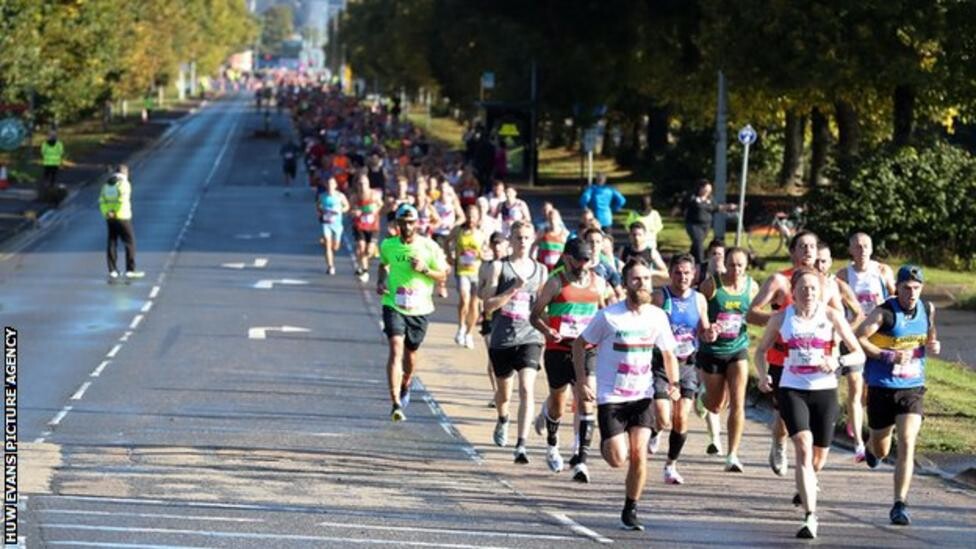
Cheserek was delighted after adding the Cardiff title to the Gothenburg Half Marathon she won last September: "This was my first time in Cardiff. The support was fantastic and helped me to work hard."
Swansea Harrier Dewi Griffiths was the best placed elite British man in eighth (1:04:15), with Cwmbran's Natasha Cockram (1:13:12) claiming seventh among the women.
"After the first 400m, I realised this is why I love this race," said Griffiths. "You get so much support as a Welshman all the way around and the crowds really kept me going when it got tough."
The 19th edition of the event in south Wales coincided with the running of the 2022 London Marathon, with an estimated 25,000 runners taking part in the Welsh capital.
Cockram had planned to compete at the London Marathon but a bout of Covid altered her plans.
"There was no way I was going to be marathon ready so soon after Covid," she said.
"Obviously today was a lot slower than back in March but I'm happy to come out here and win the domestic part of the race. There were some fast girls up at the front but happy with that at the end of a 100-mile week.
"I love returning here - it's home and the crowds are amazing. It was all a bit of a rush, I only decided on Friday to come but I am so glad I came."
The Cardiff Half Marathon course records are held by Kenya's Leonard Langat, who ran 0:59:30 in 2019, with compatriot Edith Chelimo setting a fastest women's mark of 1:05:52 in 2017.
(10/02/2022) ⚡AMPWizz Cardiff Half Marathon
The Cardiff University/Cardiff Half Marathon has grown into one of the largest road races in the United Kingdom. The first event took place back in 2003. The event is not only the UK’s second largest half marathon, it is Wales’ largest road race and Wales’ largest multi-charity fund raising event. The race is sponsored by Cardiff University and supported by...
more...Yehualaw and Kipruto cruise to convincing wins at London Marathon
In just the second marathon of her career, Yalemzerf Yehualaw overcame a heavy fall to win the women’s race at the TCS London Marathon, while Kenya’s Amos Kipruto made a decisive move with two miles to go to take the men’s title at the World Athletics Elite Platinum road race on Sunday (2).
Yehualaw won in 2:17:26 – the third-fastest time ever achieved on the streets of London – while Kipruto’s closing speed brought him home in 2:04:39.
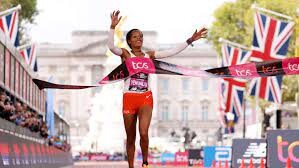
The opening pace in the women’s race was swift, as it often is on the slightly downhill section of the course. The lead pack of eight women – including Yehualaw and defending champion Joyciline Jepkosgei – passed through the first 5km in 16:01 and they reached 10km in 32:18. That early pace suggested a finishing time of 2:16:15 – well inside the women-only world record of 2:17:01 – but the tempo soon started to drop.
The same eight women were still together through 15km (48:51) and at half way, which was reached in 1:08:46. Hiwot Gebrekidan was unable to stay with the pack for much longer and the lead group was reduced to seven women by 25km (1:21:29), the pacemakers having now dropped out.
Asefa Kebede started to push the pace as the lead group embarked on the second half, with Yehualaw biding her time near the back of the pack. Jepkosgei and Joan Chelimo Melly, meanwhile, looked comfortable in the middle of the pack.
With about 10km to go, Yehualaw tripped on a bump in the road and fell hard, just as she had done at the 2020 World Half Marathon Championships where she went on to take bronze. She quickly got back up on her feet and rejoined the lead pack a minute or two later.
Melly and Ashete Bekere were next to drop off the pace, followed by Kebede, leaving just four women in the lead pack: Jepkosgei, world silver medallist Judith Jeptum, Alemu Megertu and Yehualaw. They reached 35km in 1:54:30, their predicted finishing time now outside 2:18:00, but the real racing was just beginning.
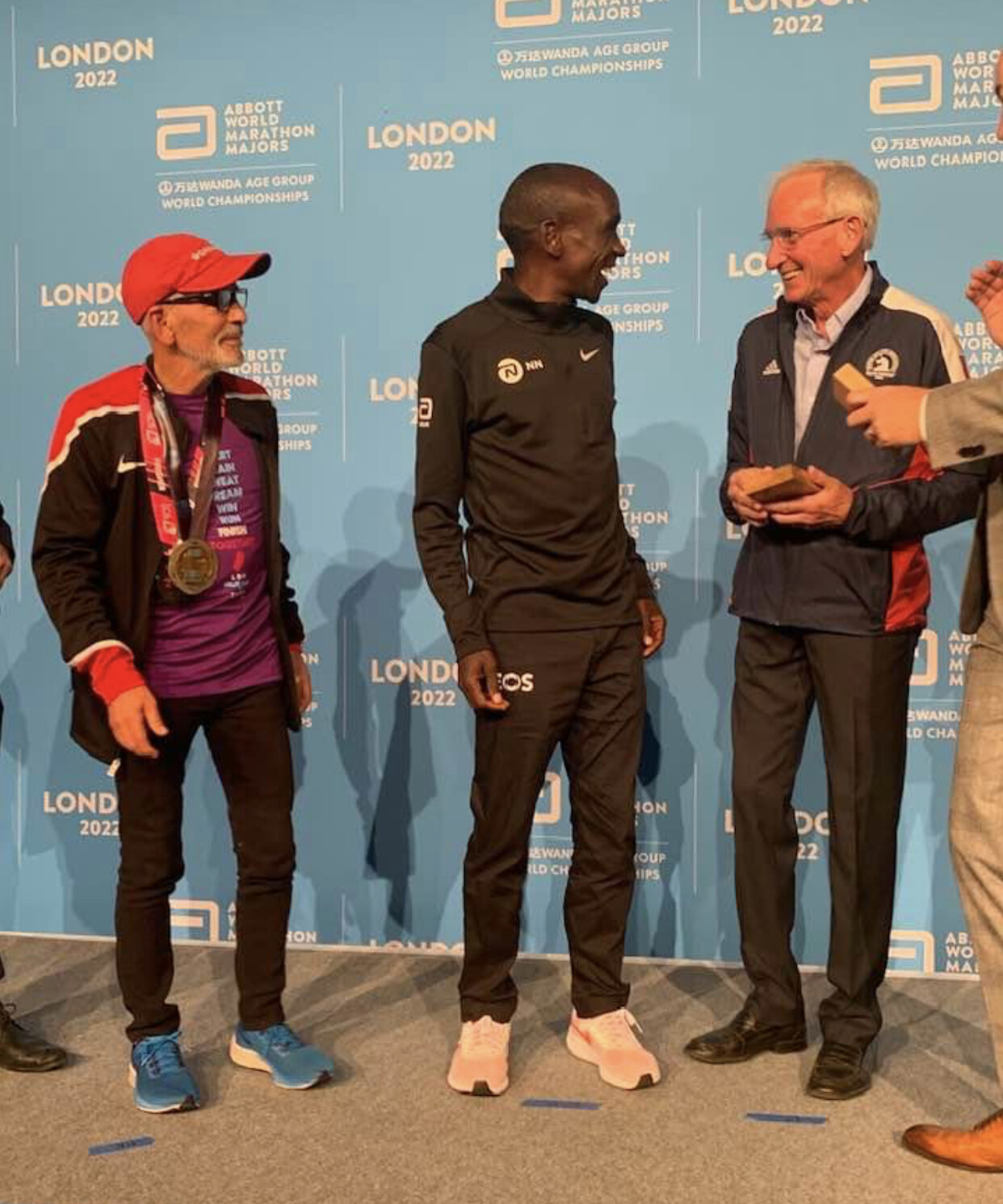
After two hours of running, Yehualaw started to increase her pace. A sizzling 4:43 split for the 24th mile broke up what was left of the lead pack, and within a couple of minutes the Ethiopian had a clear lead over Jepkosgei with Megertu and Jeptum further behind.
Showing no ill effects of her earlier fall, and running with the confidence of a seasoned marathon runner, Yehualaw continued to forge ahead in the closing stages and went on to win by 41 seconds in 2:17:26, just three seconds shy of the PB she set on her debut in Hamburg earlier this year. It’s also the third-fastest time ever recorded in London, behind the world records set by Paula Radcliffe (2:15:25) and Mary Keitany (2:17:01, women-only).
"I am so happy to win here in London," said Yehualaw. "I have worked very hard to prepare for this race and to take the victory is amazing."Jepkosgei held on to finish second in 2:18:07 and Megertu completed the podium in 2:18:32, a PB by 19 seconds. For the first time ever, six women finished in 2:19:30 or quicker.
Kipruto conquers quality field for first world marathon major
The opening pace in the men’s race was more steady and consistent than the women’s race, but the race unfolded in a similar fashion with a group of seven men running together through the early checkpoints. They covered 5km in 14:45, 10km in 29:26 and 15km in 44:20, suggesting a finishing time inside 2:05.
Kenenisa Bekele featured prominently in the lead pack, while defending champion Sisay Lemma held back slightly near the rear of the group. World and Olympic bronze medallist Bashir Abdi and Kenya’s Amos Kipruto were also in contention.
They reached 25km in 1:13:41, still on course for a finishing time just outside 2:04 and with the same seven men still running together. At about 33km, Bekele started to fall off the pace of the lead pack, but he stayed in the race and kept the leaders in sight.
About 15 minutes later – and at roughly the same part of the course where Yehualaw made her move in the women’s race – Kipruto accelerated away from the rest of the pack, opening up a significant lead within a relatively short space of time. A 4:21 split for the 25th mile proved decisive and it soon became clear that victory would be his.
He went on to win by more than half a minute, crossing the line in 2:04:39 to achieve his first victory in a marathon major, following three podium finishes in Berlin and Tokyo in recent years. Ethiopia’s Leul Gebresilase came through to take second place in 2:05:12, seven seconds ahead of Abdi.
Kinde Atanaw was fourth in 2:05:27, followed by Bekele in fifth in 2:05:53, his fastest time for three years. He also becomes the first 40-year-old to run a marathon faster than 2:06.
third photo: Gene Dykes on podium after winning the 70-74 age group with Eluid Kipchoge, the Goat!
(10/02/2022) ⚡AMPby Jon Mulkeen (World Athletics)
TCS London Marathon
The London Marathon was first run on March 29, 1981 and has been held in the spring of every year since 2010. It is sponsored by Virgin Money and was founded by the former Olympic champion and journalist Chris Brasher and Welsh athlete John Disley. It is organized by Hugh Brasher (son of Chris) as Race Director and Nick Bitel...
more...Four Takeaways From The Training of Eliud Kipchoge, Marathon GOAT
Eliud Kipchoge is so dominant in the marathon that I think his brilliance might even be underappreciated. How can you fully understand the context of history when you're living in the middle of it? Kipchoge isn't just great. He outran "great" about 5 years ago. He is now something like a miracle.
On Twitter, coach and writer Steve Magness summarized Kipchoge's accomplishments. Since 2013, he has won 17 of the 19 marathons he has entered. His two slowest times during that timespan WON OLYMPIC GOLD MEDALS. He also broke 2 hours in an unsanctioned event, and almost broke it another time. This is Sandy Koufax in the 1960s mixed with Michael Jordan in the 1990s mixed with a malfunctioning ATM machine that keeps spitting out $20 bills.
Marathons are captivating because they are physiological and psychological nightmares. A 2021 study in the Journal of Applied Physiology examined the physical characteristics of a sub-2 hour marathon and found that it requires holding an extremely high percentage of an astronomically high VO2 max, with metabolic/aerobic efficiency near the limits of what is conceivable.

The study indicated that what seemed physiologically impossible just a few years ago actually just required years of training, otherworldly talent, and work ethic to put it all together. It took an athlete at the 99.99th percentile of humanity in talent and toughness and focus.
If you could draw up that perfect marathoner in a simulation, the result would be Eliud Kipchoge.
Training Context
I love digging into the training of the GOATs while they are at the peak of their powers. When the margins separating athletes at the top level are so narrow, how can someone put a Grand Canyon between themselves and their competitors?
On trails, we have Kilian Jornet publishing his training logs and Strava files, doing podcast interviews, and sharing every secret. On roads, however, it can be harder to know exactly what athletes are doing and how it fits into the broader context of training theory. This article attempts to decipher some of the clues, following breadcrumbs from articles and interviews to lessons from Kipchoge's unthinkable dominance.
First, a few disclaimers. One day, I plan to go under 2 hours as I recite the list of reasons I might be wrong in my conclusions from uncertain data. (That day is not today.)
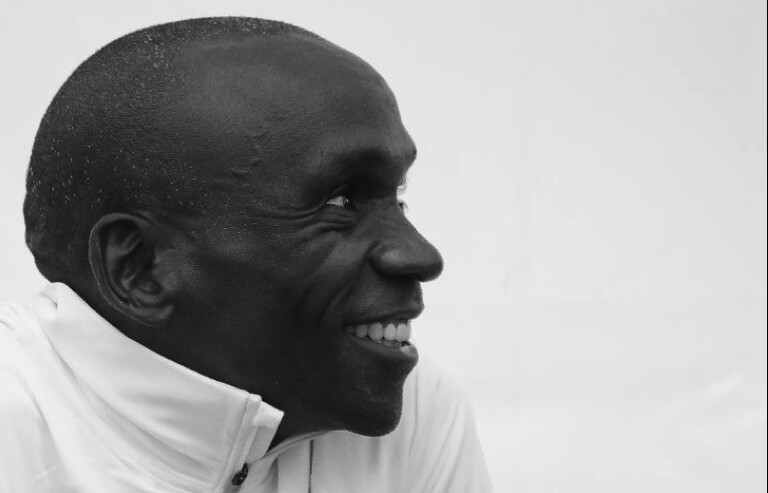
The main hesitation is that there is no definite training log for Kipchoge. My favorite source that I will be referring to constantly in this article was written by Cathal Dennehy for Outside in November 2021. Dennehy had inside access to Kipchoge's training camp and interviewed his coach, Patrick Sang. That access is key for factual accuracy because there are rumors that some of the online sources purporting to describe Kipchoge's training are approximations at best, and downright fictional at worst.
While there is general agreement on some principles applied by Kipchoge and Coach Sang across interviews and secondary sources, the specifics may remain murky for a while. This article will be trying to describe the outline of a yacht from a foot beneath the surface of the water.
In addition, it's tough to even know whether the reliable sources tell the entire story. In trail running, there are so many variables that go into top performance (many of which downregulate other variables associated with performance), that there is little disincentive to be fully transparent. Anyone can do Kilian Jornet training, but only Kilian will get Kilian results, because there are countless stumbling blocks between process and outcome on rocky, steep trails.
Road marathons are different. That 2021 study laid out the exact physiological metrics an athlete needed. If someone mastered a training approach to reach those metrics, it's conceivable that copycats with 99.99th percentile genetics would show up at every marathon ready to go GOAT hunting. There are strong disincentives to printing out 1,000 copies of a treasure map while you're still busy gathering gold.
Finally, even if the information is approximately correct, it's still N=1. Plus, there is the unfortunate reality that all world-class athletes face questions about performance enhancing drugs, though to my knowledge there is no reliable evidence here other than very, very fast times. And for the love of all sports, we can't let top performance alone form the basis for doping accusations (though it's always healthy to ask questions).
Even acknowledging those disclaimers, there is a wealth of online information that can give us a solid feel for Kipchoge's general approach, which could have takeaways for everyone. Let's look at 4 lessons from the marathon GOAT, with added context from the scientific literature and training theory. For a more nuanced discussion, my co-coach Megan and I broke down these principles and more on the newest episode of our podcast.
One: Most of Kipchoge's training is very easy.
The Outside article has so much fantastic insight, and it wastes no time getting to the sexy stuff. "For Kipchoge, recovery runs start at a shuffle, typically an 8:30-to-8:45-minute-mile pace, and slowly build up to finish around 6:30 to 7 minutes per mile."
Want to see my favorite video of all time? Check out the Kenyan shuffle to start one of their double runs, filmed by Dennehy. Some people put up a poster of Koufax winding up for a pitch or Jordan taking off from the free-throw line, but I want a poster of Kipchoge shuffling his way to greatness.
Okay, time to put on your speculation helmets! For an athlete like Kipchoge, 8:30 pace is nearly double what he does in a marathon, meaning his heart rate may be as low as 100-110 to start. Even if he accelerates to 6:30s, that's still a huge percentage slower than his marathon pace, probably equivalent to Zone 1 heart rate in a 5-Zone model.
Now, buckle up your conjecture belt, because it's MATH TIME. Dennehy broke down an entire training week that gives us clues into the start of one of Kipchoge's builds (disclaimer: perhaps his training changes a ton later in cycles). It seems that 4 of Kipchoge's training days are purely easy, consisting of 3 x 18 mile doubles (as 12 miles in AM and 6 miles in PM) plus 1 x 2 hours at easy effort (maybe 16-18 miles). Add onto that 2 x 6 mile easy doubles on his workout days.
That puts him around 84 miles that are almost purely easy, and I am guessing firmly in Zone 1. There are probably some miles of warm-up and cool-down for workouts on top of that, also very easy. Let's estimate 100 easy miles in a week around 130 miles.
That would indicate that 77% is in Zone 1 or just a bit higher! Perhaps that approximation is wrong and some of those miles are in lower Zone 2, or maybe there is more steady running on some of those recovery runs than is reflected in the article. But still, that's a lot of easy running. People gasped when Jornet's training summary included 58% in Zone 1, but perhaps that was just a normal range for the GOATs.
The low-end aerobic training supports the high-end training in athletes doing very high volumes. On our podcast, we discussed where an athlete might want to start thinking about specific Zone 1 work as a training focus, and we approximated around 8-10 hours a week. So it doesn't mean you need to go this easy, but you should definitely feel permission to go very easy relative to your physiological limits. Again, no pace is too slow for aerobic development.
If the GOAT can start at a shuffle, we can all start at a shuffle.
Some people put up a poster of Koufax winding up for a pitch or Jordan taking off from the free-throw line, but I want a poster of Kipchoge shuffling his way to greatness.
Two: Kipchoge does high volume training, but not higher than other world-class athletes.
How does someone become the best of the best? The tempting answer is to say: "By doing more than the wannabe best." The right answer is more complicated.
Dennehy indicates that Kipchoge does 124-136 miles per week, largely in repeating weekly structure with workout and long run variation. That likely equates to around 16-17 hours of running per week, similar to many of Jornet's 20-hour weeks. A 2022 review article in Sports Medicine-Open found that world-class marathoners train around 99-136 miles per week and 500-700 hours per year, so Kipchoge falls within the normal range.
In terms of intensity distribution, Kipchoge likely does most of his training purely easy in Zone 1, with some work in Zone 2 on long runs, a lot of Zone 3 tempo in workouts and long runs, a small amount of Zone 4 threshold on workouts, and very little Zone 5 of pure intensity. It's classically Pyramidal training, with most easy, some moderate, and little hard, a lot like we saw with Kilian Jornet (or with cyclists and skiers).
I think it's significant that a couple months before his 38th birthday, Kipchoge is still getting faster and faster. He has done that by prioritizing sustainable aerobic development every single training cycle.
Discipline with easy training allows athletes to build up volume that supports more economical workouts, creating a positive feedback cycle over the many years required to explore the limits.
Three: Kipchoge runs controlled workouts, with disciplined intensity control.
The hardest place to get athlete buy-in is right here. Faster is often not better in workouts, particularly for advanced athletes.
I can already feel some readers recoiling from that idea. If you can do mile repeats at a 6-minute pace, why would you ever run 6:30s?!
Kipchoge's training is another pillar of support for controlled workouts. Dennehy quotes Kipchoge: "I try not to run 100 percent," he says. "I perform 80 percent on Tuesday, Thursday, and Saturday and then at 50 percent Monday, Wednesday, Friday, and Sunday."
Those 80% days are workout days. The 50% days are the easy run days. Then he shows up on race day with 100% of his capabilities and proceeds to annihilate our wildest imaginations.
Now is a time to reemphasize that we've ventured into murky waters. Workout descriptions abound online, but how many are perfectly instructive? Honestly, I don't know. I have a habit of cleaning out my ear wax with my car keys. I use Chocolate Chex as an iron supplement. Please take everything I say with a grain of salt (I also put salt in my tea before AM runs, with creamer and maple syrup).
But we can approximate a zoomed-out description of his sessions, with the workouts seeming to involve very relaxed intervals between marathon and half-marathon pace, sometimes combined with faster intervals closer to 10k speed. The example given by Dennehy is this combo session, all on a rough dirt track at altitude:
Those mile intervals look fast, but for Kipchoge, that's a casual pace around his marathon effort (or a bit harder considering the track and altitude). The quarters are around 10k pace or slightly faster, depending on altitude adjustment. That's a big session in terms of volume, but probably right around the 80% in terms of his effort (which is mind-blowing on its own).
The principles are great to apply to all athletes-a combination workout of more aerobic intervals followed by speed/power is a strong setup. However, the volume is likely excessive for almost anyone occupying space outside the tail-end of the human talent bell curve. A comparable session for an advanced athlete might be 4 x mile at 1-hour effort progressing to 10k effort, followed by 6 x 200 meters faster.
You probably noticed that there is an offset between 4 x 1 mile at 1-hour effort (what I recommend for most athletes) versus 8 x 1 mile around marathon pace (what Kipchoge did). Why the offset? And now, my fellow intrepid training explorers, it's time for us to run head first into a training theory brick wall of uncertainty.
That type of strict intensity control looks a lot like Norwegian training, where athletes do many relaxed intervals around threshold effort. But I think there's a problem. Does strict intensity-controlled training like that done by Kipchoge or the Norwegians work for normal people?
The answer to that question is complex. Yes, it will improve aerobic development at the cellular level. But when an athlete has mechanical limitations that prevent them from running efficiently at these controlled efforts, the workouts may result in an aerobic beast without the mechanical power and efficiency to actually run fast. It's notable that Kipchoge, Jornet, and the Ingebrigstens were all fast as hell as teenagers. Take someone that is already fast as hell, focus mostly on their aerobic development, and guess what? You have someone that can run fast as hell for long as hell.
But what about everyone else?
In coaching, I have made some compromises around this problem. For intermediate athletes, the controlled intervals are often best around 10k effort-not overly intense to allow for aerobic development, but not so relaxed that they just run slow. For advanced athletes, it's somewhere between that 10k effort (approximating critical power) and threshold effort (1-hour effort).
For pros, it's usually half marathon effort to threshold/CP. It's obviously more complex than that on a weekly basis, I just think it's key to be careful applying the principles that work for a Ferrari to all of us Chevy Volts.
Four: Kipchoge does quality long runs most weeks.
One of the reasons why I got so giddy when I saw Kilian Jornet's training was the consistent repetition of long tempo runs. Throughout his training, he would do sessions on trails in Zone 3, sometimes over 20-30km. And most sources say that Kipchoge is famous for his long, progressive runs that start easy and end moderately hard. Two GOATS make a trend!
That also overlaps with the training approach for Coach Renato Canova, one of the best marathon coaches in history. I bet we're seeing something very cool about how physiology works in these long events.
Dennehy's article describes an alternating weekly schedule. One week will be 19 miles, the next 25 miles, over hilly terrain. Other sources describe a run that starts easy, before progressing to steady, and inching down toward 5-minute miles by the end. That's an extended time of moderate running over hilly terrain, with most likely around Zone 3 tempo.
You see these long, quality runs in the logs of tons of world-class athletes. The likely rationale is that long runs progressing to sustainably fast (but still aerobic) speeds approach the maximal strain on the aerobic system and the underlying lipid oxidation that powers it. That improves the body's ability to preserve and recover glycogen stores, a key determinant of how hard an athlete can push in endurance events.
I think all athletes can benefit from a bit more steady tempo in long runs. However, it's key to make sure it doesn't turn into a hard, race-like effort. Exceeding lactate threshold excessively could counteract some of the aerobic development from the sessions.
And it's even more complicated in trail running, when heart rate gets higher on climbs. That's why I'll often have athletes do their long runs "easy/moderate," not referring to a specific effort level, but giving permission to move up toward threshold on uphills. After seeing this overlap between Jornet and Kipchoge, I am planning on adding more consistent 1-2 hour controlled tempos around 50k effort for advanced athletes who are not doing many training races (which can serve a similar purpose).
Final Takeaway
After running the new world record, Kipchoge had a tweet ready to fire off. He does everything fast.
"Limits are there to be broken. By you and me together. I can say that I am beyond happy today that the official world record is once again faster. Thank you to all the runners in the world that inspire me every day to push myself."
Even in his moment of triumph, he shows gratitude to every other runner. He seems like such a great human. What is it about running that makes our heroes so uniquely kind and caring? Eliud, Kilian, Courtney, Clare, countless others-all wonderful people, using their platforms to spread kindness and love.
I don't know the answer to that question, but I have a theory. When Kipchoge pushes the limits of what humanity can achieve, he is feeling all of the same chemical and emotional sensations that you or I feel when we push our own limits. Yeah, we might be doing it a bit slower. But I think there is some universal truth to be found at the personal edge.
Peer over the edge, and what do you see? I have done hill workouts where I have lost faith and then found faith over and over and over. Running sucks, and it's also the most beautiful thing in the world, sometimes simultaneously. It can be a brutal reminder of death and a transcendent affirmation of life.
As runners, we are constantly asking questions: Can I run my first 5k? Can I finish this hill workout? Can I overcome this stress fracture? We all feel the same physical sensations in that journey, a chemical shitstorm of pain and joy. Over time, with patience and grit, we learn that we can do all of those things and more! So we ask bigger and bigger questions, layering leaps of faith on top of one another as we explore our personal edges.
And for a few athletes on the planet, all of that questioning leads to a really big one: Can I run a world record? I think that in saying that we all inspire him, Kipchoge is saying that his world record attempt shares an evolutionary through line with our first mile, our hill workouts, our injuries. His achievement is the pinnacle of a pyramid of questions that all get at a similar idea.
What is actually possible with my time here on Earth?
Therein lies the fun part of an often not-fun sport. You have to layer one thousand leaps of faith on top of each other to start getting a hint of the answer. And the answer is that the answer doesn't really matter.
But the leaps? Nothing in the world matters more than taking those leaps.
(10/02/2022) ⚡AMPby Trail Runner Magazine
Five Major Signs That Your Nutrition Plan Isn't Working for You
Picture this: Your training block is going seemingly well. You're able to handle more miles, and things are feeling more effortless . . . until they aren't. It's as if you hit a wall. Your sleep is hit-or-miss, and you have an insatiable hunger that just won't disappear. Maybe this has happened in the past but you shrugged it off as too much training volume too quickly. The thought of nutrition's role hasn't even crossed your mind.
Too often we think we're doing all the right things with our nutrition choices, but over and over we keep running into the same health and performance challenges. Why?

Many runners jump to the conclusion that it must be the training, their age, or even that their body's genetics has something wrong with it. Or maybe they think they need a million supplements and then everything will be in working order. They end up doing what billions of others do in this situation. They restrict more foods, fuel less, and buy hundreds of dollars of supplements, only to be caught in the same exact cycle six months later.
But here's the thing. Three things, actually:
Your body is not broken.
You don't need the hottest new supplement.
You do not need to restrict food.
What you really need to do is evaluate whether your current nutrition plan is actually working, pinpoint the problem areas, and start making real changes that will improve the plan to help you in the long-term.
So how do you know if your current nutrition plan isn't working for you in the first place? Here are five major signs:
1. You're hungry all the time.
Ghrelin, or the "hunger" hormone, rages when you don't put enough or the right types of fuel in the body. Leptin, the "fullness" hormone, does the opposite, signaling that the body may have had enough.
Being able to not only recognize but respond appropriately to hunger and fullness is a skill that many runners have not developed. To help, evaluate your frequency of eating, composition of your meals, and portion sizes of meals. If you are skipping meals and doing fasted training all of the time, starting with a solid three meals throughout the day can help.
Every meal should contain a protein, fat, carbohydrate, and fruit and/or vegetable. Without some of these components, you are missing key building blocks for muscles, cells, and hormones. Your blood sugar can become imbalanced, leading to more hunger pangs. And finally, just because you have all the components of a meal doesn't mean you are eating enough to support your body's needs. This is where responding to hunger cues can be helpful. If your body is hungry, don't intentionally starve it!
2. You're more tired than normal during training.
Let's face it, sometimes being tired is part of training and adapting to it. But if you are abnormally tired all of the time, especially when you are trying to get your training in, it could signify a problem. You see, the body needs specific nutrients to recover, adapt, and perform. Without enough building blocks, a runner can end up with LEA and RED-s (1).
For instance, without carbohydrates, your hormone production, cortisol levels and ability to run at a higher percentage of your VO2max to hit those faster paces can all be impacted. Fats also support healthy hormones, and protein helps with the muscle and cellular repair process. A lack of key vitamins and minerals like iron and B12 can hinder your body's ability to make red blood cells and carry oxygen to your working muscles. If you find that you are more tired than normal, it might be a good idea to get blood levels checked for iron and B12 status, as well as consideration of a hormone panel. From there, you can make a better plan to improve your nutrition and supplementation protocol.
3. You're scared to eat certain foods.
Eating should not be anxiety inducing. Food is nourishing. It is also social. Too often, restrictive diets and eating paradigms can elicit fear of certain foods, due to their extreme prescriptions. Low carbohydrate diets, "clean eating," even calorie counting itself can have this effect. By the time someone recognizes they fear food, it is often too late in the game.
The person has already conditioned their mind to continue with fear around foods, even if it seems irrational from the outside. Unfortunately, there are not always easy fixes to this problem. A successful approach may require guided food challenges with a therapist or dietitian to help reduce anxiety and overcome fears. Please don't take this lightly and get help if you feel like this is something you can relate to.
4. You feel irritable or your mood is erratic.
Mood swings and irritability, if occasional, might be normal, but if you find yourself constantly snapping or up and down, your diet could be a contributing factor. Estrogen levels are associated with regulation of mood, and low levels of male and female sex hormones have been shown to be correlated with higher rates of depression (2). To get hormones back in check may require a process of increased intake of nutrition and decreased training volume to allow for the body to reset, heal, and rebuild.
5. You often feel out of control around food.
How many times have you or someone you know said: "I can't keep that in the house because it makes me feel out of control and I'll eat it all"? If this sounds familiar, it could be a result of putting unnecessary restrictions on yourself. Infrequency of eating and restrictions with food have been shown to increase incidences of binge eating episodes (3).
When you normalize food as food and remove stigmas and restrictions, it essentially allows the brain to relax and not elicit a stress response to increase the incidences of binges around certain foods.
The Bottom Line:
If any of these scenarios sound like you, it may be time to take a little closer look at your nutrition patterns and beliefs around food and fueling, to see if they align with what will support your long term health and performance goals. If they're not, it may be time to find something a little bit more sustainable and less restrictive. In the end, you'll be thankful you did.
(10/02/2022) ⚡AMPby Trail Runner Magazine
How to Take Care of Your Running Gear So it Lasts
What you wear on a run impacts your personal performance and comfort. How much of it you buy impacts the world. New apparel production releases 4 million tons of harmful carbon emissions annually. And the apparel and footwear industries account for 8 percent of the world's greenhouse gas emissions every year, according to the Low Impact Alliance, an advocacy group focused on helping the running industry become more environmentally responsible.
Actively taking care of the clothes you already have can significantly cut down how much new gear you need to buy and how much old stuff you contribute to landfills, making it a cornerstone of sustainable living.

5 Sustainable Ways to Care for Running Gear
Here are five ways to shop smarter and keep your running clothes lasting longer and out of the landfills.
Buy Sustainable Fabrics
Polyester, nylon, and wool are known to be fairly durable and long-lasting. "Wool is one of the most highly performing natural fiber types for athletic wear," says Preeti Arya, assistant professor of textile development and marketing at the Fashion Institute of Technology. Wool is also sustainable and biodegradable. Now, you can buy virtually everything you'd need made from wool: Leggings, shirts, underwear, sports bras, and of course, socks, sweaters, and jackets.
One fiber Arya recommends avoiding is lycra, when it makes up more than 10 percent of the clothing. Its purpose is to give the garment a little bit of stretch, which makes it OK in small quantities. But it is not durable and will compromise the integrity of the piece if it makes up the bulk of the construction.
Become a Laundry Master
Increase the longevity of your garments by taking care of them, Arya says. Her advice: Wash with like colors on a gentle, lukewarm cycle with a mild liquid detergent (granular detergents can physically degrade the fabric). She also notes that strong, specialty detergents that are marketed to athletes usually aren't necessary.
Other products to avoid: fabric softeners and chlorine-based bleaches. And "drying should be done on low heat as most athletic garments are made from petroleum-based fibers, which are sensitive to heat."
Control the Stink
You know that running shirt you have that just seems to hold on to B.O. no matter how many times you wash it? You can get ahead of that! "It is hard if the clothing is made of petroleum-based fibers such as nylon, polyester, or acrylic," says Arya. These fibers retain odor. But if you make an effort to wash them right after a particularly sweaty workout, the smell won't linger. If a load of laundry after every run seems impractical, rinsing your sports bra and shirt in the shower can keep the sweat from setting. Lay out to dry on a towel to keep them from getting mildewy before laundry day.
Repair Where You Can
An estimated 10 million items of clothing prematurely end up in landfills every year. Extending the life of a garment by one year can reduce its carbon footprint by 25 percent, according to the Thredup fashion footprint calculator. Don't know how to mend your ragged threads? Some outdoor brands, like Patagonia, will repair your clothing for free. Or do it yourself with glue- and iron-on patches, while also adding a touch of your own personality (see below).
Give Your Clothing New Life
Only you can decide if your running clothes have truly met their end. "For some people it can be dull color or pill formation or a hole," says Arya. If that's the case, take a second before dumping it to decide where else it could be used.
Think someone else could still get good use out of it? Consider donating to a friend or a local shelter. You could also keep them around for when you need to wear something you don't mind getting destroyed (hello, paint pants) or cutting up to use as cleaning rags. Get creative with those clothes!
(10/02/2022) ⚡AMPby Trail Runner Magazine
I’m still the best, insists Kenenisa Bekele before London Marathon
Kenenisa Bekele insists he still deserves to be considered the greatest distance runner in history despite Eliud Kipchoge’s brilliant world marathon record in Berlin last week.
The 40-year-old Bekele, who will run the London Marathon on Sunday, paid tribute to his great rival’s achievements over 26.2 miles but he also made it clear that if performances on the track, cross-country and world records were taken into account, he should be considered without equal.
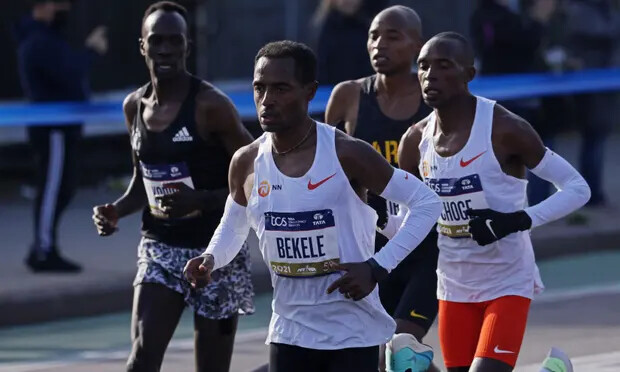
During his storied career, Bekele has won an extraordinary three Olympic gold medals, 17 world titles over cross-country, track and road, and held the world 5,000m and 10,000m records for 15 and 16 years respectively – until the arrival of “super spikes” allowed Ugandan Joshua Cheptegei to finally break them in 2020. However even now the legendary Ethiopian remains the second quickest athlete ever over 5,000m, 10,000m and the marathon.
Asked about whether Kipchoge’s 2hr 1min 9sec run in Berlin made the Kenyan the greatest, Bekele replied: “From my side, I don’t want to put in myself [in the conversation]. But what I did in world championships, Olympics, cross countrys and the world records – for those competitions of course I am the best.
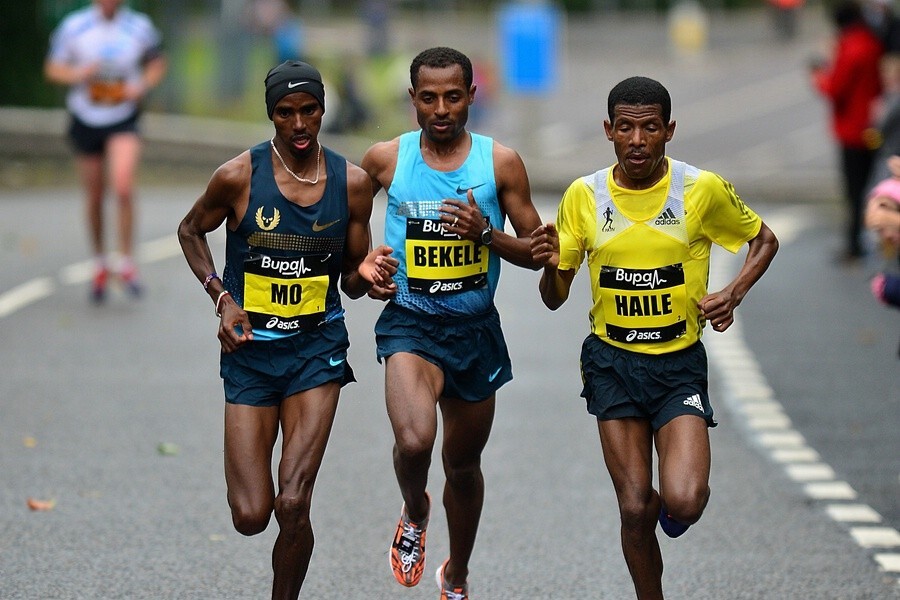
“With the marathon I couldn’t achieve what everybody hoped,” he added. “Somehow I failed with some marathon races. But, on the other hand, my marathon times also tell you something. I am second overall behind Eliud Kipchoge. And it was very close. It was only two seconds until last week.
“So this tells everyone: it doesn’t matter if I win a marathon 10 times or 20 times, how many athletes can run this time? Of course I’m not perfect. I’ve not really achieved all the spectators or my fans wanted from me. But, on the other hand, those results were not easy to achieve.”
Bekele has not produced many sparkling performances in recent years, but his marathon personal best of 2:01.41 came in Berlin in 2019 after a similar spell of mixed results.
And he appeared optimistic ahead of Sunday’s race, telling reporters: “My fitness is really good now and I am expecting to get a good result. Of course, I am here to win. You never know because this is not an easy race, but my wish and plan is to win the race.”
He also dismissed suggestions that it could be his last race, adding: “My mind tells me not yet. I follow the feeling in my mind. Someday maybe my mind will tell me this is enough, stop here, but now is not my time.”
Bekele offered his sympathies to Mo Farah, who was forced to pull out of the London Marathon this week due to a hip injury. “I faced many years of injuries and I know how it feels, especially at his age,” he said. “It’s not easy to come out from that, but if he is mentally and physically strong, especially mentally, I am sure he will do better in the future, for a couple of years.”
(10/01/2022) ⚡AMPby Sean Ingle
TCS London Marathon
The London Marathon was first run on March 29, 1981 and has been held in the spring of every year since 2010. It is sponsored by Virgin Money and was founded by the former Olympic champion and journalist Chris Brasher and Welsh athlete John Disley. It is organized by Hugh Brasher (son of Chris) as Race Director and Nick Bitel...
more...Nina Kuscsik to Receive Abebe Bikila Award at 2022 TCS New York City Marathon
Nina Kuscsik, a trailblazer for women’s running, will receive the Abebe Bikila Award this year, an honor which is presented each year from New York Road Runners (NYRR) to an individual who has made an outstanding contribution to the sport of distance running. The award will be presented to Kuscsik at NYRR’s Night of Champions during TCS New York City Marathon race week.
“I am very proud. It was such a long time ago when I was advocating for more opportunities in women’s running; it just seemed like the right thing to do,” Kuscsik said. “I attended all the meetings of the AAU in person, and I learned how to file appropriate legislation.
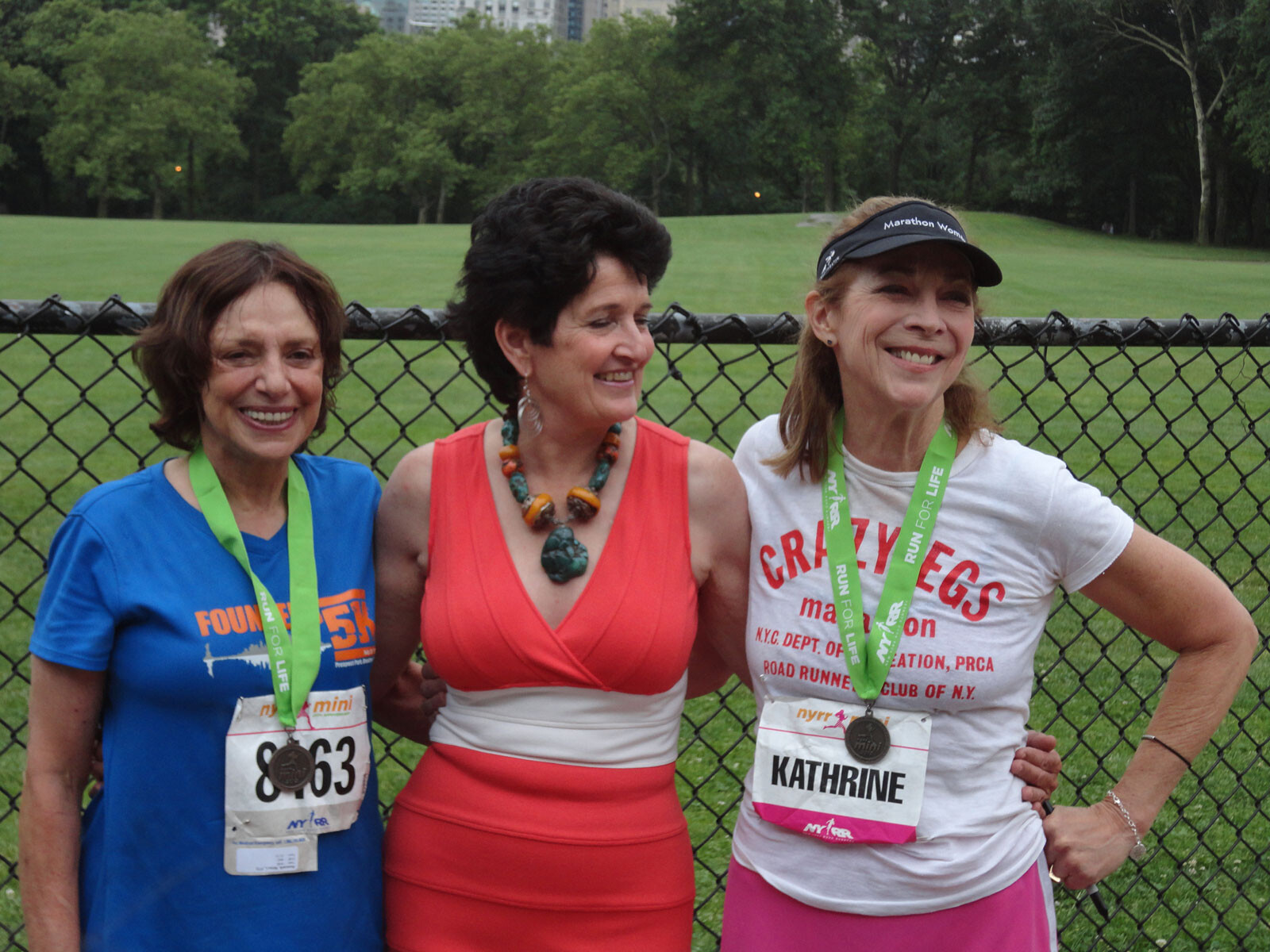
I also had other men and women helping me so that we could get the rules changed, so myself and other women runners would have the right, and be eligible, to run marathons. It is so wonderful to see the results of it all today.”
Kuscsik transformed the sport of running by breaking through the “boys’ club” barrier to change the rules so they included women. After she ran the 1969 Boston Marathon — unofficially, as women weren’t allowed to enter — she presented a proposal to the Amateur Athletic Union, asking for an end to the ban on women entering races. The committee agreed to raise the maximum distance of AAU-sanctioned events for women from five to 10 miles and added that “certain women” could run marathons. The rules still required a separate women’s start.
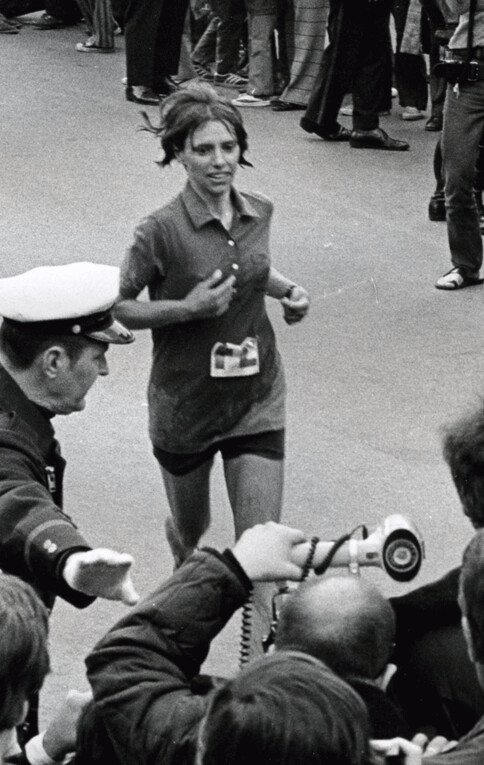
On June 3, 1972, together with NYRR president Fred Lebow and Kathrine Switzer, Kuscsik helped launch the Crazylegs Mini Marathon, the world’s original women-only road race now known as the Mastercard New York Mini 10K.
Four months later, on October 1, 1972 at the New York City Marathon, Kuscsik and five other women huddled together just before the Central Park start. When the gun went off, they sat down, protesting the women’s separate-start status. After the press got their story, the women got up and started with the men’s start. Kuscsik won the race, becoming the first woman to triumph in New York and Boston in the same year. Those six women — Lynn Blackstone, Jane Muhrcke, Liz Franceschini, Pat Barrett, Cathy Miller, and Kuscsik — are known around the world today as the “Six Who Sat.” This Saturday will mark exactly 50 years since their actions changed the trajectory of women’s running for the generations that followed.
Kuscik would return to New York in 1973 to win the marathon once again, and in 1977, she completed the annual NYRR 50-Mile in Central Park in 6:35:53, an American record. She was then among the group that successfully lobbied for a women’s marathon to be added to the 1984 Olympics.
(10/01/2022) ⚡AMPby Running USA
TCS New York City Marathon
The first New York City Marathon, organized in 1970 by Fred Lebow and Vince Chiappetta, was held entirely in Central Park. Of 127 entrants, only 55 men finished; the sole female entrant dropped out due to illness. Winners were given inexpensive wristwatches and recycled baseball and bowling trophies. The entry fee was $1 and the total event budget...
more...Defending champion Jepkosgei promises fast time in London
Defending champion Joyciline Jepkosgei and World marathon silver medallist Judith Korir have promised to run fast times at this year's London marathon on Sunday in the British capital.
Jepkosgei, 28, said she has trained well for the last four months in Iten and will be looking to lower her best time.
“I am much better now than in April, so expect a fast race if the pacesetters will do their work,” said Jepkosgei, who will be eyeing her third Majors victory, having followed up her maiden New York City Marathon win in 2019 with London Marathon glory last year.
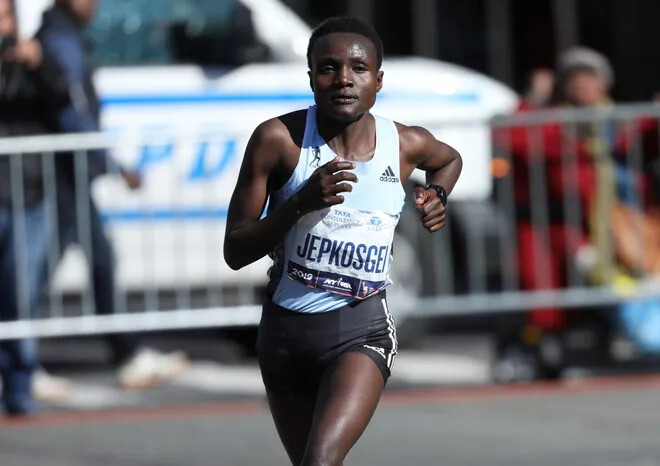
“We have four athletes who have run under two hours and 18 minutes. Note that I am the second fastest in the field, “said Jepkosgei before joining Korir in their evening session at De Vere Beaumont, Windsor, on the outskirts of London on Wednesday.
“You see every athlete always wants to do better than the previous race. I am not different...I want to lower my personal best on Sunday,” declared Jepkosgei.
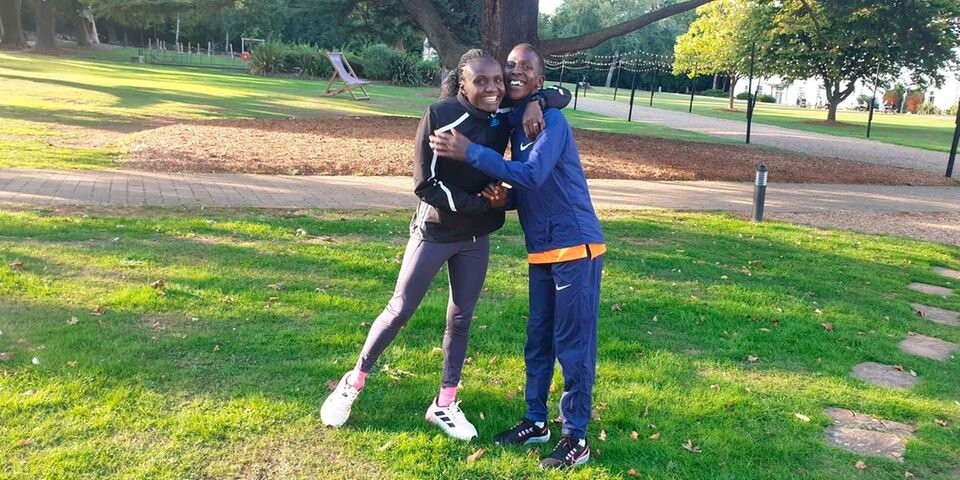
Jepkosgei joined the league of the world’s greatest marathoners to have won London, one of the most prestigious race in the World Marathon Majors, triumphing in a personal best time of two hours, 17 minutes and 43 seconds.
Jepkosgei hopes that the current favourable weather will hold for a good race on Sunday.
“We ran under rainy and chilly conditions last year but this weather is promising. I love it,” said Jepkosgei, who hopes to represent Kenya at the World Athletics Championships next year and 2024 Paris Olympic Games.
“You see if you have invested well in a race, you tend to fear nothing and that is why I want to show up strongly on Sunday thought I know we have good athletes with incredible times in the pack,” said Jepkosgei.
“Everything has fallen in place the way I want this year and all I pray for God to deliver a good race for me,” said Jepkosogei, who has been training under coach Nicholas Koech since June.
It will be Jepkosgei’s second race this year having finished seventh at Boston Marathon in 2:24:43 on April 18.
Despite not having focused on finishing the race just like last year, the 26-year-old Korir, who has been told to go full length, hope to return good times.
“I knew I would pace-set, having come from the World Athletics Championships in July, but I was told to cover the full course two weeks ago,” said Korir, who will be competing in her eighth marathon.
“I will give it a shot and who knows...I could end up the winner.”
Korir’s best Championship results was when she claimed silver for Kenya in a personal best of 2:18:20 at the World Athletics Championships in Oregon, United States in July this year
However, Korir, who trains with women’s marathon World Record holder Brigid Kosgei is Kapsait, Elgeyo Marakwet, won Paris Marathon this year and Abu Dhabi Maraton in 2021.
She also won the 2019 Belgrade and Venice Marathon races.
Kenyan women have won the last six editions of London Marathon.
(10/01/2022) ⚡AMPby Ayumba Ayodi
TCS London Marathon
The London Marathon was first run on March 29, 1981 and has been held in the spring of every year since 2010. It is sponsored by Virgin Money and was founded by the former Olympic champion and journalist Chris Brasher and Welsh athlete John Disley. It is organized by Hugh Brasher (son of Chris) as Race Director and Nick Bitel...
more...Why You Should (Sometimes) Ignore Your Training Plan
Runners make bigger improvements following a flexible workout schedule rather than sticking with a predetermined one
The techno-utopian vision of the future of endurance training is that on any given day, your workout will be perfectly calibrated for how you’re feeling, how your body responds to different stimuli, and what your current goals are. Wearable tech will track your workout and monitor your recovery around the clock, and the algorithm will know just how far to push you.
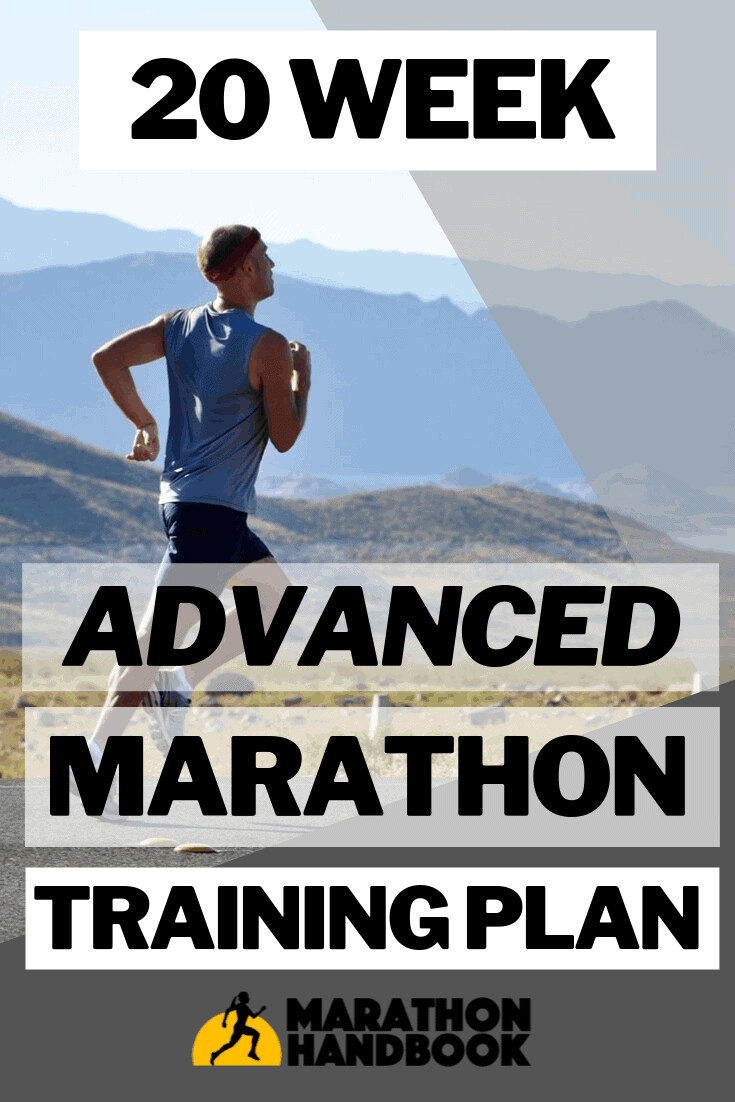
A new study in Medicine & Science in Sports & Exercise, from a research team led by Olli-Pekka Nuuttila of the University of Jyväskylä in Finland and funded in part by the sports tech company Polar, seemingly takes a big step toward this goal. Runners, they find, do indeed get faster when they feed heart rate and other data into an algorithm that tells them when to push their training harder and when to ease up. At least, they get faster compared to following an inflexible cookie-cutter training plan. The results are intriguing, but they also leave you wondering if there might be a middle way.
The idea of tech-guided personalized training plans has been gaining steam for at least a decade, most notably with the rise of heart-rate variability (HRV) as a marker of recovery. I wrote about research into HRV-guided training back in 2018, and you can dig into further details about the concept in that article. Briefly, HRV reflects how regular your heart beat is, which depends on the balance between the sympathetic (“fight or flight”) and parasympathetic (“rest and digest”) branches of your nervous system. All else being equal, a high HRV suggests you’re well recovered and likely to respond well to a hard training day.
One of my critiques of HRV-guided training—an obvious one—is that training (and life) are complicated, so using a single metric to guide your training is unlikely to capture all the relevant factors that should guide your training decisions. Nuuttila’s new study addresses that critique by using three inputs to make training decisions:
For half the group, training was adjusted twice a week, on Mondays and Thursdays. Runners who had no red flags increased their training load (either distance or intensity, depending on the training block) for the following three or four days; those who had one red flag kept it the same; and those who had two or three reduced their load. The other half received a preplanned training program.
The study involved 30 recreational runners who typically trained a little more than four times a week. They started with three weeks of maintaining their usual training, then six weeks in which they focused on increasing their training distance, followed by another six weeks in which they increased their intensity by incorporating one to three interval workouts (6 x 3:00 with 2:00 recovery) per week. They completed a variety of performance tests after each training block, including a 10K time trial.
There are lots of moving parts in a study like this, but if we scan down to the bottom line, we see this: the pre-planned group improved their 10K times by 2.9 percent, on average, which is about what you’d expect. The algorithm group improved their average times by 6.2 percent, which is very impressive. Here’s what the individual improvements look like for the predetermined (PD) and individualized (IND) groups, with negative numbers representing a greater percentage improvement:
Interestingly, the total training loads between the two groups were very similar, so it’s not simply that one group trained way harder than the other in aggregate. Instead, the differences were individual. When the algorithm adjusted training, it prescribed no change 55 percent of the time, more training 35 percent of the time, and less training 10 percent of the time.
Overall, I think these results are a neat proof-of-principle, and I think it’s great that they’re rigorously testing these algorithms to make sure that they really do work better than the alternatives. But I’d like to see them clear a tougher hurdle. Instead of “predetermined” training plans, how about “predetermined plus common sense” training plans, where you back off your training if you’re feeling tired and ramp it up if you feel good? Or if you want to formalize it, take the subjective measures of fatigue and soreness, perhaps along with some measure of perceived effort versus expected effort during the previous workout, and use that to adjust training load. There’s plenty of evidence, after all, that our subjective perceptions can be surprisingly sensitive in detecting recovery status.
It may well be that having some sort of external, objective data is still useful—both for beginners, who haven’t yet learned what hard training is supposed to feel like, and for experts, who may be tempted to lie to themselves in order to get the green light to hammer. But let’s be clear about what we’re testing. The nuances of your heart rate and its variability may be useful. But the deeper insight from Nuuttila’s study may simply be that even the best-laid training plans sometimes need to be tweaked.
(10/01/2022) ⚡AMPby Outside
Two easy ways for beginners to add speed
Speedwork can sound intimidating, and new runners often avoid it until they’ve been logging regular miles for years. Even if you’re fairly new to running, speedwork is an essential addition to your weekly mileage–and it doesn’t mean you’ll be sprinting around a track until exhaustion. You can do your speedwork on the road, trails, track, or even the treadmill.
If you’ve been running for about six months and are injury-free, it’s safe to start incorporating short speed sessions into your training. Try these two simple workouts to get your legs used to moving quickly. As you get more comfortable, you can add repeats or lengthen intervals.
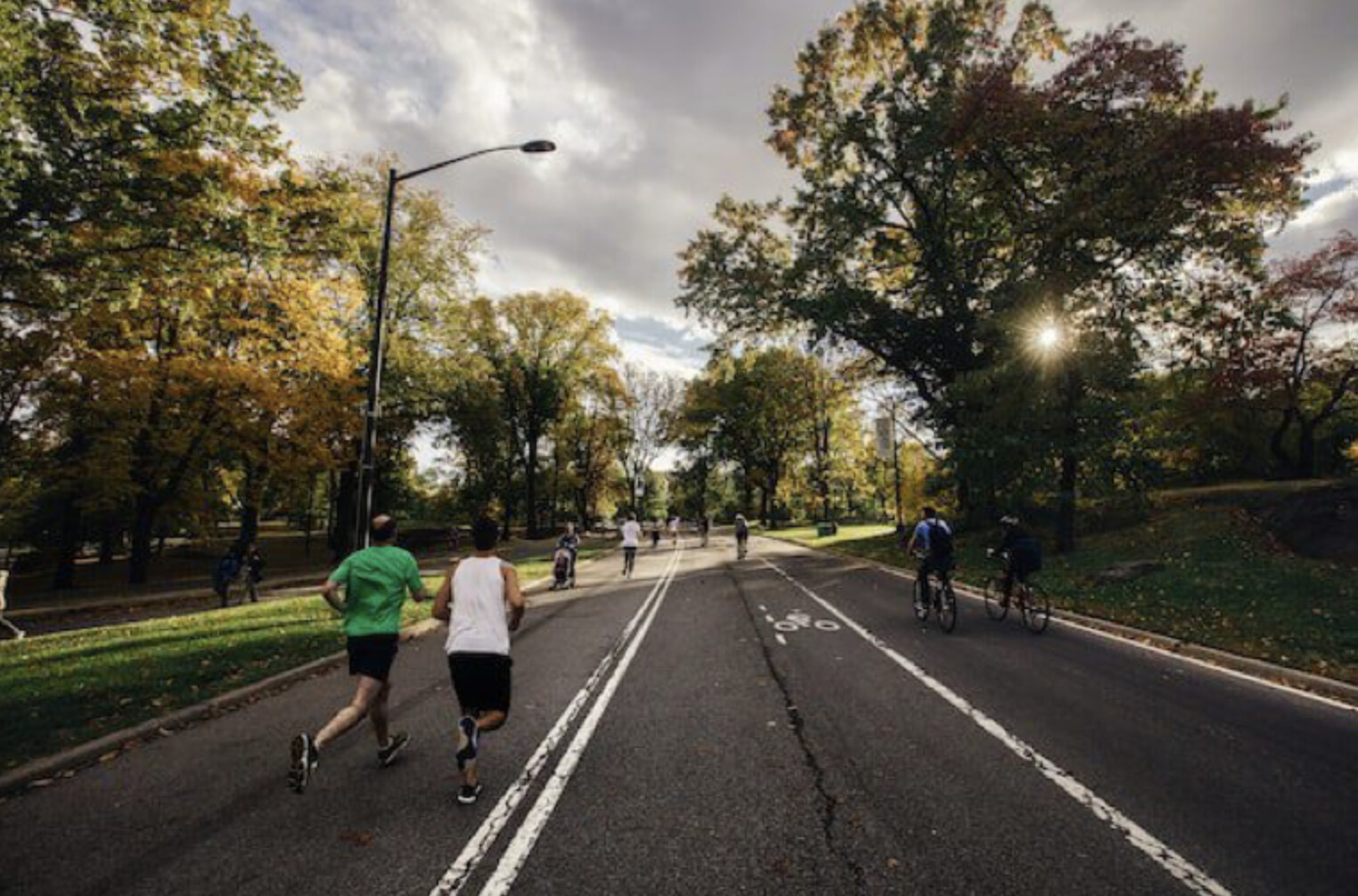
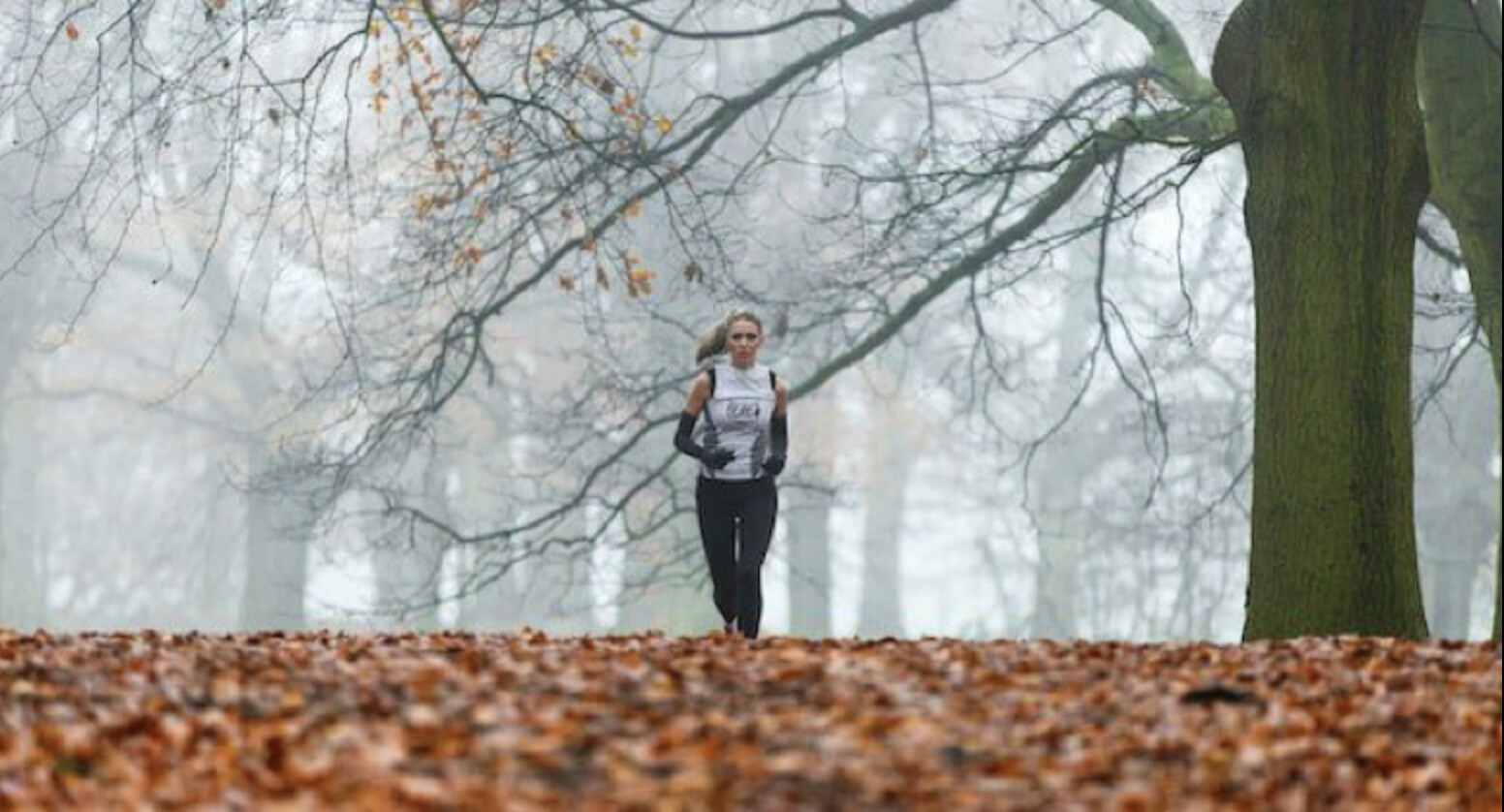
Strides
Strides are a great way to begin adding speed to your sessions. Tack them on to the end of any easy run. Strides are like the multi-purpose tool of speedwork–runners training for very long distances will add them to training runs to remind their legs what it feels like to go at top speed. If you’ve never tried strides before, don’t worry: it’s hard to go wrong.
Start your strides running by going easy, focusing on a short, quick stride, and then gradually increase your speed by lengthening your stride. Focus on staying relaxed and running smoothly. It should feel like a controlled faster pace, not a sprint.
The workout:
Easy run (approx 30 minutes)
Four to five strides of 15 to 30 seconds each, 45 seconds rest in between
Short intervals
If this workout looks too daunting, simply shorten your intervals so that they seem manageable–30 seconds fast with a one-minute recovery is just fine. If you need to walk to recover, go for it. Don’t worry about your pace throughout the intervals, simply go by effort.
The workout:
Warm up with 10 minutes easy running
Five to eight repeats of one minute hard followed by two minutes easy running or walking to recover
Cool down with five to 10 minutes easy running
Recovery is a key component of speedwork, whether you are a beginner or an experienced runner. In these beginner speed workouts, the recovery intervals are longer in duration than the hard intervals. As you build strength, you can cut down recovery time to make the workouts more challenging. Speed workouts are considered hard training days so you will need a very easy recovery running or rest day following one.
(10/01/2022) ⚡AMPby Running Magazine
The man behind Kipchoge's world record
On Sunday morning at the Berlin Marathon, Eliud Kipchoge redefined history as he broke his marathon world record by 30 seconds. His run will go down as one of the most remarkable performances in our sport but what cannot be ignored is the behind-the-scenes work by his drinks guy, Claus-Henning Schulke.
As small as the role of simply passing the hydration bottle to the fastest marathoner in history may seem, Schulke, might be the best in the world at doing it. Check out the effort from Schulke during yesterday’s marathon:
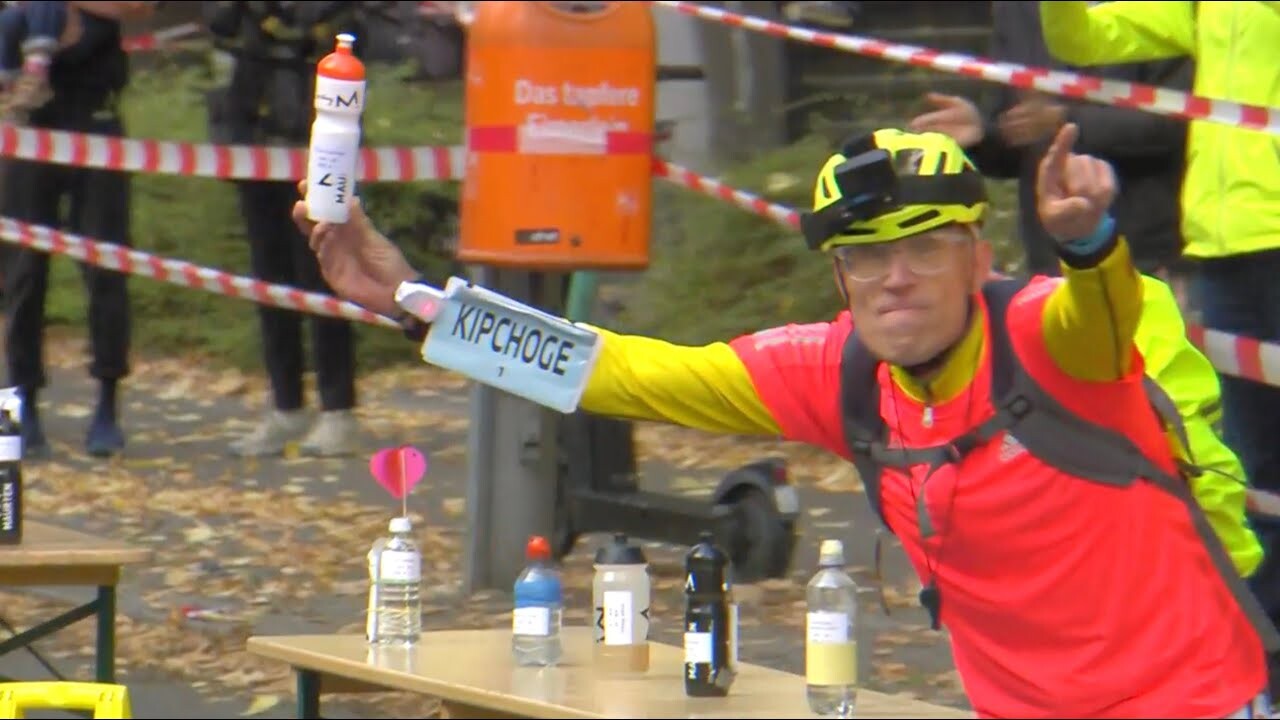
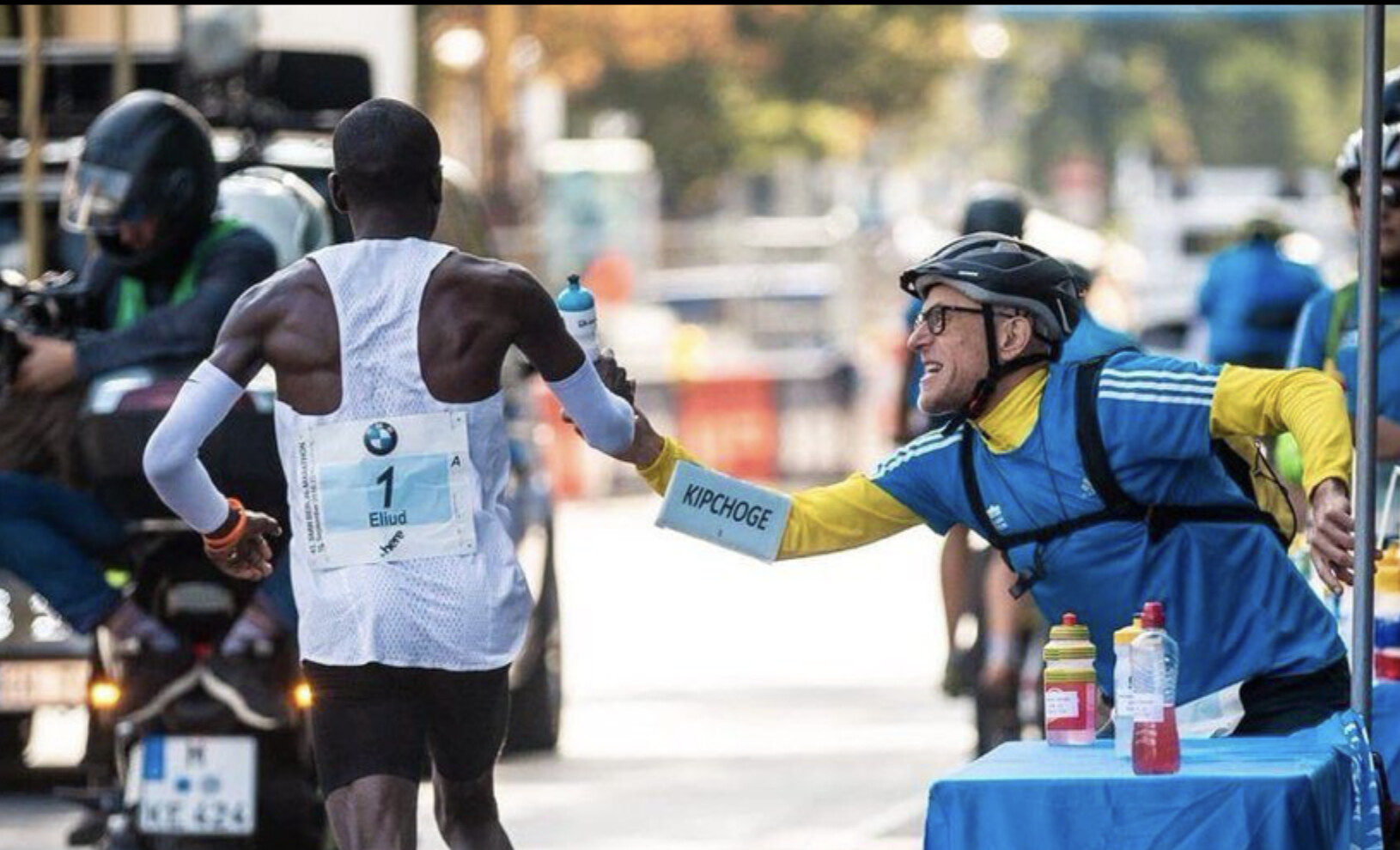
Schulke, a 56-year-old triathlete from Berlin, first worked with Kipchoge in 2018, when he set the world record of 2:01:39. Schulke has been volunteering at the Berlin Marathon since 1998 and is the senior member of the 30-person crew in charge of getting the elite athletes their drinks during the race.
When Schulke completed his handover to Kipchoge at the first hydration station, Schulke did his fist-pumping celebration, as he famously did in 2018.
Across the 13 drink stations on the course, Schulke rode his bike to each station, waited for Kipchoge, handed him the bottle, then hopped back on his bike to beat the marathoner to the next station.
Another individual who deserves a shoutout is the Berlin Marathon volunteer who followed Kipchoge and Schulke around, shooting video of their exchanges. Hard work does not go unnoticed.
Kipchoge might have the world record, but Schulke has every right to bask in the glory of it as his right-hand man.
(10/01/2022) ⚡AMPby Running Magazine
Three runners who could threaten the two-hour marathon barrier
On Sunday, Eliud Kipchoge made history again, winning the 2022 Berlin Marathon and breaking his previous world record from 2018 in 2:01:09. Although his time was spectacular, Kipchoge went through the halfway mark in 59:51, the fastest-ever half-marathon split in a marathon. His half split shows he has strong potential to achieve a sub-two-hour marathon. But who else might have the potential to do it?
At INEOS-1:59 in 2019, Kipchoge showed the world that breaking two was possible with the help of 20 or more pacers, fluids handed to him in motion, pace lights and ideal weather conditions.
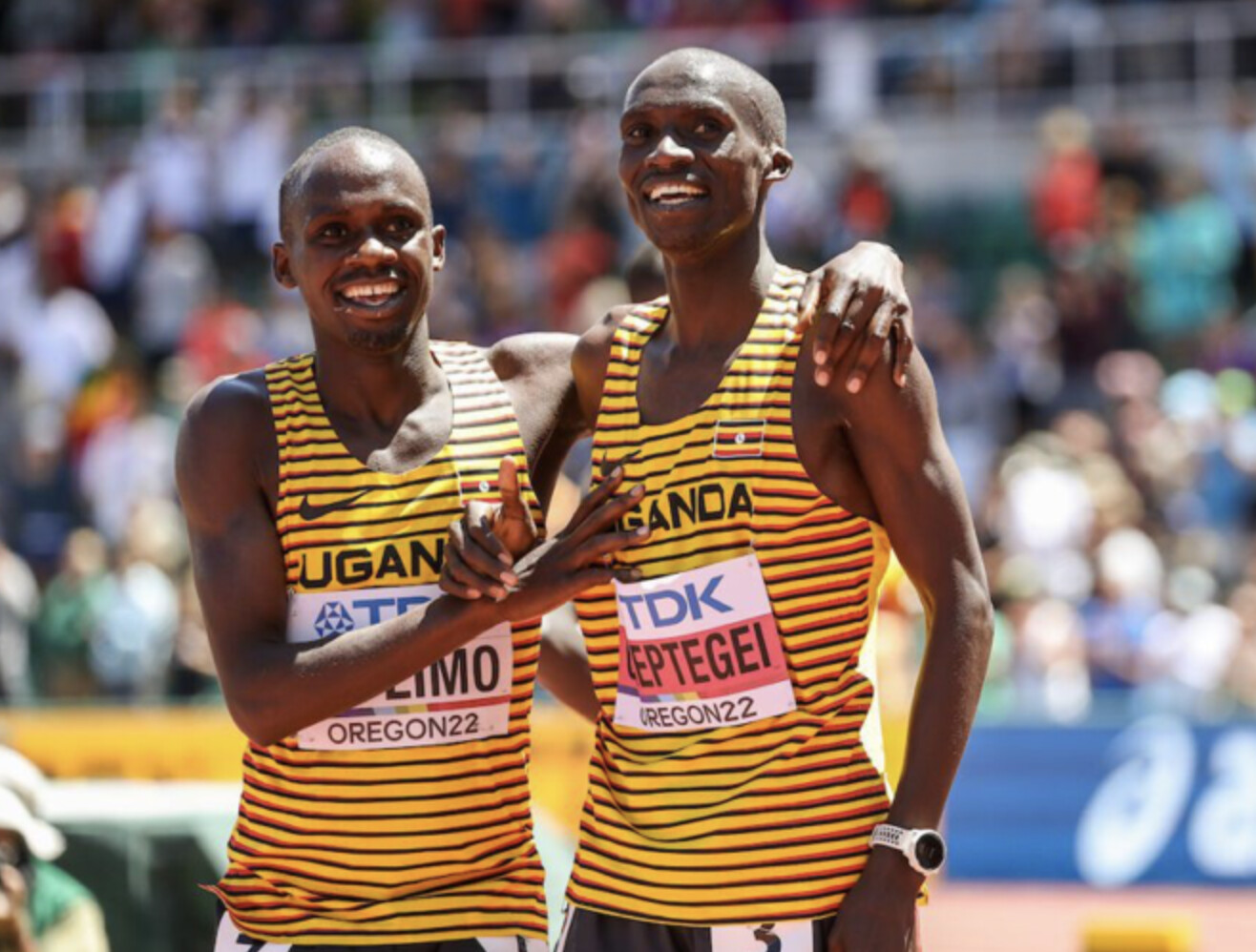
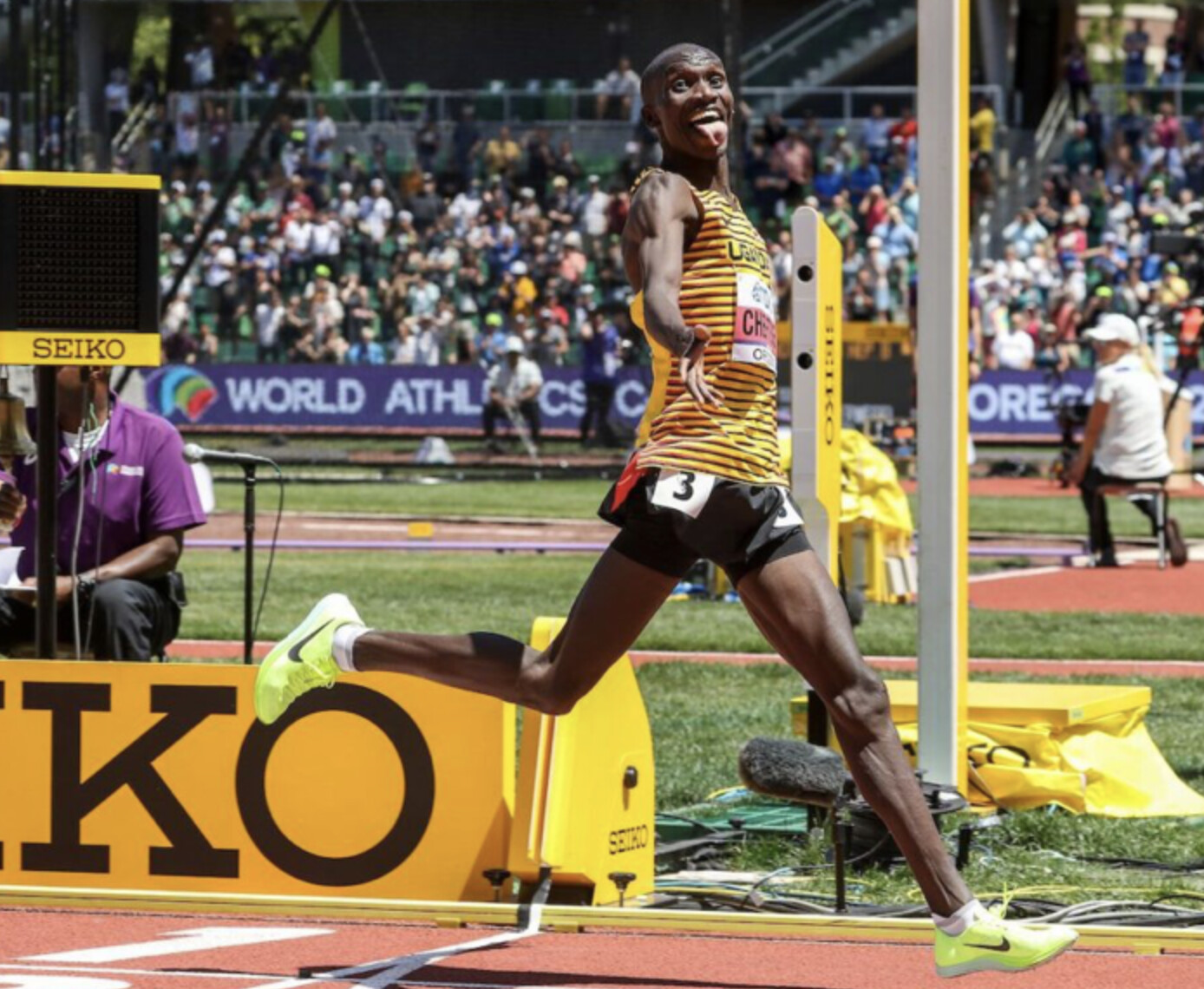
The previous eight marathon world records have been run at the Berlin Marathon. The course attracts many of the world’s top marathoners due to its fast, flat and open course. If the two-hour barrier is broken, it’ll likely happen in Berlin.
In my opinion, there are three runners who can threaten this barrier based on their previous performances.
1) Jacob Kiplimo (Uganda)
The half-marathon world record holder has not immersed himself in the marathon scene yet, but is bound to run something special when he does. The 21-year-old Ugandan has already won a medal at every level–double Commonwealth gold in the 5,000m and 10,000m, Olympic bronze in the 10,000m and world championship gold in the half-marathon.
Although it’s unlikely Kiplimo will rush onto the startline of a marathon anytime soon, he’s shown his incredible talent from 5,000m to the half. He has the eighth-fastest time over 10,000m (26:33.93) and the fastest time ever over 21.1 km (57:31–two minutes and 44 seconds per kilometre pace, which is predictive of a 1:55:20 marathon, or thereabouts).
When he is ready to make the jump, he’ll likely run around 2:02 to 2:04 for his debut and then aim for the two-hour mark in his second.
2) Joshua Cheptegei (Uganda)
The men’s 5,000m and 10,000m world record holder is currently the fastest distance runner in the world. He’s been almost unbeatable over the 10,000m, and has the long stride and the speed to threaten the two-hour mark. Cheptegei has only run one half-marathon (59:21) but holds the world record of 41:05 over 15 km (which translates to a 57-minute half-marathon).
At 26, Cheptegei has some unfinished business in the 10,000m, taking silver to Selemon Barega of Ethiopia at the Tokyo Olympics. We won’t see him move up distances until after the 2024 Olympic Games.
3) Eliud Kipchoge (Kenya)
If anyone knows what it takes to break the sub-two barrier, it’s Kipchoge. He did it unofficially in Austria and was on pace to do it in Berlin on Sunday, up until the 24 km mark. Although he’s only getting older, with his performance in 2022, he has shown the world that he is still in the prime of his career.
Kipchoge has spoken about wanting to win all six Abbott World Marathon Majors (he is missing only Boston and New York) and becoming the first triple Olympic champion in the marathon. This 2:01:09 from Kipchoge won’t be his last shot at sub-two; he’ll likely go back to his camp in Kenya, tweak a few things, and return to Berlin in 2023 for another shot at sub-two before taking on the Paris Olympics in 2024.
(10/01/2022) ⚡AMPby Running Magazine
Israeli man runs Berlin Marathon with pineapple on his head
There were several outstanding performances at the 2022 Berlin Marathon, but the oddest of them all has to be from Moshe Lederfien of Israel, who ran the entire Berlin Marathon while balancing a pineapple on his head.A clip of Lederfien went viral on TikTok after he was seen at multiple checkpoints, running along with an actual pineapple on his head. You have to appreciate his talent, as there is no visible tape or device that held the fruit in place.
Although Lederfien finished several hours behind world record holder Eliud Kipchoge in 5:04:25, he runs with a pineapple on his head to bring people together. Berlin marked his 12th marathon running with a pineapple.Lederfein, 68, served for Israel during the Yom Kippur War in 1973 and began running marathons at age 53. Lederfein never thought he could run, as he suffered from diabetes and high blood pressure.
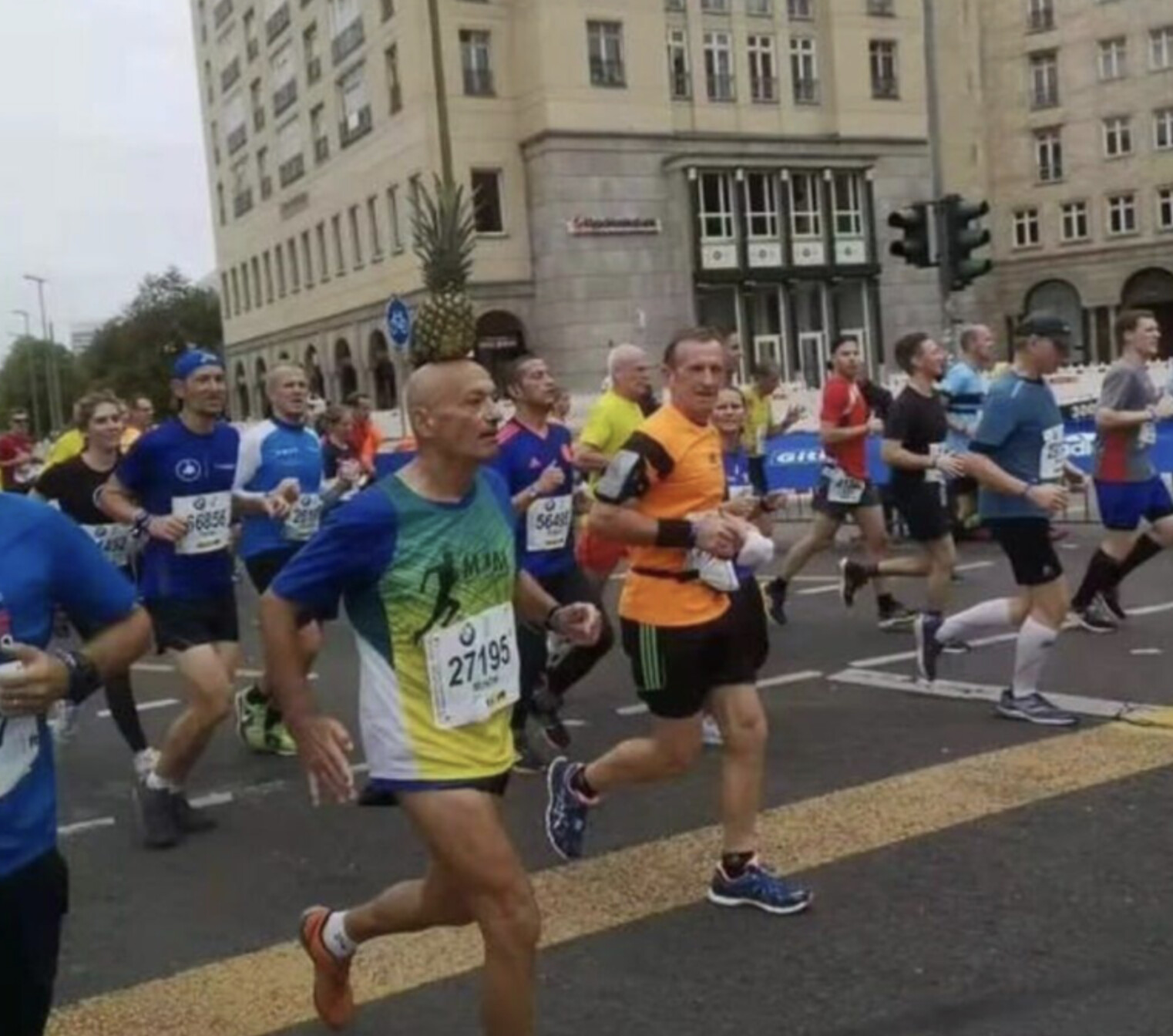
He is also quite the celebrity in Israel and has a short documentary about him as the pineapple marathoner. He even goes by pineapple marathon runner on his social media pages.
(10/01/2022) ⚡AMPby Running Magazine
How to condition your legs to run further
Often, runners concentrate on racking up the miles at the expense of all other training. At some point, your body will scream “no more!” and protest by breaking down with a knee, calf, or ankle-based injury, side-lining you for weeks or even months. But with the right steps you can build up your legs’ strength and carry yourself further on your runs.
All of which would certainly come in handy ahead of the Wings for Life App Run on Sunday, May 7, 2023, which will see runners across the world raising vital funds for the Wings for Life Foundation, as they try and outrun a virtual Catcher Car via an app on their phone (sign up here!). So if you truly want to bulletproof your lower limbs for a test of pure distance, this is the one to sign up for.
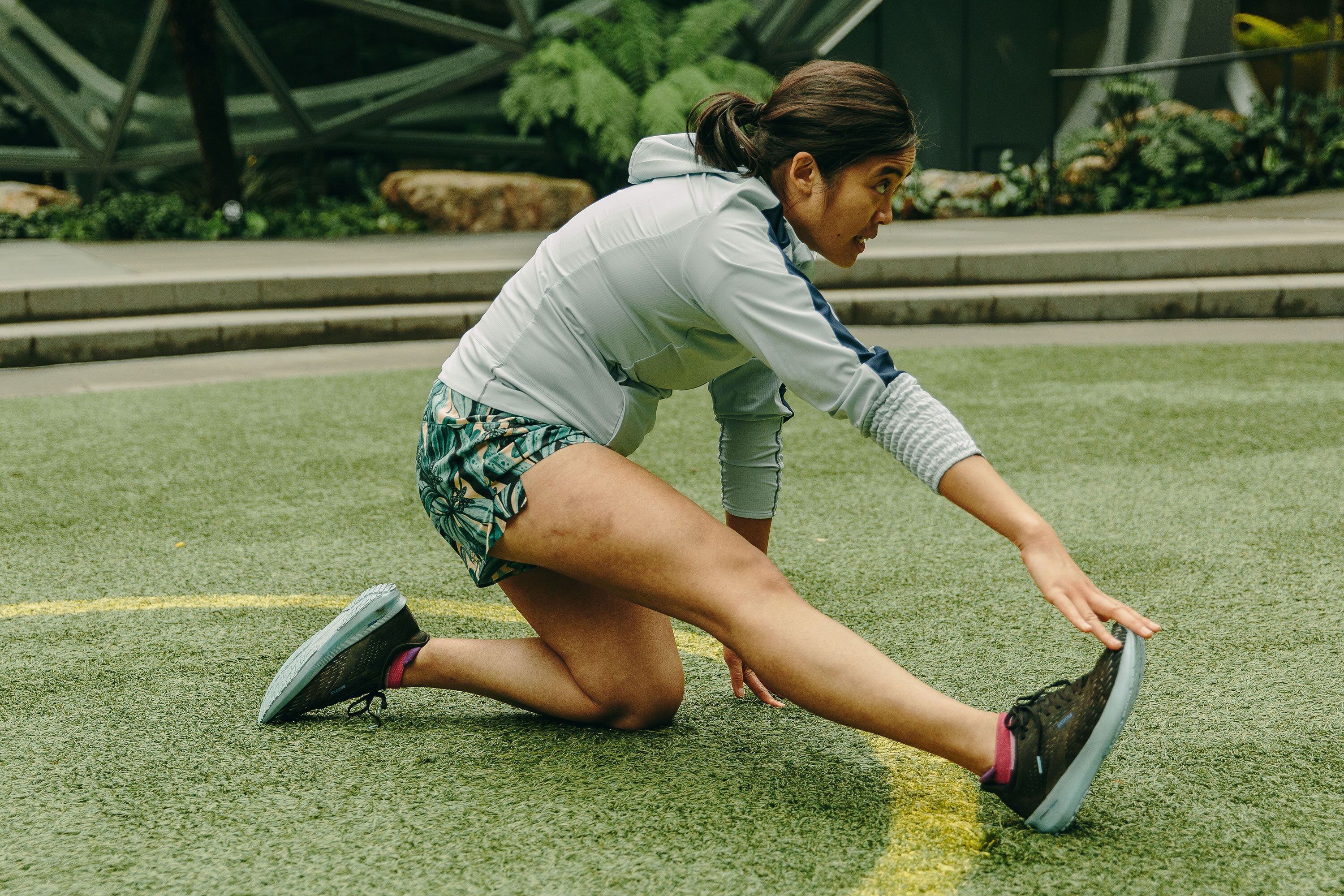
Without further ado, here are the pointers you need...
1. Always stretch.
A simple one to start, but one often neglected by runners. Stretching your calves and quads is key to building leg strength for running. “The idea is to improve movement of the ankle and knee joints before running,” says Pat Gillham, specialist musculoskeletal physiotherapist at Pure Sports Medicine. “This will help prevent over-loading of the joints by the repetitive nature of running.” Gillham also advises doing stretches before you run will give increased range of movements to the joints.

Calves can be stretched off a step and quads by holding your heel to your bum while standing or kneeling. Stretches should be held for 60 seconds at a time, and Gillham advises doing stretches before you run, “but not to the point of complete muscle fatigue otherwise your muscles won't be able to cope with running,” he adds.
2. Use a foam roller
Many runners see the foam roller as an instrument of torture, designed to reduce grown adults to tears. But, says Gillham, using a foam roller is key for helping your legs run further. “A foam roller can be the perfect way to give yourself soft-tissue release instead of, or in addition to, stretching.” And if you are going to target one area? Go for the outer hip. A Pulseroll vibrating roller is a good place to start.
3. Choose the right shoes and socks
Another simple tip, but one that can easily be overlooked when you enter a running shop and your mind becomes overwhelmed at the sheer size of the selection on offer. Most reputable running shops now have treadmills in store, where staff can watch you run, check your gait and suggest appropriate shoes. And Brooks and Saucony even have their own proprietary analysis systems. Also, consider compression socks, too. “They can reduce irritation to the fascia in your calves by reducing vibrations that come from the landing,” says Gillham.
4. Increase your leg-strength work
Gillham stresses the importance of building your legs’ strength through regular gym work. "Single-leg deadlifts/single-leg bridges/high step-ups/single-leg heel raises [seated and standing]/side planks – all these exercises are great for adding to your workout to increase your legs’ power," he says. “High reps are ideal, until fatigue with or without weight. This type of programme should be done ideally three to four times per week for a duration of six to eight weeks to see any benefit.”
Below are two exercises you can easily incorporate into your weekly strength and conditioning programme, or just do at home when you have five minutes...
5. Romanian deadlifts
“Your average Joe tends to ignore muscles they can't see,” says Richard Tidmarsh, strength and conditioning coach and founder of Reach Fitness. “Your hamstrings are key for running performance and they are hiding at the back of your legs and so are often ignored. Romanian deadlifts will strengthen your posterior chain, making you a more powerful and effective athlete.”
6. Monster walks
“Most people's glutes retired themselves from active duty years ago,” says Tidmarsh. “This is the modern-day curse of a desk job. But to be a good runner and to avoid injury, you need your glutes to fire up. The elastic bands you see in a gym that nobody ever uses? They’re your friend. Every training session, strap a band around your thighs, settle into a half squat and then walk side to side with little steps. It's called a monster walk for a reason; you should feel your glutes on fire. This will prime them ready to work when you are running.”
7. Get plenty of rest
And finally, what everyone wants to hear. “Put your feet up,” says Tidmarsh. “Runners often become obsessed with mileage. The more you do the better, right? Wrong. Running puts a huge amount of stress on your body’s major joints, particularly if you are out pounding the streets. So learn to take a rest, and focus on the quality of your training rather than the quantity. Space out your training runs throughout the week, have weekly sports massages and try to use running tracks or trails rather than roads, as the surface is more forgiving.”
(09/30/2022) ⚡AMPby Howard Calvert
2019 Doha World Athletics Championships marathon bronze medalist, Amos Kipruto, will be seeking his first major title
The 2019 Doha World Athletics Championships marathon bronze medalist, Amos Kipruto, will be seeking his first major title when he lines up for the London Marathon race on Sunday.
He has been on the podium at major marathons twice, but wants to bag top honors this time round.
Nation Sport tracked Kipruto at Nandi Hills in Nandi County where he was doing a long run of 36 kilometers.
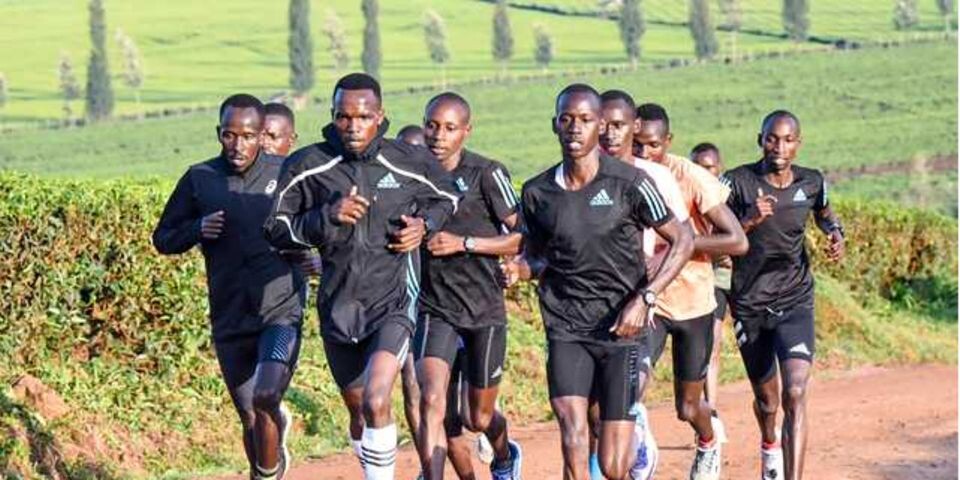
Kipruto together with his training mates crisscrossed through tea plantations.
The London Marathon will be his second major marathon race this year after finishing second in Tokyo Marathon in March.
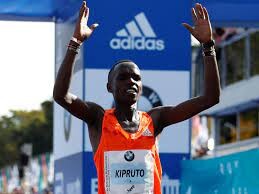
Freshly minted world record holder Eliud Kipchoge, who clocked 2:01:09 at Berlin Marathon on Sunday, beat Kipruto in Tokyo.
“From Tokyo, I relaxed a bit. I intensified my training for London Marathon in the middle of Ma, and so everything has been going well. I have a good group behind me and my coach is also helping so much,” Kipruto said.
“Marathon is becoming tricky because competition is high. You need to prepare carefully so that you don’t burnout,” he explained.
Having competed in Tokyo Marathon twice and Berlin Marathon once, Kipruto is a man in a mission.
“It is a great honour for me to be given an opportunity to compete in London, and I don’t take it for granted. The reward that I can give it to myself is to run well in London and set the bar high,” he said.
In the elite athletes’ start list, Kipruto is the fourth fastest with a time of 2:03:13 behind Ethiopians Kenenisa Bekele, Birhanu Legese and Mosinet Geremew.
Kipruto will be the only Kenyan in the elite race after his teammate Vincent Kipchumba withdrew due to injury.
(09/30/2022) ⚡AMPby Bernard Rotich
TCS London Marathon
The London Marathon was first run on March 29, 1981 and has been held in the spring of every year since 2010. It is sponsored by Virgin Money and was founded by the former Olympic champion and journalist Chris Brasher and Welsh athlete John Disley. It is organized by Hugh Brasher (son of Chris) as Race Director and Nick Bitel...
more...London Marathon preview: will we see two course records broken?
For the third straight year, the TCS London Marathon is set to take place on the first Sunday of October (Oct. 2). Many of the world’s top marathoners have made their way to London for a shot at USD $55,000, plus added incentives for time bonuses and course records.
If anyone were to break Eliud Kipchoge’s world record of 2:01:09 in Berlin last weekend, they would earn a huge payday of USD $400,000+, between prize money and bonuses.
A number of the top athletes have scratched from the marathon this week due to injury, including the British Olympic champion of years past, Mo Farah, who is out with a hip injury; 2022 world championship silver medallist Mosinet Gemerew; and the women’s world record holder, Brigid Kosgei, who suffered a hamstring injury in the lead-up to the race.
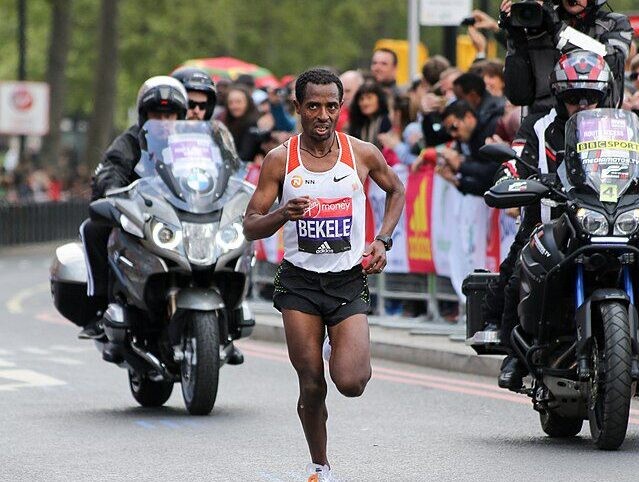
Both the men’s and women’s fields are still loaded with former Olympic medalists and Abbott World Marathon Major champions. Ethiopia’s Kenenisa Bekele headlines the men’s race, returning to London for the first time since 2018, after second-, third- and sixth-place finishes in his past three attempts. Bekele, 40, has not been in top form since he ran the second-fastest marathon of all time to win the 2019 Berlin Marathon (2:01:41).
His challenges will come from his Ethiopian compatriot and defending champion Sisay Lemma and two-time Tokyo Marathon winner Birhanu Legese, who holds a personal best of 2:02:48 and is the third-fastest man in history.
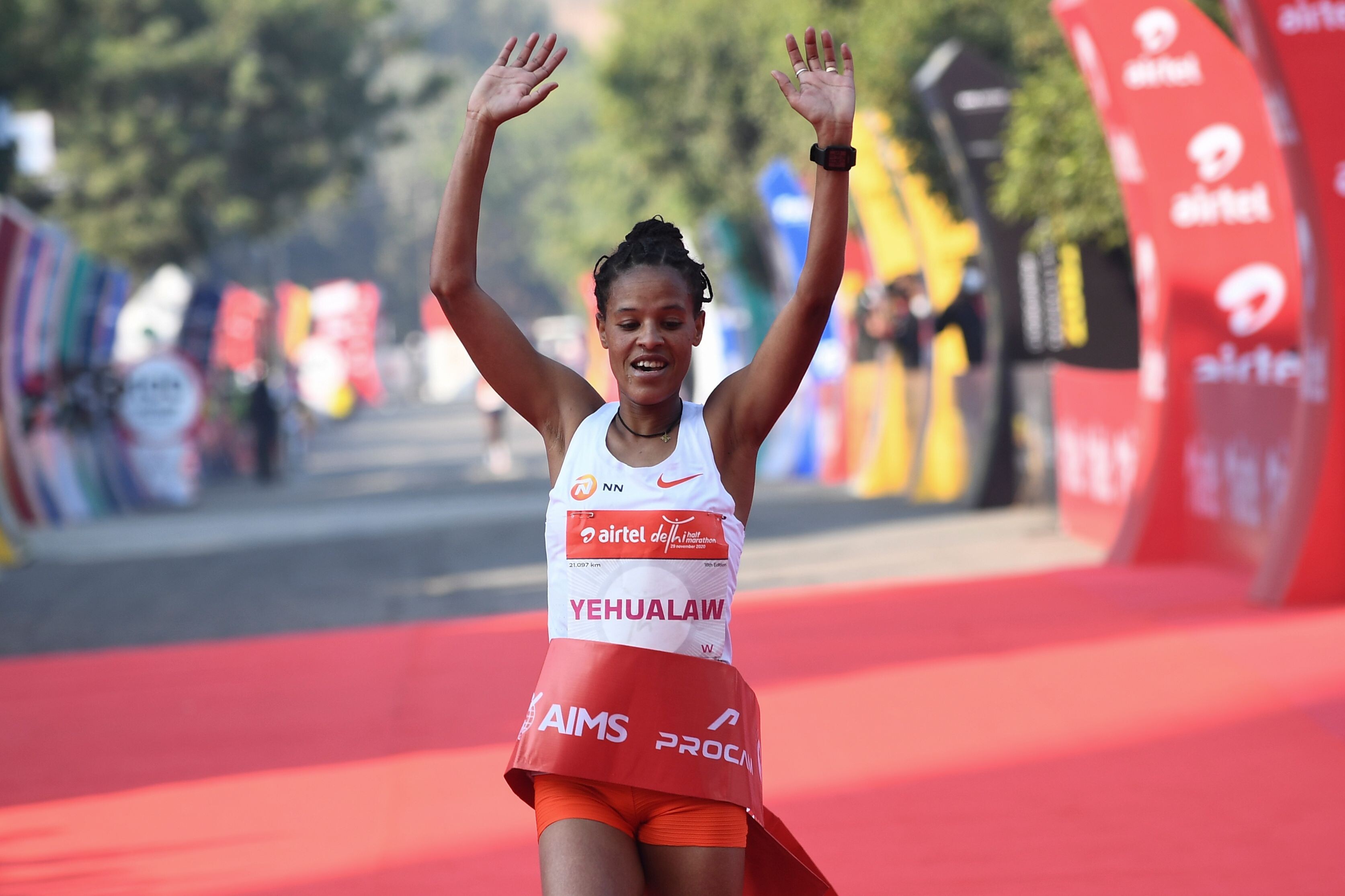
Another name not to ignore is Bashir Abdi of Belgium, who earlier this year became the first Belgian to win a medal at both the world championships and the Olympics in the marathon. Abdi won bronze in Tokyo and followed it up with another bronze in Eugene.
Amos Kipruto of Kenya has been quiet this season after his PB and second-place finish to Kipchoge at the Tokyo Marathon in March.
Women’s preview
With the two-time London Marathon champion and world record holder Kosgei out, her compatriot, Joyciline Jepkosgei, is the favourite. Jepkosgei brings experience and consistency to the field, having won this race last year in 2:17:43.
The dark horse is Ethiopia’s Yalemzerf Yehualaw, who previously held the half-marathon world record and ran the fastest debut marathon in women’s history, clocking 2:17:23 at Hamburg in April. She has gone undefeated in her last four road races and reached the podium in her last seven.
Ashete Bekere of Ethiopia also has the experience, winning Berlin in 2019 and finishing third in London last year. Earlier this year, she was second to Kosgei at the Tokyo Marathon, where she ran her personal best of 2:17:58.
Judith Jeptum Korir of Kenya, the 2022 world championship silver medallist and reigning Paris Marathon champion, was originally planning to pace the leaders on Sunday, but has been a late addition to the elite list. London will be Korir’s third marathon in six months, but she has reached the podium in her last two.
(09/30/2022) ⚡AMP
by Marley Dickinson
TCS London Marathon
The London Marathon was first run on March 29, 1981 and has been held in the spring of every year since 2010. It is sponsored by Virgin Money and was founded by the former Olympic champion and journalist Chris Brasher and Welsh athlete John Disley. It is organized by Hugh Brasher (son of Chris) as Race Director and Nick Bitel...
more...Eluid Kipchoge will lose $200,000 with the Abbott World Marathon Majors drastic reduction of prize money but this is not right says MBR publisher
Two days after Eliud Kipchoge clocked a 2:01:09 world record in Berlin, the Abbott World Marathon Majors announced on Tuesday a drastic reduction in the series’ prize money for runners.
Abbott, currently a $45 billion dollar global healthcare company based in Illinois, was the first title sponsor of the World Marathon Majors.

Let's Run posted this: "The change will take effect immediately, applying to the current series, which began at the Tokyo Marathon in March (starting this year, the WMM seasons are based on calendar years rather than the multi-year format of years past). As a result, Kipchoge, who has all but locked up the 2022 WWM Series title, will receive $200,000 less for his efforts.
When the World Marathon Majors — which consists of Tokyo, Boston, London, Berlin, Chicago, and New York — launched in 2006, one of its signature elements was the $500,000 prize awarded each year to the men’s and women’s series champions. In 2017, WMM altered its prize structure, reducing the grand prize to $250,000 (but adding $50,000 for second and $25,000 for third) while increasing prize money for wheelchair athletes and adding a charitable donation component of $280,000.
WMM announced that moving forward series champions will receive $50,000 each — just one-fifth of what was awarded last year and the same amount the wheelchair series champions receive. The prizes for second and third were also halved to $25,000 and $12,500, respectively, while WMM added prize money for fourth ($7,500) and fifth ($5,000). There was no mention of a charitable donation component (though the amateur runners at the World Marathon Major races raise significant money for charity each year)."
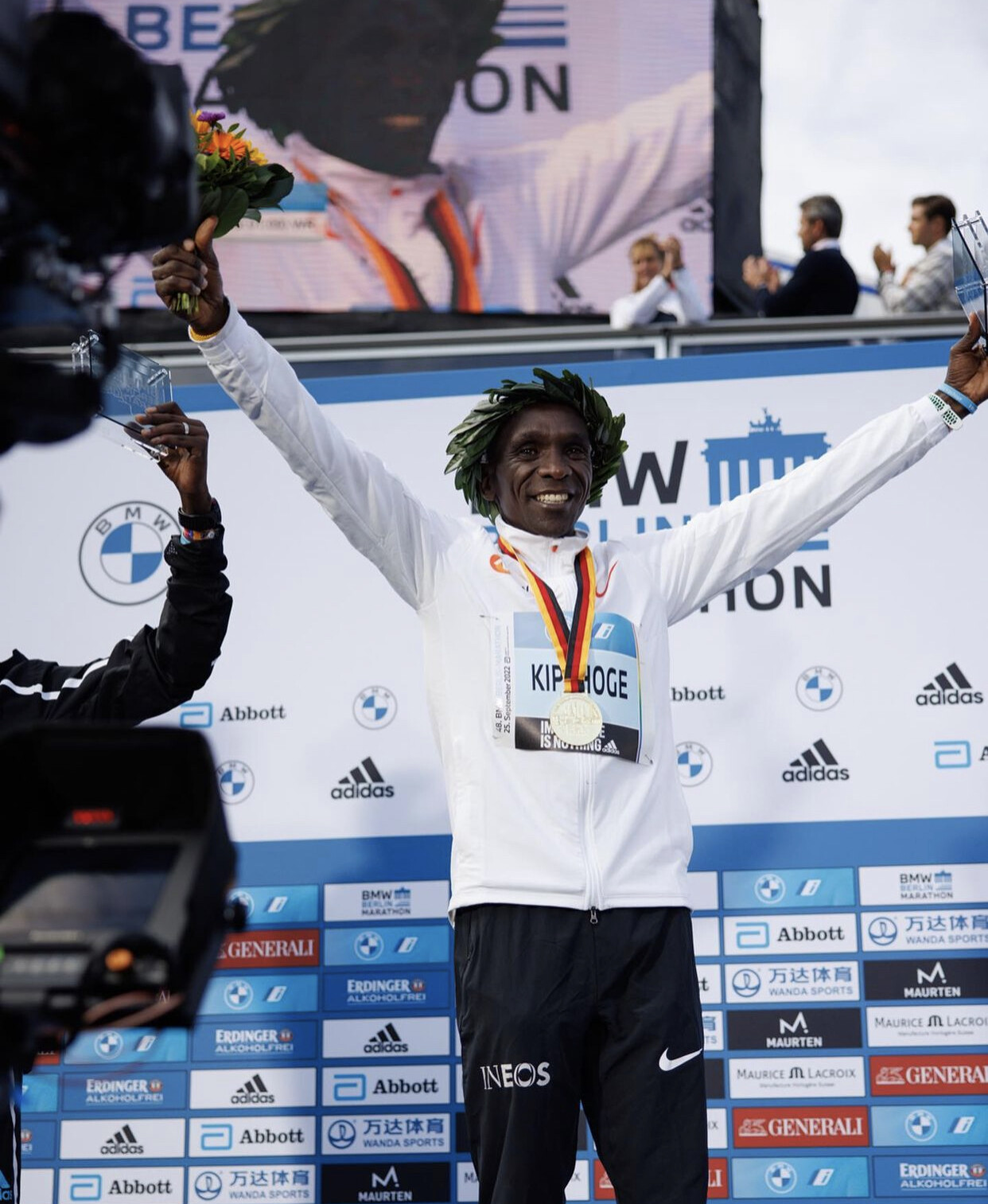
"This is not good news," says Bob Anderson, My Best Runs publisher, "but millions of dollars have been awarded over the years and maybe we should not have taken it for granted?"
"However, how can they make a change like this when it was already announced? A major change like this should not go into effect until the next season. Kipchoge should not be pentalized because Abbott decided after the fact to reduce marketing expenses or something in my opinion," says Bob.
"I do remember when my friend Derek Clayton set the world record clocking 2:08:32 May 30, 1969. He did not win any prize money. That record stood for 12 years. Or another friend Geoff Smith won the 1984 and 1985 Boston Marathon and won no prize money. Running was not a pro sport back in those days and no one was paid above the table until 1986 or so.
"Racing and for sure the Marathon offer sponsors a lot of exposure," Bob continues. "Hopefully new sponsors will come to the table. However, the economy right now is not good and expenses like this can be the first to be cut but lets think positive."
Abbott Laboratories is an American multinational medical devices and health care company with headquarters in Abbott Park, Illinois, United States. The company was founded by Chicago physician Wallace Calvin Abbott in 1888 to formulate known drugs; today, it sells medical devices, diagnostics, branded generic medicines and nutritional products.
"In 2021 Abbott (ABT) revenues were 43 billion and their income was 7 billion. However in the last six months their stock price has decreased 18.2%. Off but better than many companies," says Bob Anderson. "I wonder if this has anything to do with this decision to cut prize money but regardless Eluid Kipchoge should not lose $200,000 in the process."
Let us know your opinion.
(09/29/2022) ⚡AMPHad a tough training season? Here’s how to reset like an Olympian
Whether your season resulted in podium finishes or you faced some serious challenges, taking some time to reflect and reframe can make you a better athlete.If your season didn’t go as planned, you aren’t alone–even Olympians face similar setbacks and doubts.
Canadian Olympic middle distance runner Maddy Kelly had what for her felt like disappointing races at both the world championships and the Commonwealth games. Rather than fixate on those results, she reframed her experience, reminding herself that in 2022 she made three national teams, regained her national title and ran sub-2:00 (800m) twice.
Whether your season resulted in podium finishes or you faced some serious challenges, taking some time to reflect and reframe can make you a better athlete.
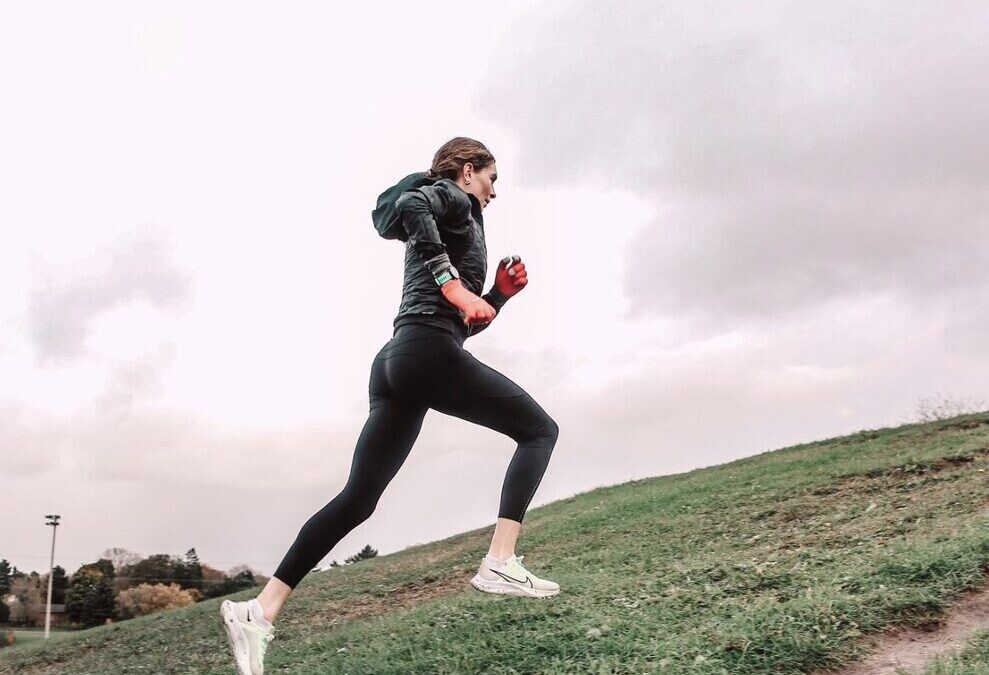
If your season didn’t go as planned, you aren’t alone–even Olympians face similar setbacks and doubts. Canadian Olympic middle distance runner Maddy Kelly had what for her felt like disappointing races at both the world championships and the Commonwealth games. Rather than fixate on those results, she reframed her experience, reminding herself that in 2022 she made three national teams, regained her national title and ran sub-2:00 (800m) twice.
Here’s how to find the positive takeaways from your running season, reframe setbacks, and move forward regardless of what your season outcome was.
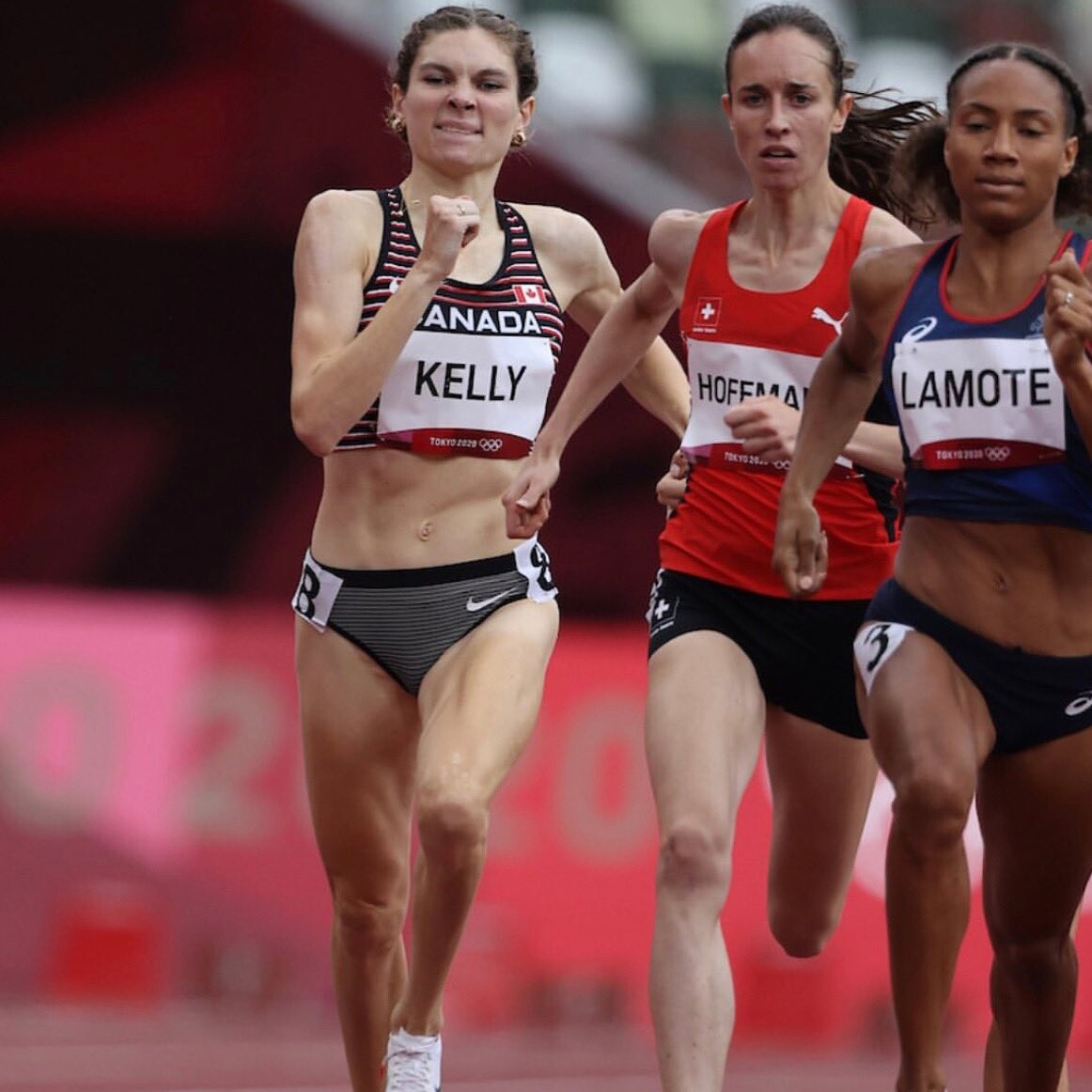
Recover and reflect
Your body and mind need some time to recover, even if you feel like you didn’t run your best. While opinions (and your training schedule) will differ on how much time to take off, experts agree off-season recovery is vital to staying healthy and injury-free. Take a few days or weeks to focus on lower-impact movement for your body (cycling or swimming), or take some full extra rest days. Focus on getting adequate (even extra) sleep and nutrition.
Pinpoint both successes and challenges
Give yourself credit for things you did well, particularly process-based goals, like getting up early twice a week to run, or learning more about nutrition. If you didn’t have any process goals it’s still worth noting what parts of your training you excelled at and what was a struggle. If time–management was an issue, make a note if it without berating yourself. You’re doing this to improve, not to make yourself feel bad.
Don’t be afraid to tackle your weaknesses
Once you’ve taken a good look at your season and given your body some time to recover, explore ways you can improve your weaknesses. We often do the most work on the aspects of running that we excel at–if you love hill sprints, you’re less likely to find an excuse not to do them, and you end up becoming very strong at running quickly up ascents.
Look at your weaknesses as future strengths. Really dislike speedwork? Know that if you stop avoiding it, it will get easier and you will become a better athlete. Embracing a weak area can be fun once you get past the initial avoidance–you’ll be rewarded as you improve.
Remember why you run
If you’re struggling to reset after a tough race or season, come back to the basics. Remind yourself why you started, and take some time to run for fun. If you started running because you felt good moving your body, find ways to bring training back to that focus.
That could mean short, easy runs with friends for a few weeks. If that doesn’t get you out the door, maybe you need to do some feel-good activities that aren’t running-related until you feel that itch to lace up again. Know that it will come back, and sometimes a break and some time to reflect is exactly what your body is asking for.
There are no hard and fast rules that will work for everyone, but easing the pressure you place on yourself during racing season, focusing on sleep, drinking plenty of water and dialing in nutrition, and bringing your running game back to fun and simple movement are great ways to begin rebuilding.
Remind yourself that you want to be running for years to come, and putting in the recovery time (even when it’s hard to do so) is vital to years of healthy training and racing.
(09/29/2022) ⚡AMPby Running Magazine
Canada’s fastest 90-year-old claims another national masters record
On Sunday, London, Ont. runner Canio Polosa, who currently holds the designation of Canada’s fastest 90-year-old, set the Canadian masters record over one mile, clocking 11:25.26. In fact, Polosa is the first man over 90 ever to tackle the challenge in a sanctioned race.
Before the race, Polosa told a reporter he was hoping to finish in around 10 minutes. He finished just over that, but was the first 90-year-old to set this mark, according to Canadian Masters Athletics.
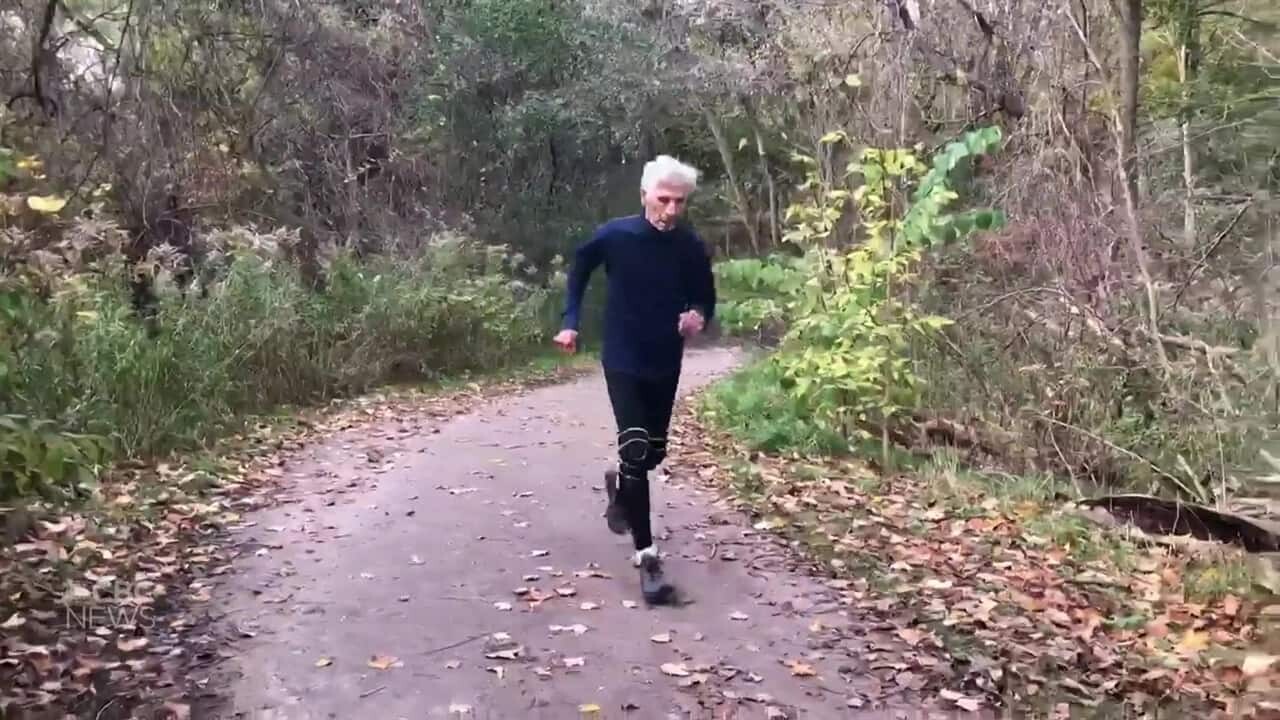
Last fall, Polosa set the 90+ 5K Canadian record of 36:30 and followed up his performance with another Canadian record over 8 km and 10K in the spring. “I had a good race yesterday,” says Polosa. “I was happy to have the support of my wife, Lynne, and the enthusiasm from local runners too.”
In a post-race interview, Polosa said he was glad the mile was over with, but happy with his performance, given his recent hiccups in training. After setting the three age-group records earlier this spring, Polosa was eager to run a half-marathon in the fall. He was a month into his training when Lynne noticed he was losing some muscle mass. “He was training around 15 km several times a week, but was not fuelling enough for his runs,” Lynne says.
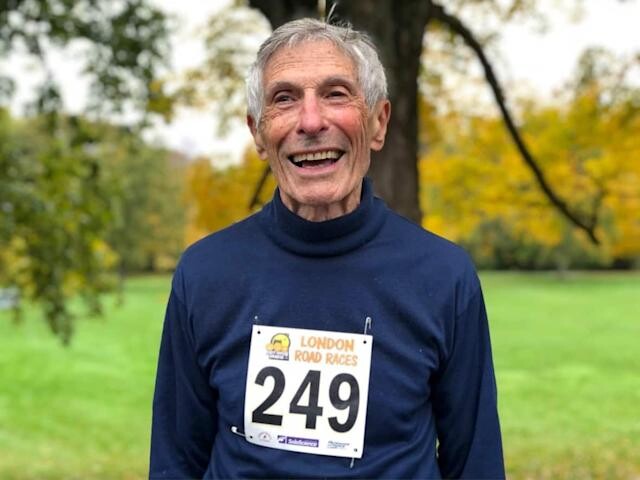
Unfortunately, Polosa halted his half-marathon training to figure out his nutrition. He, his wife and his doctor came to a solution to increase his calorie intake. Since Polosa refuses to drink protein shakes and smoothies, he found a solution with Lynne’s special homemade brownies.
“I make killer brownies,” Lynne claims. “It managed to do the trick.”
Polosa resumed training in mid-August and organized this one-mile race for the end of September. He’s currently training for a 5K at the end of October.
Polosa began running during his retirement, at age 60. “For eight years or so, I ran 10K’s, then I became interested in longer distances,” says Polosa. When he moved to London, he joined the London Pacers Running Club, which inspired him to run three marathons during the ’90s. Now at 93, Polosa continues to run and sets Canadian records in every race he enters.
When he is not running, Polosa enjoys working out at the gym, where he uses the cross-trainer and weight machines.
“I think he gets all his energy from afternoon power naps,” Lynne laughs. “Canio also loves to read about science and the news on the computer.”Most of all, Polosa enjoys spending time with his loved ones and Lynne, his number one fan.
(09/29/2022) ⚡AMPby Marley Dickinson
Jemal Yimel and Ruti Aga, added to 2022 Chicago Marathon elite fields
The 2022 Bank of America Chicago Marathon got a boost in quality yesterday when race organizers announced some significant additions to the elite fields, led by Ethiopian national record holder Jemal Yimer on the men’s side and 2:18:34 marathon Ruti Aga on the women’s side. Aga is the more accomplished marathoner but she is the bigger question mark as she dropped out of New York last year and hasn’t raced at all in 2022 whereas Yimer, who has recorded marathon finishers only in Boston (3rd and 8th the last 2 years), has been on fire on the roads this summer.
Below we show you the new additions to the elite fields (We present them in order from most likely to win to least likely) and after that you will see the full elite fields.
The 2022 Bank of America Chicago Marathon got a boost in quality yesterday when race organizers announced some significant additions to the elite fields, led by Ethiopian national record holder Jemal Yimer on the men’s side and 2:18:34 marathon Ruti Aga on the women’s side. Aga is the more accomplished marathoner but she is the bigger question mark as she dropped out of New York last year and hasn’t raced at all in 2022 whereas Yimer, who has recorded marathon finishers only in Boston (3rd and 8th the last 2 years), has been on fire on the roads this summer.
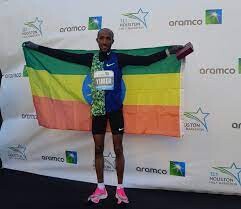
Below we show you the new additions to the elite fields (We present them in order from most likely to win to least likely) and after that you will see the full elite fields.
Men
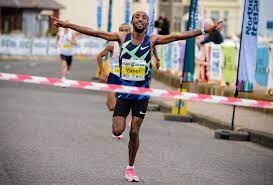
Jemal Yimer (ETH) – 2:08:58 pb (Boston, 2022). 26-years-old. Half marathon ace. 26:54 10,000 pb. Ethiopian national record holder in the half marathon, 58:33, which he ran in Valencia in 2018. Trivial: Did you know 12 Kenyans have run faster than that? His two marathon finishes have been in Boston where he was third in 2021 and 8th this year. In good form this summer. 3rd at Peachtree (27:50), 1st at Boilermaker (42:38), 1st in Larne half in 59:04 on August 28th.
Shifera Tamru (ETH) – 2:05:18 pb. Only 23. Won Seoul in 2019 (2:05:29) and Daegu (2:06:31) earlier this year. 5th in Chicago last year. Has ran under 2:06 in 4 of last 5 marathon.
Bernard Koech (KEN) – 2:04:09 pb (Amsterdamn 2021). 34-years-old. Has 5 times run run under 2:07 incluing twice in the 2:04s including in his debut in Dubain in 2013 without super shoes. Has never won a marathon but was s2nd in 2021 Amsterdam and 2014 Rotterdam. No races at all in 2022.
Guojian Dong (CHN) – 35-years-old. Three-time Olympian (2012, 2016 and 2020 marathon); five-time national champion on the track in the 10,000 and 5000m; marathon personal best 2:08:28 (Berlin, 2019). Chinese record is 2:08:15.
Women
Ruti Aga (ETH) – 2:18:34 pb (2018 Berlin). 28-years old. Hasn’t broken 2:20 in her last 6 marathons since running 2:18 in Berlin but did win Tokyo in 2019 in 2:20:40. DNF in NY last year. No results in 2022. Also 2018 Tokyo Marathon and Berlin Marathon runner-up.
Delvine Meringor (ROU) – 2:24:32 pb. 30-years-old. Former Kenyan. 2022 Los Angeles Marathon champion, and 2022 Romanian national champion in the 5000m and 10,000m.
Sarah Inglis (GBR) – 2:29:41 pb (Chandler, 2020). 31-years-old. 2022 Commonwealth Games competitor in the 5000m and 10,000m.
Elisha Rotich (KEN), Abayneh Degu (ETH), Amanuel Mesel (ERI), Masaya Taguchi (JPN), Jianhua Peng (CHN), Shaohui Yang (CHN), Steven Martinez (USA) have also been added to the 2022 elite open division race. Fidel Aguilar (MEX), Jose Pulido (USA) and Hannah Dederick (USA) have been added to the 2022 elite wheelchair competition.
(09/29/2022) ⚡AMPby Letsrun
Bank of America Chicago
Running the Bank of America Chicago Marathon is the pinnacle of achievement for elite athletes and everyday runners alike. On race day, runners from all 50 states and more than 100 countries will set out to accomplish a personal dream by reaching the finish line in Grant Park. The Bank of America Chicago Marathon is known for its flat and...
more...Shalane Flanagan’s favorite post-run fall meal
The seasons are changing and long runs are getting chillier. U.S. Olympian Shalane Flanagan‘s superfood soup is packed with all the nutrition you want post-run, but with a taste that is full-on comfort food. You’ll want to make an extra batch to freeze and have on hand for busy nights.
Flanagan, a four-time Olympian (twice in the marathon) and the 2017 New York City Marathon champion, may be retired from professional competition, but she’s still a busy coach for Bowerman track club, a mom, and co-author of three cookbooks with her former teammate and friend, Elyse Kopecki.
To make this soup even more quickly, I use spinach instead of kale to add some greens; we top our individual bowls with baby spinach and stir it in (it cooks quickly in the hot soup). Chop everything up the night before, and you’ll have a warm, filling meal simmering in minutes.

Shalane’s superfood soup
Ingredients
2 Tbsp extra-virgin olive oil2 carrots, peeled and diced
2 celery stalks, diced

1 yellow onion, diced
1 sweet potato (yam), unpeeled, diced into 1/2 inch pieces
1 can (13.5 oz) unsweetened coconut milk
1 can (14.5 oz) diced tomatoes
2 tsp fine sea salt
2 Tbsp curry powder
1 cup chopped kale, stems removed (I used baby spinach)
1 can (15 oz) chickpeas (garbanzo beans)juice of 1 lime
Directions
Heat the oil in a large pot over medium-high heat. Add the carrots, celery, onion, and salt and cook, stirring occasionally, until softened but not brown–about five minutes. Add the curry powder and cook, stirring continuously, for 30 seconds, being careful not to let the spices brown.
Add five cups of water, sweet potato, coconut milk, tomatoes, and chickpeas to the pot. Bring to a boil, then reduce the heat, and simmer covered, stirring occasionally, until the sweet potatoes are soft (about 20 minutes). Be careful not to overcook.
Stir in the kale and simmer just until wilted. Turn off the heat and stir in 1 Tbsp of the lime juice. Taste and add more lime juice and salt, if needed.
(09/29/2022) ⚡AMPby Keeley Milne
Mo Farah out of London marathon due to injury
Mo Farah has been forced to withdraw from Sunday's London marathon due to a hip injury with this latest setback raising doubts over the 39-year-old's future in competitive racing.
The four-time Olympic gold medalist was due to run the race for the first time since 2019 after making a return to the track in a failed attempt to compete at last year's Olympics in Tokyo.
Farah did return to form on the road by winning the "Big Half" -- a London half marathon -- earlier this month.
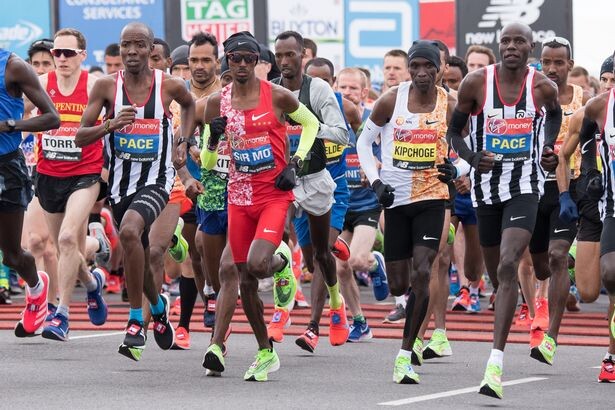
"I've been training really hard over the past few months and I'd got myself back into good shape and was feeling pretty optimistic about being able to put in a good performance," said Farah in a statement issued by London marathon organizers on Wednesday.
"However, over the past 10 days I've been feeling pain and tightness in my right hip. I've had extensive physio and treatment and done everything I can to be on the start line but it hasn't improved enough to compete on Sunday."

He added: "It's really disappointing to have to withdraw after a good last few months and after my win at The Big Half but also because I love racing in front of my home crowd in London who always give all of us athletes such amazing support."
Farah has never won the London marathon in three previous attempts, with his best finish coming in 2018 when he was third.
Ethiopian reigning champion Sisay Lemma and his compatriot Kenenisa Bekele, the second-fastest marathon runner of all time, are among the favorites for the men's race.
Kenya's Eliud Kipchoge is not running after smashing his own world record by 30 seconds at the Berlin marathon last Sunday.
(09/28/2022) ⚡AMPTCS London Marathon
The London Marathon was first run on March 29, 1981 and has been held in the spring of every year since 2010. It is sponsored by Virgin Money and was founded by the former Olympic champion and journalist Chris Brasher and Welsh athlete John Disley. It is organized by Hugh Brasher (son of Chris) as Race Director and Nick Bitel...
more...London Marathon to host Eliud Kipchoge as special guest
Eliud Kipchoge, who smashed his own marathon world record in Berlin on Sunday is expected here this weekend to present medals to the winners of the age group championships events in the new TCS Mini London Marathon on Saturday, the day before the TCS London Marathon, organisers have announced.
In a statement, the TCS London Marathon said Kipchoge — the four-time London Marathon champion who clocked two hours, one minutes and nine seconds at the BMW Berlin Marathon to take 30 seconds off the world record he set in the same race in 2018 — will present the medals to the UK’s top young athletes racing over the final 2.6 kilometres of the famous course.
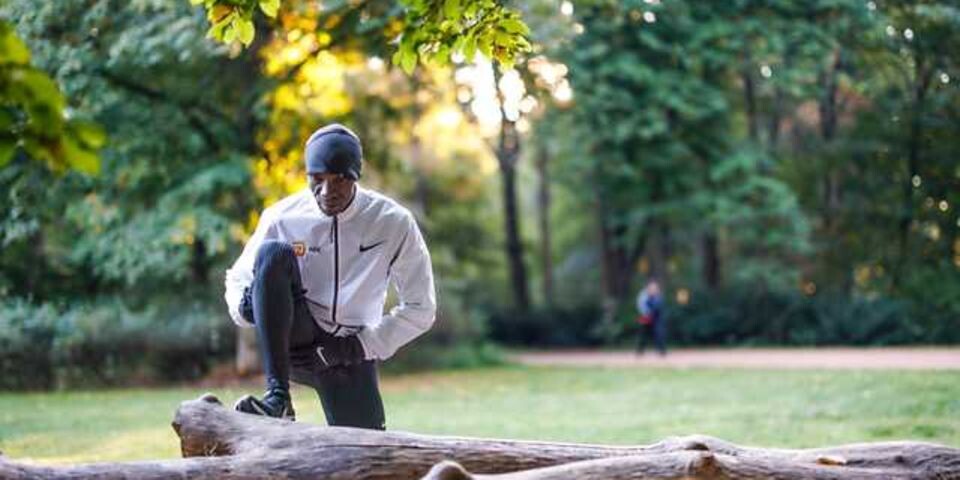
“This year is a landmark one for the TCS Mini London Marathon. The first edition of the new mass participation TCS Mini London Marathon follows the championships races on Saturday, when thousands of children and young people of all abilities, aged from four to 17, will take part in either 2.6K or one-mile events on the same finishing stretch of the TCS London Marathon course,” the statement said.
“I really support the initiative of the TCS London Marathon to promote running at all ages. I like running to be a family activity since running is life. It will bring joy, happiness and health to our children, who are the future, so let’s all embrace this,” Kipchoge, who is an Ambassador for the TCS Mini London Marathon, said.
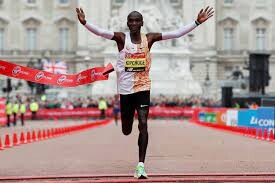
GOAT of marathon
Hugh Brasher, Event Director of the TCS London Marathon, said: “We are thrilled that Eliud, our four-time champion, will be with us this weekend. He is, without doubt, the GOAT of marathon running and will be a huge inspiration to everyone taking part in the TCS Mini London Marathon on Saturday.”
(09/28/2022) ⚡AMPby Ayumba Ayodi
TCS London Marathon
The London Marathon was first run on March 29, 1981 and has been held in the spring of every year since 2010. It is sponsored by Virgin Money and was founded by the former Olympic champion and journalist Chris Brasher and Welsh athlete John Disley. It is organized by Hugh Brasher (son of Chris) as Race Director and Nick Bitel...
more...Here’s why racing a team event will make you a better runner, racing with a friend or several will revitalize the way you approach competition
Either you love running in groups or you prefer to do most of your runs solo–most runners seem to have a preference. Even if you’re a die-hard solo runner, entering a race as a duo or team of several will be a game-changer.
I enjoy my alone time, and with the exception of heading out to our local parkrun or community events, I lace up and train by myself. Many of the races I enter have team options, but I generally run solo. To wrap up the summer trail racing season this year, my partner and I decided to race The Lone Wolf, a last-man-standing looped-course race on the beautiful trails of Fernie, B.C.
I learned more from running with my partner than from any other race this year. Here’s why you should try a team event, even (or especially) if it means stepping outside your comfort zone.
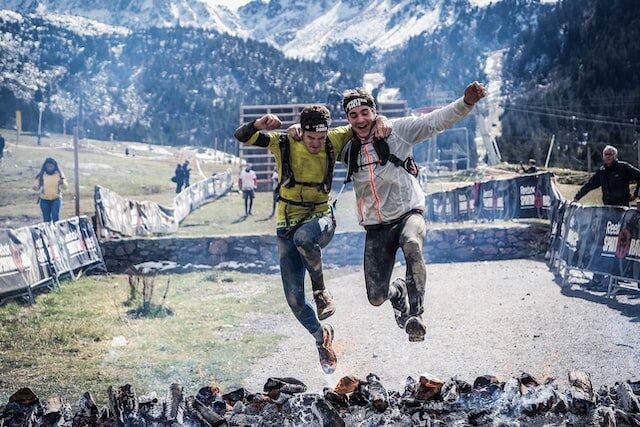
You’ll be inspired by your teammate(s) and connect to the larger community
I know toeing the line as a solo racer is motivating in itself, and you might be wondering why a team effort would be different. Many people at the event were part of the ultratrail community I run in regularly, so it wasn’t a whole new crowd. It was, however, a new perspective; I had no idea how my husband and I would run as a team.
Running as a team changed my approach to the race and the people within it. I had a whole new set of competitors to get to know, and it was fun to watch them interact and try to guess how many loops both team members could manage. I wasn’t obsessing over pace and timing, so I was able to take the time to connect with different, fascinating people at the race. As always when connecting with new runners, I learned from them–and am already looking forward to crossing paths with them again.

As part of a team, you need to focus on the process rather than the results
Stepping into a team event means giving up a substantial amount of control over the outcome. If you’ve experienced a few races, you’ve probably had one that didn’t go as planned, and after a race like that, many of us go over what went wrong and how we could develop skills to avoid those problems in the future.
On a team, you truly have no idea how the race will pan out for your teammate or group members, so you’re forced to give up that PB mentality and focus on how you can make the race flow more smoothly for all involved.
Instead of worrying about whether my team was going to blow everyone away, I had to stay on top of the few things I could control. The race we entered required one team member to be on the starting line every hour on the hour (backyard ultra style), so I needed to be ready to switch out my partner, along with providing encouragement and trying to imagine what they might need when they finished a loop. My role as a runner shifted to also being that of a fan and crew member, and as a result, I had more fun than I expected.
You’re guaranteed to learn things you can incorporate into your solo racing
The skills you learn through teamwork will be useful when you head back into a race on your own. Remembering the importance of being dialled into the process rather than the result is something most runners should work on. Entering each race you run with a mindset intent on encouraging others can actually help you become a faster, more efficient athlete (and science backs this up).
After a few tough races, trying something different at the end of the season was revitalizing. A team event lessened the pressure I usually place on myself, so I wasn’t as nervous throughout the race, and I was perfectly content with whatever outcome our team had–the goal was to have fun.
Many regular runners have personal goals to beat every time they race, and it can be a relief to jump into something where the only true goals are connecting with others, having a blast, and moving your body. I can’t wait to do it again.
(09/28/2022) ⚡AMPby Keeley Milne
Trio of fast women to compete in Frankfurt Marathon
Sally Kaptich heads the line-up for the elite women's field for the Mainova Frankfurt Marathon on October 30. The Kenyan tops the list of fast athletes with her best of 2:21:06 which she achieved in Berlin three years ago. The race organizers expect around 12,000 participants for the 39th edition of the Mainova Frankfurt Marathon with around 20,000 competitors in total, including events held in conjunction with the main event. This historic race is one of the Elite Label Road Race events, a distinction awarded by World Athletics, the international governing body of the sport. Entries can still be obtained at www.frankfurt-marathon.com
Following the recent announcement of the first wave of competitors for the men’s elite field, the organizers have now announced a number of women contenders for the title. Three among this elite group have personal bests under 2:22. With this news the Mainova Frankfurt Marathon, resuming after an enforced interruption of two years because of the Covid pandemic, has gone close to regaining the quality level of its previous women’s elite fields.
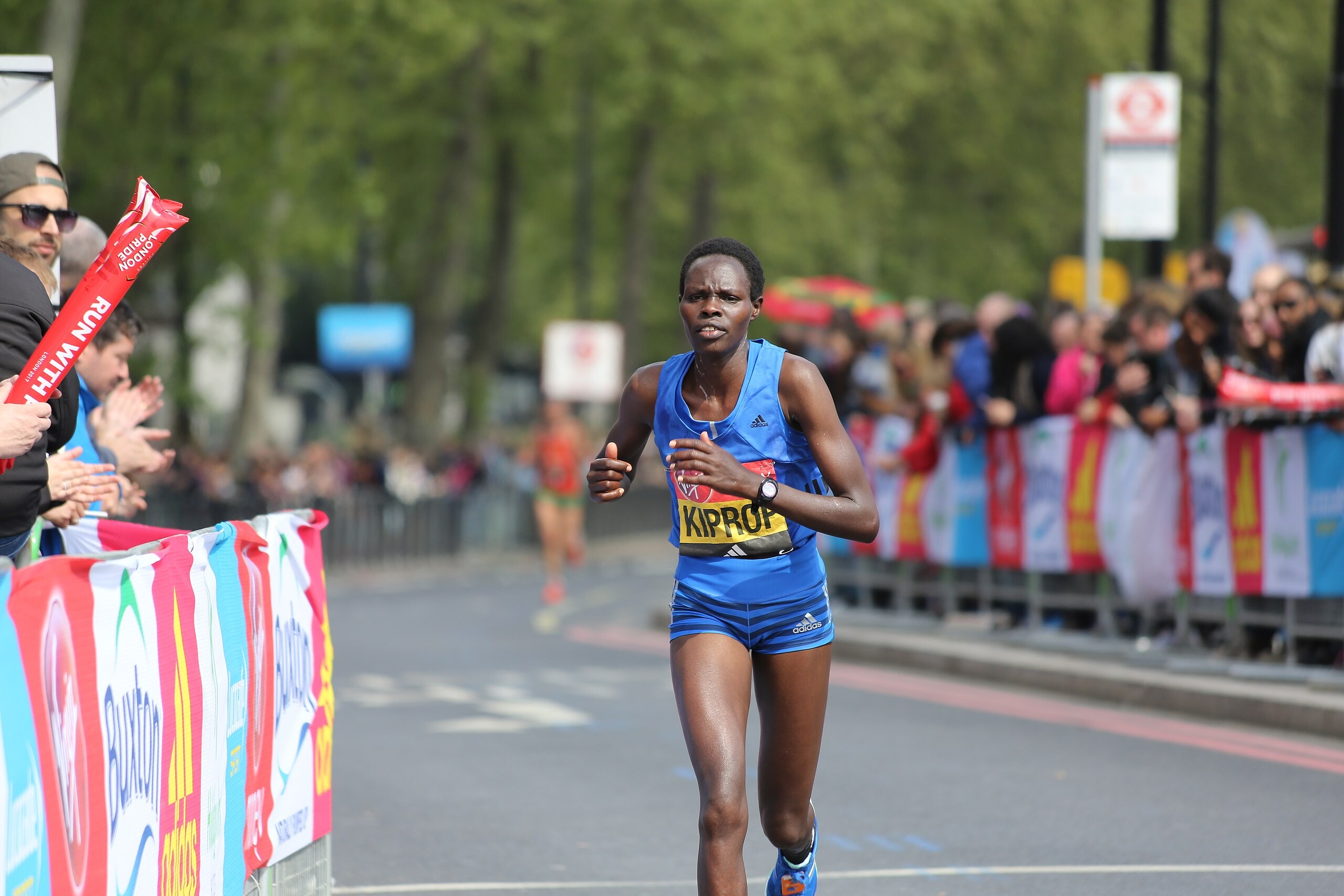
“With three runners who have already run under 2:22, we have a very strong women’s field on the start line,” said the Race Director Jo Schindler. “We’ve noted the interest shown by top runners in the Mainova Frankfurt Marathon. Despite the enforced break because of the pandemic, the race continues to enjoy a strong reputation and runners know that we can offer a course and atmosphere which make setting personal bests a real possibility. Many elite athletes as well as mass runners have broken records or set personal bests in Frankfurt.”
Sally Kaptich comes to Frankfurt as an athlete who achieved third place in Berlin in 2019 where the 36-year-old ran what remains her personal best of 2:21:06. The Kenyan, who also has a seventh place in the 10,000m at the 2013 World Championships to her credit and a bronze medal on the road at the World Half Marathon Championships the following year, ran strongly following her Berlin performance to finish fourth in Tokyo with 2:21:42, six months after Berlin.
Her fellow Kenyan Helah Kiprop has still more laurels to her credit, as well as a best of 2:21:27. She finished second at the World Championship Marathon in Beijing in 2015 and won marathons in Seoul in 2014 and Tokyo in 2016, the latter being where she ran her personal best. This year Kiprop was back in action and winning the Copenhagen Marathon in 2:24:10. Now 37, she knows the Frankfurt course well, having run what was then her fastest marathon of 2:27:14 in 2014 when she finished fifth.
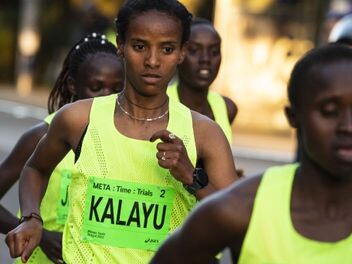
The third runner on the Frankfurt start list with a best of under 2:22 will be Yeshi Kalayu Chekole. The Ethiopian improved her best to 2:21:17 for third place at the Seville Marathon in February. Also worth noting is her compatriot Meseret Abebayahau. She ran her fastest marathon by over five minutes to finish second in 2:25:18 in Madrid in spring. The improvement was all the more impressive since she had never broken 2:30 previously.
More Information and online entry are available at: www.frankfurt-marathon.com
(09/28/2022) ⚡AMPby Races News Service
Mainova Frankfurt Marathon
Frankfurt is an unexpectedly traditional and charming city, with half-timbered buildings huddled in its quaint medieval Altstadt (old city), cosy apple wine taverns serving hearty regional food, village-like neighbourhoods filled with outdoor cafes, boutiques and street art, and beautiful parks, gardens and riverside paths. The city's cache of museums is second in Germany only to Berlin’s, and its nightlife...
more...Kenyan marathoner Emmanuel Saina faces three-year doping ban
One of Kenya’s top marathon-distance athletes, Emmanuel Saina, has been sanctioned with a three-year ban from competition for doping, the Athletics Integrity Unit (AIU) announced Monday.
With a marathon PB of 2:05:21 from the 2018 Buenos Aires International Marathon (where he also set the South American all-comers record), Saina was the 16th fastest marathon runner in the world that year, and when he last ran officially at the 2021 Rotterdam Marathon his 2:05:51 finish placed him 40th in the world. Saina won the 2021 Honolulu Marathon in 2:14:30, in race that featured Canadian Olympian Lanni Marchant taking the win on the women’s side.
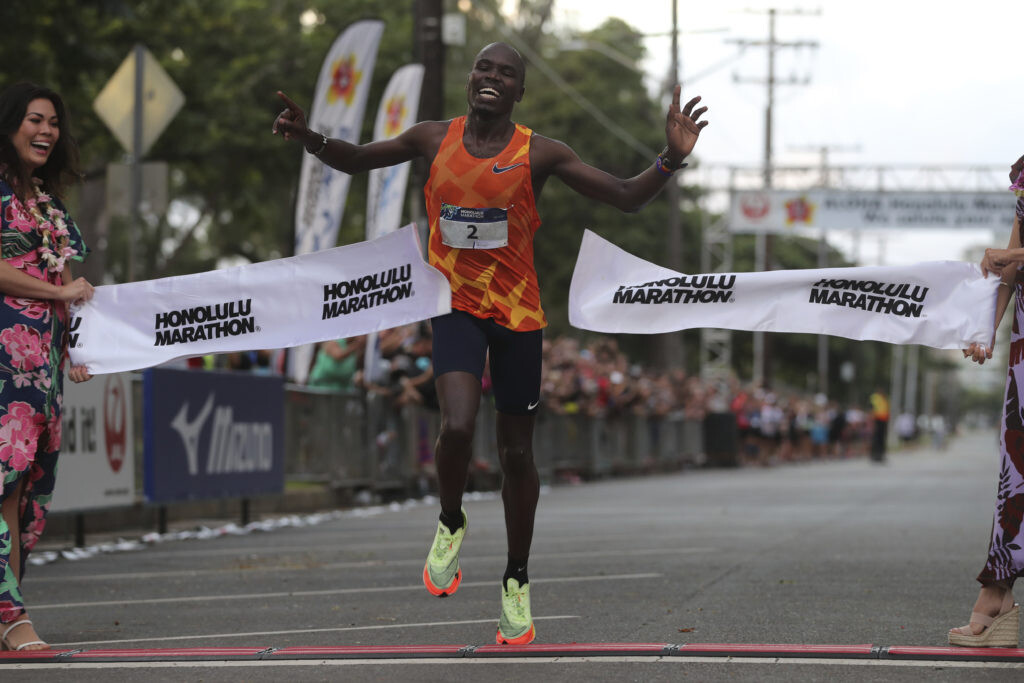
The AIU requested an out-of-competition sample from the athlete in late August, resulting in a positive test for 19-norandrosterone (19-NA), a metabolite contained in nandrolone.
In early September, the AIU notified Saina of the findings of his sample and his violation of the World Anti-Doping Agency’s rules. Saina was also informed of his rights in this situation, which includes the option of admitting to the violation and benefiting from a one-year reduction to his automatic four-year sentence. The AIU received a form of admission and acceptance of consequences signed by Saina on Sept. 17.
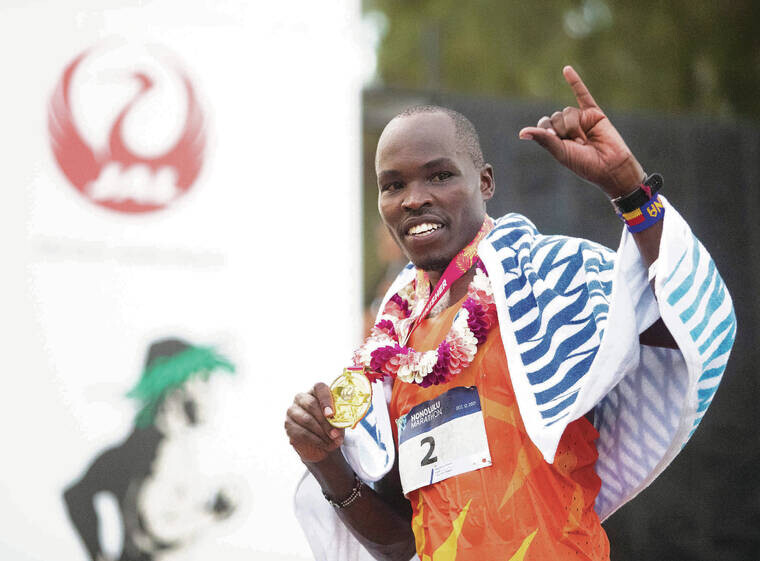
Because of Saina’s early admission, his sentence will receive a one-year reduction, resulting in a period of ineligibility of three years beginning Sept. 9, 2022, and the disqualification of his results since Aug. 17, 2022, including the forfeiture of any titles, awards, medals, points prizes and appearance money. Saina waived his right to have a tribunal or to appeal.
The performance-enhancing nandrolone is also what former American Olympian Shelby Houlihan was sanctioned for in 2021. Houlihan contested her ban, arguing that the substance came from pig offal contained in a burrito she ate the day before her out-of-competition test.
The CAS did not accept her explanation and upheld the AIU’s charge. Houlihan also submitted a hair test and a lie detector test, both supporting her innocence, but these were found to be inadequate.
(09/28/2022) ⚡AMPby Keeley Milne
Natasha Wodak smashed Canadian marathon record in Berlin
The 40-year-old from North Vancouver, B.C., who grew to love training for the marathon, shattered the Canadian record in that distance in Berlin on Sunday.
Wodak finished 12th at the Berlin Marathon in two hours 23 minutes 12 seconds, lowering Malindi Elmore's record of 2:24.50 set in 2020.
Wodak, who was 13th in the marathon at the 2020 Tokyo Olympics, was a 10,000-metre specialist on the track for the better part of a decade, and said she didn't enjoy her first marathon experience in 2013.
"I was kind of like 'I don't know how much I want to do this,'" Wodak said.
"But as I've gotten older, and become a more disciplined runner, and I'm in a better place in my life, I really enjoy the training. And I've had a lot of fun with every marathon build, and challenging myself. Because it's new, right? The move to the marathon was a lot of fun, doing new training and challenging myself, and I really enjoyed it. And I think that's a huge part of why I've been successful, is because I really liked the training."
Ethiopia's Tigist Assefa won Sunday's race in 2:15.37. Two-time Olympic champion Eliud Kipchoge of Kenya broke his own men's marathon world record to win the men's race in 2:01.09.
Wodak, who is coached by Trent Stellingwerff, said her recent training indicated she could run 2:24.
On Sunday, she ramped up the pace over the 42.195-kilometre course. Her second half was more than a minute faster than her first.
"I knew at 35K, because we had significantly dropped the pace through the last 5K, that we were well under Canadian record pace," Wodak said, moments before sitting down to a celebratory drink with her family.
"I had a pacer, and he just was like, ‘Let's go, let's go.’ And I just kept on him. I was tired over the last 5K, I was working really, really hard. But I knew that was just because we were running fast.
"I didn't think that I could do 24.12 . . . when I saw that time at the finish line, I was like, 'oh, wow, what?'"
Wodak's record comes amid a surge in Canadian women's distance running.
The Canadian record has dropped five minutes in the past nine years, although Wodak noted the huge improvements in shoe technology have seen distance running times plummet across the board in recent years.
Still, Elmore was ninth in the Tokyo Olympics, and the battle between the Canadian women to make that team was fierce.
"It's really exciting to be a part of women's distance running right now," said Wodak. "We just sort of are feeding off of each other. If Malindi hadn't run 2:24.50, I don't know if I would have set my goal to run 2:24 flat.
"So now Malindi is going to go run Toronto (Waterfront Marathon on Oct. 16), and she's gonna be like, 'OK, I want to run sub-2:23.' We just keep lowering the bar and it’s great when we all build each other up. She wished me good luck (Saturday) and said, 'I hope you have an amazing race.' That's a really cool run community to be a part of when we all support each other."
Elmore tweeted on Sunday, "Congrats Natasha! Huge impressive run today!"
Wodak planned to vacation in Germany with her family. She doesn't plan to race for awhile, and is considering competing in the Canadian cross-country championship Nov. 26 in Ottawa.
(09/27/2022) ⚡AMPBMW Berlin Marathon
The story of the BERLIN-MARATHON is a story of the development of road running. When the first BERLIN-MARATHON was started on 13th October 1974 on a minor road next to the stadium of the organisers‘ club SC Charlottenburg Berlin 286 athletes had entered. The first winners were runners from Berlin: Günter Hallas (2:44:53), who still runs the BERLIN-MARATHON today, and...
more...London Marathon chief urges Mo Farah to take inspiration from Kipchoge
Mo Farah has been urged not to make any hasty decisions about retirement and to take inspiration from the world record holder Eliud Kipchoge when he returns to run the London Marathon on Sunday.
Farah, who turns 40 in March, has looked a shadow of his best over the past couple of seasons. However the London Marathon’s event director, Hugh Brasher, said it would be wrong to write him off after a couple of poor performances.
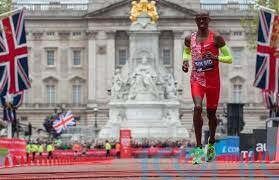
“I think Eliud is proving aged 37 and running a PB that the age barriers that we used to think existed do not necessarily now exist,” Brasher said.
“I think that what we should be doing is allowing Mo time to decide what he wants. One bad performance, a couple of bad performances, do not mean that people should write somebody off. He is an absolutely superb athlete and he will always be welcome back.
“I hope he runs fantastically well but you never can tell because marathon running is the hardest thing. If you’re 99% not 100% you won’t get away with it – it’s really, really hard.”

Farah has given no indication he plans to retire yet, despite failing to qualify for the Olympics last year or any major championships in 2022. And Brasher made it clear he would be delighted for him to run in London next year – and also promised him a special retirement send-off when he decided to finally quit.
“The door will always be open to Mo – he is Britain’s greatest endurance athlete in terms of number of Olympic gold medals and world championship gold medals. We have a long history with him, going back to the mini marathon through the fact that we supported him through his university time, which is something that’s not publicised.
“When you look at what happened with Paula Radcliffe, her final run was in the London Marathon in 2015. It was the most incredible send-off that I think that the British crowd were ever able to give any athlete and they came out in their droves. Whenever Mo decides to do his last marathon we would absolutely love it to be London. I think the crowd would love it. He should be celebrated.”
(09/27/2022) ⚡AMPby Sean Ingle
TCS London Marathon
The London Marathon was first run on March 29, 1981 and has been held in the spring of every year since 2010. It is sponsored by Virgin Money and was founded by the former Olympic champion and journalist Chris Brasher and Welsh athlete John Disley. It is organized by Hugh Brasher (son of Chris) as Race Director and Nick Bitel...
more...

